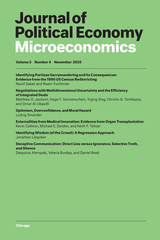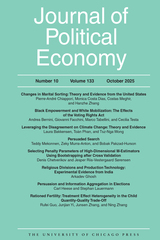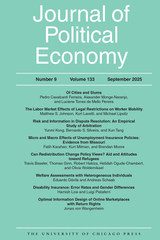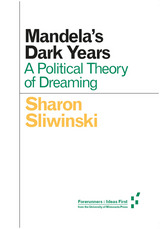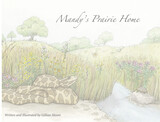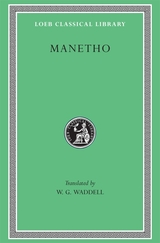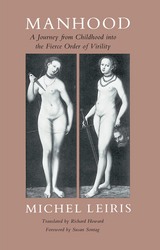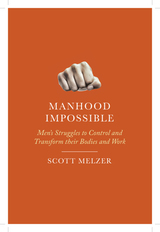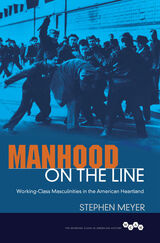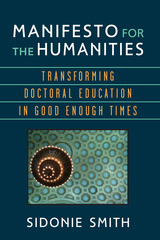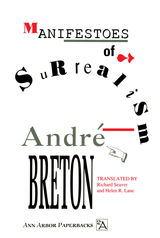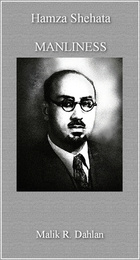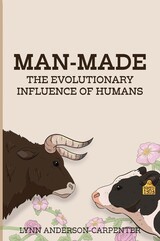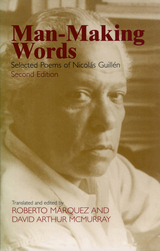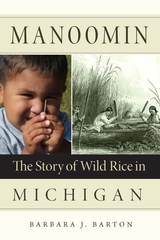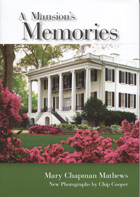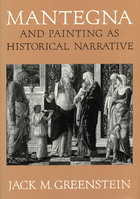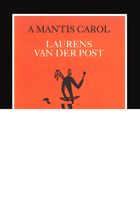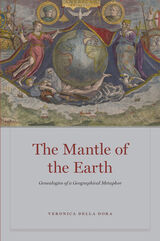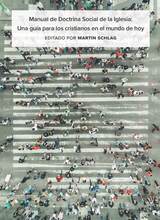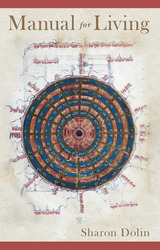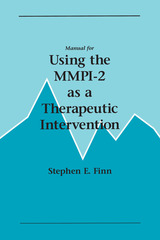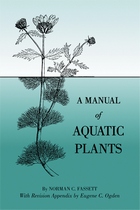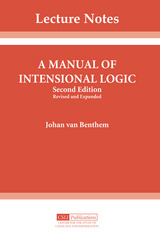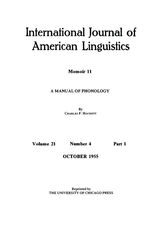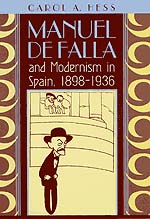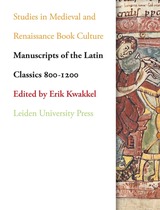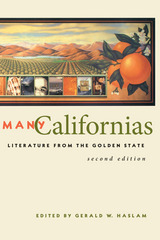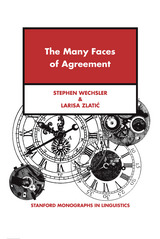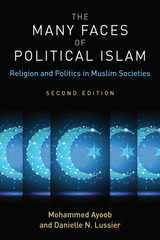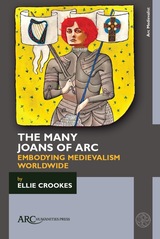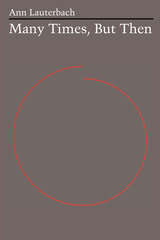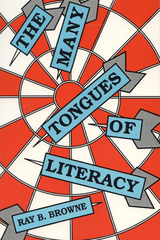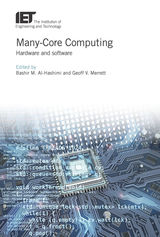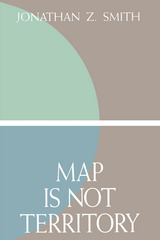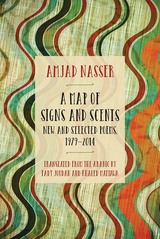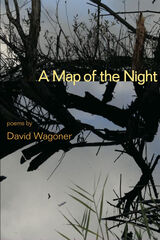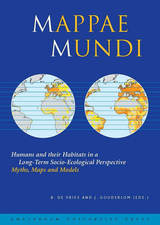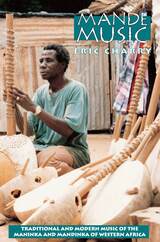 Mande Music: Traditional and Modern Music of the Maninka and Mandinka of Western Africa
Eric Charry
University of Chicago Press, 2000 With Mande Music, Eric Charry offers the most comprehensive source available on one of Africa's richest and most sophisticated music cultures. Using resources as disparate as early Arabic travel accounts, oral histories, and archival research as well as his own extensive studies in Mali, Guinea, Senegal, and the Gambia, Charry traces this music culture from its origins in the thirteenth-century Mali empire to the recording studios of Paris and New York. He focuses on the four major spheres of Mande music—hunter's music, music of the jelis or griots, jembe and other drumming, and guitar-based modern music—exploring how each evolved, the types of instruments used, the major artists, and how each sphere relates to the others. With its maps, illustrations, and musical transcriptions as well as an exhaustive bibliography, discography, and videography, this book is essential reading for those seeking an in-depth look at one of the most exciting, innovative, and deep-rooted phenomena on the world music scene. A compact disc is available separately.
Mandela's Dark Years: A Political Theory of Dreaming
Sharon Sliwinski
University of Minnesota Press, 2015 Inspired by one of Nelson Mandela’s recurring nightmares, Mandela’s Dark Years offers a political reading of dream-life. Sharon Sliwinski guides the reader through the psychology of apartheid, recasting dreaming as a vital form of resistance to political violence, away from a rational binary of thinking.
This short, provocative study blends political theory with clinical psychoanalysis, opening up a new space to consider the politics of reverie. Forerunners is a thought-in-process series of breakthrough digital works. Written between fresh ideas and finished books, Forerunners draws on scholarly work initiated in notable blogs, social media, conference plenaries, journal articles, and the synergy of academic exchange. This is gray literature publishing: where intense thinking, change, and speculation take place in scholarship.
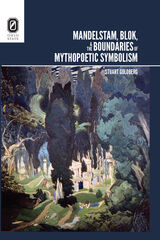 Mandelstam, Blok, and the Boundaries of Mythopoetic Symbolism
Stuart Goldberg
Ohio State University Press, 2011 “Mandelstam had no teacher,” marveled Anna Akhmatova, reflecting on his early maturity and singularity. But Mandelstam himself spoke of the need and even duty to study a poet’s literary roots. So how did this consummately complex, compelling, multi-resonant poet navigate and exploit the burden of the Russian Symbolist movement from which he emerged? How did this process change and augment his poetry? Through a series of illuminating readings, Stuart Goldberg explores the ongoing role that the poetry of Russian Symbolism played in Osip Mandelstam’s creative life, laying bare the poet’s productive play with distance and immediacy in his assimilation of the Symbolist heritage. At the same time, Mandelstam, Blok, and the Boundaries of Mythopoetic Symbolism presents the first coherent narrative of the poet’s fraught relationship with Alexander Blok, the most powerful poetic voice among the Symbolists. This dialogue, which was largely one-sided, extended beyond poetic intertext into the realms of poetics, charisma, and personality. Goldberg’s study pushes theoretical boundaries, exploring the juncture between pragmatics and intertext, adapting and challenging Bloom’s anxiety of influence theory, and, ultimately, tracing a shift in the nature of sincerity and authenticity that divided poetic generations.
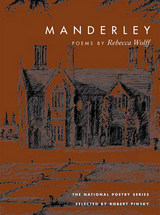 Manderley: POEMS
Rebecca Wolff
University of Illinois Press, 2001 Selected by Robert Pinsky as one of five volumes published in 2001 in the National Poetry Series
In the Manderley of Rebecca, Daphne du Maurier's forbidding haven of mocking ghosts and secrets that refuse to remain buried, nothing is as it seems. So in this stunning debut collection by Rebecca Wolff, cities, partners, mothers, sisters, friends, and perfect strangers all disguise their true faces, while they who seek connection are "transported from one great gaping / hole in the fabric / of our knowledge to another."
No passage is too dark, no garden too tangled for the troubled dreamer of Manderley. Wolff turns a quicksilver gaze on a fluid world where both the real and the imaginary are transfigured. Tempering steely candor with a sophisticated delight in wordplay, these poems turn on a dime from the sensual to the eerie, the resigned to the hopeful, the comforting to the shocking. Each poem weaves together layers of dream, remembrance, and fantasy, distilling from romantic excess a gritty, spare language of truth-telling and surprise
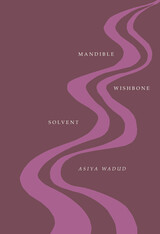 Mandible Wishbone Solvent
Asiya Wadud
University of Chicago Press, 2024 A poetry collection that brings together word, image, and sound to reflect on fractured, fragmentary states of being.
The poetry of Mandible Wishbone Solvent is situated in the space of bridges, fragmentary overlays, spectral reach, and the desire to keep reaching. Asiya Wadud’s poems engage in this act, not to stake a claim or to fasten themselves, but to hold fragments together in order to offer possibilities for connection and extension. Throughout the collection lies an acknowledgment that any hold will drift, meander, and find new paths, with each separation making space for new entanglements. Drawing on a keen interest in tactility and ekphrasis, Wadud mines the repetition and extension that comes with any fractured state of existence and considers the nature of a residual and roving we.
Following this selection of lyrical, ekphrastic, fragmented poems, the book concludes with two prose pieces that dwell on the concepts of “isthmus” and “drift,” respectively, which offer further grounds for contemplation and provide a frame for the poems.
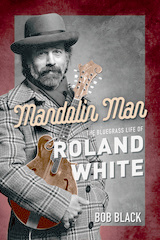 Mandolin Man: The Bluegrass Life of Roland White
Bob Black
University of Illinois Press, 2022 A No Depression Most Memorable Music Book of 2022 Roland White’s long career has taken him from membership in Bill Monroe’s Blue Grass Boys and Lester Flatt’s Nashville Grass to success with his own Roland White Band. A master of the mandolin and acclaimed multi-instrumentalist, White has mentored a host of bluegrass musicians and inspired countless others. Bob Black draws on extensive interviews with White and his peers and friends to provide the first in-depth biography of the pioneering bluegrass figure. Born into a musical family, White found early success with the Kentucky Colonels during the 1960s folk revival. The many stops and collaborations that marked White's subsequent musical journey trace the history of modern bluegrass. But Black also delves into the seldom-told tale of White's life as a working musician, one who endured professional and music industry ups-and-downs to become a legendary artist and beloved teacher. An entertaining merger of memories and music history, Mandolin Man tells the overdue story of a bluegrass icon and his times.
Mandy's Prairie Home
Gillian Moore
Michigan Publishing, 2023 This book was created for the course titled “Restoration Ecology” taught by Sara Adlerstein at the University of Michigan School for Environment & Sustainability. The objective was to create a book that uses the topics learned in class to teach young readers about the importance of environmental stewardship—respecting and caring for Earth and the diversity of life it sustains.
Manetho
Manetho
Harvard University Press Ancient Egyptian history in Greek.
Manetho was an Egyptian of the third century BC. Born probably at Sebennytus in the Delta, he became a priest or high priest at Heliopolis. Apparently he and a Greek Timotheus did much to establish the cult of Serapis in Egypt. Eight works or parts of works were ascribed to him, all on history and religion and all apparently in Greek: Aegyptiaca, on the history of Egypt; The Sacred Book on Egyptian religion; An Epitome of Physical Doctrines; On Festivals; On Ancient Ritual and Religion; On the Making of Kyphi (an incense); The Criticisms of Herodotus; and the spurious Book of Sôthis. These survive only as quoted by other writers. This volume also contains the doubtful Kings of Thebes (in Egypt) and the Old Chronicle.
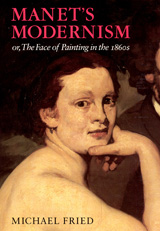 Manet's Modernism: or, The Face of Painting in the 1860s
Michael Fried
University of Chicago Press, 1996 Manet's Modernism is the culminating work in a trilogy of books by Michael Fried exploring the roots and genesis of pictorial modernism. Fried provides an entirely new understanding not only of the art of Manet and his generation but also of the way in which the Impressionist simplification of Manet's achievement had determined subsequent accounts of pictorial modernism down to the present. Like Fried's previous books, Manet's Modernism is a milestone in the historiography of modern art.
"Beautifully produced. . . . [Fried's] thought is always stimulating, if not provocative. This is an important book, which all students of modernism, in the broadest sense, will find rewarding."—Virginia Quarterly Review
"An astonishing piece of scholarship that will cause readers to rethink their understanding of Manet's influence, ambition, and achievement."—Gary Michael, Bloomsbury Review
"An audaciously brilliant book, long awaited and as essential reading for philosophers as for art historians."—Wayne Andersen, Common Knowledge
"Art history of the highest originality and distinction."—Arthur C. Danto, New York Times Book Review
 Manet's Silence and the Poetics of Bouquets
James Rubin
Harvard University Press A sense of stillness and silence pervades Manet's painting. His flattened, sometimes fragmented forms appear to exist absentmindedly in a world removed from speech. It is this silence that James Rubin explores in a book that shows us Manet as we see him--naturally, in pictures that articulated their own purely visual terms. In such a sense, this book is about the restoration of the visual to its primacy in art through Manet's painting.
While insisting that Manet's pictures must be given the first and final say in any interpretation, Rubin uses contradictory views of the painter's works--from the present and past--as a context for approaching them. Applying J.L. Austin's notion of the performative, which bridges the gap between language and action or between the painted image and its social effect, Rubin goes beyond past theorists to describe the curious ways in which Manet's paintings act upon us. With these ideas as his guide, he takes us through Manet's work, pointing out the element that are distinctive and consistent, particularly the painter's reliance on a pattern of gazes and the "unique state of undecidability" that this strategy produces. Rubin also examines Manet's relatioship to three of the leading critics of his day--Baudelaire, Zola, and Mallarmé--giving special attention to Mallarmé's appreciation, and eventual use in his poetry, of the paradox between immersion and externality in Manet's oeuvre. Finally, the book uses the image of the bouquet to exemplify Manet's creative poetics through an exploration of his still life.
Filled with revealing insights into Manet's achievevment, this sensitive, informed, and clearly written book goes a long way toward explaining why Manet's paintings continue to fascinate and elude us more than one hundred years after the artist's death.
 Manfred Macmillan: Book One of the Three Magicians Trilogy
By Jirí Karásek ze Lvovic, translated from the Czech and annotated by Carleton Bulkin with an introduction co-authored by Brian James Baer
Amherst College Press, 2024 Decadence meets gothic in Manfred Macmillan (1907), a carefully constructed tale of doppelgangers, magical intrigue, and the rootless scion of a noble house. This annotated, first-ever English translation presents an early queer novel long unavailable except in the original Czech. Author Jiří Karásek ze Lvovic (1871–1951) was a major cultural figure in his native Bohemia and cultivated ties with fellow artists from across Central Europe. In their extensive scholarly introduction, translator Carleton Bulkin and translation scholar Brian James Baer situate the novel within longer histories of gay literature, fascinations with the occult, and the cultural and linguistic politics of so-called peripheral European nations. They persuasively frame Karásek as a queer author and cultural disruptor in the fin de siècle Habsburg space.
Karasék rejected Czech translations of ancient Greek writers that bowdlerized gay themes, and he personally and vigorously defended Oscar Wilde in print, both on the grounds of artistic freedom and of private morality. He also published a cycle of homoerotic poems under the title Sodom, confiscated by the Austrian authorities but republished in 1905 and repeatedly afterward. A colonized subject, a literary decadent, and a sexual outlaw, Karasék’s complex responses to his own marginalization can be traced through his fantastically strange novel trilogy Three Magicians. As the first volume in that series, Manfred Macmillan is a gorgeous, compelling, and important addition to expanding canons of LGBTQI+ literature.
 Manga from the Floating World: Comicbook Culture and the Kibyōshi of Edo Japan
Adam L. Kern
Harvard University Press, 2006 Manga from the Floating World is the first full-length study in English of the kibyôshi, a genre of sophisticated pictorial fiction widely read in late-eighteenth-century Japan. By combining analysis of the socioeconomic and historical milieus in which the genre was produced and consumed with three annotated translations of works by major author-artist Santô Kyôden (1761-1816) that closely reproduce the experience of encountering the originals, Adam Kern offers a sustained close reading of the vibrant popular imagination of the mid-Edo period. The kibyôshi, Kern argues, became an influential form of political satire that seemed poised to transform the uniquely Edoesque brand of urban commoner culture into something more, perhaps even a national culture, until the shogunal government intervened.
Based on extensive research using primary sources in their original Edo editions, the volume is copiously illustrated with rare prints from Japanese archival collections. It serves as an introduction not only to the kibyôshi but also to the genre's readers and critics, narratological conventions, modes of visuality, format, and relationship to the modern Japanese comicbook (manga) and to the popular literature and wit of Edo. Filled with graphic puns and caricatures, these entertaining works will appeal to the general reader as well as to the more experienced student of Japanese cultural history.
 Manga from the Floating World: Comicbook Culture and the Kibyōshi of Edo Japan, Second Edition, With a New Preface
Adam L. Kern
Harvard University Press, 2019 Manga from the Floating World is the first full-length study in English of the kibyōshi, a genre of woodblock-printed comic book widely read in late-eighteenth-century Japan. By combining analysis of the socioeconomic and historical milieus in which the genre was produced and consumed with three annotated translations of works by major author-artist Santō Kyōden (1761–1816) that closely reproduce the experience of encountering the originals, Adam Kern offers a sustained close reading of the vibrant popular imagination of the mid-Edo period. The kibyōshi, Kern argues, became an influential form of political satire that seemed poised to transform the uniquely Edoesque brand of urban commoner culture into something more, perhaps even a national culture, until the shogunal government intervened.
Based on extensive research using primary sources in their original Edo editions, the volume is copiously illustrated with rare prints from Japanese archival collections. It serves as an introduction not only to the kibyōshi but also to the genre’s readers and critics, narratological conventions, modes of visuality, format, and relationship to the modern Japanese manga and to the popular literature and wit of Edo. Filled with graphic puns and caricatures, these entertaining works will appeal to the general reader as well as to the more experienced student of Japanese cultural history—and anyone interested in the global history of comics, graphic novels, and manga.
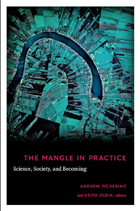 The Mangle in Practice: Science, Society, and Becoming
Andrew Pickering and Keith Guzik, eds.
Duke University Press, 2008 In The Mangle of Practice (1995), the renowned sociologist of science Andrew Pickering argued for a reconceptualization of research practice as a “mangle,” an open-ended, evolutionary, and performative interplay of human and non-human agency. While Pickering’s ideas originated in science and technology studies, this collection aims to extend the mangle’s reach by exploring its application across a wide range of fields including history, philosophy, sociology, geography, environmental studies, literary theory, biophysics, and software engineering. The Mangle in Practice opens with a fresh introduction to the mangle by Pickering. Several contributors then present empirical studies that demonstrate the mangle’s applicability to topics as diverse as pig farming, Chinese medicine, economic theory, and domestic-violence policing. Other contributors offer examples of the mangle in action: real-world practices that implement a self-consciously “mangle-ish” stance in environmental management and software development. Further essays discuss the mangle as philosophy and social theory. As Pickering argues in the preface, the mangle points to a shift in interpretive sensibilities that makes visible a world of de-centered becoming. This volume demonstrates the viability, coherence, and promise of such a shift, not only in science and technology studies, but in the social sciences and humanities more generally. Contributors: Lisa Asplen, Dawn Coppin, Adrian Franklin, Keith Guzik, Casper Bruun Jensen,Yiannis Koutalos, Brian Marick, Randi Markussen, Andrew Pickering, Volker Scheid, Esther-Mirjam Sent, Carol Steiner, Maxim Waldstein
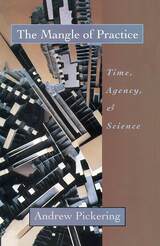 The Mangle of Practice: Time, Agency, and Science
Andrew Pickering
University of Chicago Press, 1995 This ambitious book by one of the most original and provocative thinkers in science studies offers a sophisticated new understanding of the nature of scientific, mathematical, and engineering practice and the production of scientific knowledge.
Andrew Pickering offers a new approach to the unpredictable nature of change in science, taking into account the extraordinary number of factors—social, technological, conceptual, and natural—that interact to affect the creation of scientific knowledge. In his view, machines, instruments, facts, theories, conceptual and mathematical structures, disciplined practices, and human beings are in constantly shifting relationships with one another—"mangled" together in unforeseeable ways that are shaped by the contingencies of culture, time, and place.
Situating material as well as human agency in their larger cultural context, Pickering uses case studies to show how this picture of the open, changeable nature of science advances a richer understanding of scientific work both past and present. Pickering examines in detail the building of the bubble chamber in particle physics, the search for the quark, the construction of the quarternion system in mathematics, and the introduction of computer-controlled machine tools in industry. He uses these examples to address the most basic elements of scientific practice—the development of experimental apparatus, the production of facts, the development of theory, and the interrelation of machines and social organization.
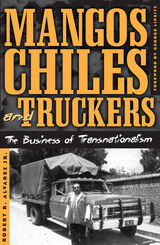 Mangos, Chiles, and Truckers: The Business of Transnationalism
Robert Alvarez Jr.
University of Minnesota Press, 2005 Mangos, Chiles, and Truckers illuminates how local groups and individuals engage the global world and capitalism in creative ways. Robert Alvarez analyzes how the produce and trucking industries in Mexico affect the organization of work, community, and social space for miles on either side of the international border. Taking an ethnographic approach, Alvarez focuses on the impact transnational economic policies like NAFTA have had on growers of mangos and chiles in Mexico, those who transport the produce across the U.S.–Mexico border, and the immigrant communities receiving these goods in the United States.
Contrary to common perceptions in postnational studies, Alvarez shows how the nation-state enacts and connects with the transnational, crossing borders in ways that underwrite new technology and trade. Emphasizing the importance and control of the nation-state in the global process, Mangos, Chiles, and Truckers demonstrates how people make meaning as they struggle with the economic circumstances of their lives, creating cultural traditions and giving new value to old customs and practices.
Robert R. Alvarez Jr. is professor of ethnic studies at the University of California, San Diego.
George Lipsitz is professor of American studies at the University of California, Santa Cruz.
Manhood: A Journey from Childhood into the Fierce Order of Virility
Michel Leiris
University of Chicago Press, 1992 "Not only one of the frankest of autobiographies, but also a brilliantly written book, Leiris' Manhood mingles memories, philosophic reflections, sexual revelation, meditations on bullfighting, and the life-long progress of self-discovery."—Washington Post Book World
"Leiris writes to appall, and thereby to receive from his readers the gift of a strong emotion—the emotion needed to defend himself against the indignation and disgust he expects to arouse in his readers."—Susan Sontag, New York Review of Books
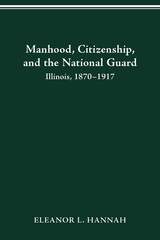 MANHOOD, CITIZENSHIP, AND THE NATIONAL GUARD: ILLINOIS, 1870–1917
ELEANOR L HANNAH
Ohio State University Press, 2007 During the Gilded Age and the Progressive Era, thousands upon thousands of American men devoted their time and money to the creation of an unsought—and in some quarters unwelcome—revived state militia. In this book, Eleanor L. Hannah studies the social history of the National Guard, focusing on issues of manhood and citizenship as they relate to the rise of the state militias. In brief, the National Guard of the late nineteenth and early twentieth centuries is best interpreted as one of a host of associations and organizations that American men of those eras devised to help them negotiate their location and purpose in the strange new world of industrial capitalism. The National Guards brought men from a wide array of regions, ethnicities, races, and economic backgrounds together in a single organization. These men were united by a shared understanding of ideal manhood and civic responsibility that could be expressed through membership in a state militia. Once committed to the power of the word and the image evoked by the term “soldier” to bring diverse men together in one common bond, the men who volunteered their time and money had to give soldiering their serious attention. By 1900 a commitment to soldiering that was founded on shared social needs took on a life of its own and refocused National Guard members on an individualized, technical, professional military training—on a new kind of manhood for a new age. The implications of this book are far-reaching, for it offers historians a fresh look at a long-ignored group of men and unites social and cultural history to explore changing notions of manhood and citizenship during years of frenetic change in the American landscape.
Manhood Impossible: Men's Struggles to Control and Transform Their Bodies and Work
Melzer, Scott
Rutgers University Press, 2018 In Manhood Impossible, Scott Melzer argues that boys’ and men’s bodies and breadwinner status are the two primary sites for their expression of control. Controlling selves and others, and resisting being dominated and controlled is most connected to men’s bodies and work. However, no man can live up to these culturally ascendant ideals of manhood. The strategies men use to manage unmet expectations often prove toxic, not only for men themselves, but also for other men, women, and society. Melzer strategically explores the lives of four groups of adult men struggling with contemporary body and breadwinner ideals. These case studies uncover men’s struggles to achieve and maintain manhood, and redefine what it means to be a man.
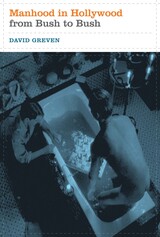 Manhood in Hollywood from Bush to Bush
By David Greven
University of Texas Press, 2009 A struggle between narcissistic and masochistic modes of manhood defined Hollywood masculinity in the period between the presidencies of George H. W. Bush and George W. Bush. David Greven's contention is that a profound shift in representation occurred during the early 1990s when Hollywood was transformed by an explosion of films that foregrounded non-normative gendered identity and sexualities. In the years that have followed, popular cinema has either emulated or evaded the representational strategies of this era, especially in terms of gender and sexuality. One major focus of this study is that, in a great deal of the criticism in both the fields of film theory and queer theory, masochism has been positively cast as a form of male sexuality that resists the structures of normative power, while narcissism has been negatively cast as either a regressive sexuality or the bastion of white male privilege. Greven argues that narcissism is a potentially radical mode of male sexuality that can defy normative codes and categories of gender, whereas masochism, far from being radical, has emerged as the default mode of a traditional normative masculinity. This study combines approaches from a variety of disciplines—psychoanalysis, queer theory, American studies, men's studies, and film theory—as it offers fresh readings of several important films of the past twenty years, including Casualties of War, The Silence of the Lambs, Fight Club, The Passion of the Christ, Auto Focus, and Brokeback Mountain.
Manhood on the Line: Working-Class Masculinities in the American Heartland
Stephen Meyer
University of Illinois Press, 2016 Stephen Meyer charts the complex vagaries of men reinventing manhood in twentieth century America. Their ideas of masculinity destroyed by principles of mass production, workers created a white-dominated culture that defended its turf against other racial groups and revived a crude, hypersexualized treatment of women that went far beyond the shop floor. At the same time, they recast unionization battles as manly struggles against a system killing their very selves. Drawing on a wealth of archival material, Meyer recreates a social milieu in stunning detail--the mean labor and stolen pleasures, the battles on the street and in the soul, and a masculinity that expressed itself in violence and sexism but also as a wellspring of the fortitude necessary to maintain one's dignity while doing hard work in hard world.
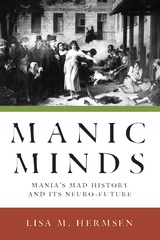 Manic Minds: Mania's Mad History and Its Neuro-Future
Lisa M. Hermsen
Rutgers University Press, 2012 From its first depictions in ancient medical literature to contemporary depictions in brain imaging, mania has been largely associated with its Greek roots, "to rage." Prior to the nineteenth century, "mania" was used interchangeably with "madness." Although its meanings shifted over time, the word remained layered with the type of madness first-century writers described: rage, fury, frenzy. Even now, the mental illness we know as bipolar disorder describes conditions of extreme irritability, inflated grandiosity, and excessive impulsivity.
Spanning several centuries, Manic Minds traces the multiple ways in which the word "mania" has been used by popular, medical, and academic writers. It reveals why the rhetorical history of the word is key to appreciating descriptions and meanings of the "manic" episode." Lisa M. Hermsen examines the way medical professionals analyzed the manic condition during the nineteenth and twentieth centuries and offers the first in-depth analysis of contemporary manic autobiographies: bipolar figures who have written from within the illness itself.
 Manichaeism
Michel Tardieu. Translated from the French by Malcolm DeBevoise.
University of Illinois Press, 2007 Manichaeism, once the state religion of Persia and long a vigorous contender for converts throughout the ancient Near East, is best remembered for the simplicity of its teachings about divine power. For Manicheans, the universe was ruled by a Lord of Light and a Lord of Darkness, who fought continuously for supremacy. All that was good was a gift from the Lord of Light, and all that was evil was an affliction visited by the Lord of Darkness. This dualism extended to cosmogony and ethics, splitting the universe into a spiritual realm that acted on the goodness of the human soul and a material realm that abetted the evil of the human body. These stark oppositions mask a remarkable degree of doctrinal and liturgical complexity, the details of which have been obscured by centuries of suppression and persecution, first by the Christian church, then by Islam. One of the world's foremost experts on ancient religions, Michel Tardieu examines the fragmentary sources that have come down to us, pieces together the life and teachings of the prophet Mani (the itinerant Persian preacher and founder of this long lost faith), illuminates Manichaeism's ecclesiastical hierarchy and distinctive moral code, and investigates its ideas about the pre-life and afterlife. Manichaeism provides a brilliantly compact survey of what was once one of the world's great faiths, and then became one of its great heresies, surviving now only as a shadowy presence haunting the religions that superseded it.
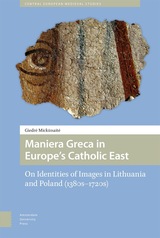 Maniera Greca in Europe's Catholic East: On Identities of Images in Lithuania and Poland (1380s–1720s)
Giedre Mickunaite
Amsterdam University Press, 2023 How and why does vernacular art become foreign? What does ‘Greek manner’ mean in regions far beyond the Mediterranean? What stories do images need? How do narratives shape pictures? The study addresses these questions in Byzantine paintings from the former Grand Duchy of Lithuania, contextualized with evidence from Poland, Serbia, Russia, and Italy. The research follows developments in artistic practices and the reception of these images, as well as distinguishing between the Greek manner – based on visual qualities – and the style favoured by the devout, sustained by cults and altered through stories. Following the reception of Byzantine and pseudo-Byzantine art in Lithuania and Poland from the late fourteenth through the early eighteenth centuries, Maniera Greca in Europe’s Catholic East argues that tradition is repetitive order achieved through reduction and oblivion, and concludes that the sole persistent understanding of the Greek image has been stereotyped as the icon of the Mother of God.
 Manifest Destinies and Indigenous Peoples
David Maybury-Lewis
Harvard University Press, 2009 How was frontier expansion rationalized in the Americas during the late nineteenth century? As new states fleshed out expanded national maps, how did they represent their advances? Were there any distinct pan-American patterns? The renowned anthropologist and human rights advocate David Maybury-Lewis saw the Latin American frontiers as relatively unknown physical spaces as well as unexplored academic “territory.” He invited eight specialists to explore public narratives of the expansion of Argentina, Brazil, Chile, and the western regions of Canada and the United States during the late nineteenth century, a time when those who then identified as “Americans” claimed territories in which indigenous peoples, who were now seen as economic and political obstacles, lived. The authors examine the narrative forms that stirred or rationalized expansion, and emphasize their impact on the native residents.
The authors illustrate the variety and the similarities of these nationalist ideas and experiences, which were generally expressed in symbolic and cultural terms rather than on simple materialist or essentialist grounds. The cases also point out that civic nationalism, often seem as inclusive and more benign than ethnic nationalism, can produce similarly destructive human and cultural ends. The essays thus suggest a view of nationalism as a theoretical concept, and of frontier expansion as a historical phenomenon.
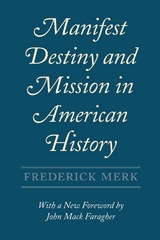 Manifest Destiny and Mission in American History: A Reinterpretation, With a New Foreword by John Mack Faragher
Frederick Merk
Harvard University Press, 1995 Before this book first appeared in 1963, most historians wrote as if the continental expansion of the United States were inevitable. “What is most impressive,” Henry Steele Commager and Richard Morris declared in 1956, “is the ease, the simplicity, and seeming inevitability of the whole process.” The notion of inevitability, however, is perhaps only a secular variation on the theme of the expansionist editor John L. O’Sullivan, who in 1845 coined one of the most famous phrases in American history when he wrote of “our manifest destiny to overspread the continent allotted by Providence for the free development of our yearly multiplying millions.” Frederick Merk rejected inevitability in favor of a more contingent interpretation of American expansionism in the 1840s. As his student Henry May later recalled, Merk “loved to get the facts straight.”
—From the Foreword by John Mack Faragher
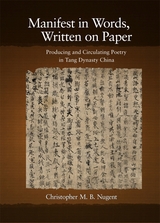 Manifest in Words, Written on Paper: Producing and Circulating Poetry in Tang Dynasty China
Christopher M. B. Nugent
Harvard University Press, 2010 This study aims to engage the textual realities of medieval literature by shedding light on the material lives of poems during the Tang, from their initial oral or written instantiation through their often lengthy and twisted paths of circulation. Tang poems exist today in stable written forms assumed to reflect their creators’ original intent. Yet Tang poetic culture was based on hand-copied manuscripts and oral performance. We have almost no access to this poetry as it was experienced by contemporaries. This is no trivial matter, the author argues. If we do not understand how Tang people composed, experienced, and transmitted this poetry, we miss something fundamental about the roles of memory and copying in the circulation of poetry as well as readers’ dynamic participation in the creation of texts.
We learn something different about poems when we examine them, not as literary works transcending any particular physical form, but as objects with distinct physical attributes, visual and sonic. The attitudes of the Tang audience toward the stability of texts matter as well. Understanding Tang poetry requires acknowledging that Tang literary culture accepted the conscious revision of these works by authors, readers, and transmitters.
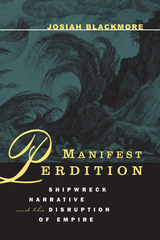 Manifest Perdition: Shipwreck Narrative And The Disruption Of Empire
Josiah Blackmore
University of Minnesota Press, 2002 A new take on a famous collection of shipwreck narratives that places them at the center of resistance to colonialism Shipwreck, death, and survival; terror, hunger, and salvation—these are the experiences of the passengers onboard merchant Portuguese ships sailing the high seas in the sixteenth and seventeenth centuries. And this is the stuff of the stories committed to print by survivors upon their return to the homeland. These Portuguese shipwreck narratives, rescued for all time in the eighteenth century by Bernardo Gomes de Brito in História Trágico-Marítima (1735-36), or The Tragic History of the Sea, are the subject of Manifest Perdition, a work that reveals their important—and until now, largely ignored—place in literary history. In this book we see how the dramatic, compelling, and often gory accounts of shipwreck, depicting a world out of control, challenge state-sponsored versions of events in the prevailing historiographic culture. Written during the heyday of Iberian maritime expansion and colonialism, the shipwreck narrative builds an alternative historical record to the vision and reality of empire elaborated by the official chroniclers of the realm. Manifest Perdition presents both theoretical considerations this genre and close readings of several texts, readings that disclose a poetics of the shipwreck text, of how survivors characteristically yet multifariously narrated their world. Included is a study of the medieval Iberian poetic predecessors of the shipwreck tale, as well as an exploration of the Portuguese Inquisition’s attempt to commandeer and steer the reading of the unruly narratives. The book engages issues of literary theory, historiography, and colonialism to portray the Portuguese shipwreck narrative for the first time as both a product of and a resistance to the prolific culture of sixteenth- and seventeenth-century expansionist history.
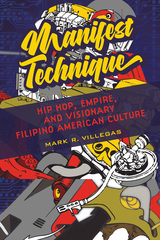 Manifest Technique: Hip Hop, Empire, and Visionary Filipino American Culture
Mark R. Villegas
University of Illinois Press, 2021 An obscured vanguard in hip hop Filipino Americans have been innovators and collaborators in hip hop since the culture’s early days. But despite the success of artists like Apl.de.Ap of the Black Eyed Peas and superstar producer Chad Hugo, the genre’s significance in Filipino American communities is often overlooked. Mark R. Villegas considers sprawling coast-to-coast hip hop networks to reveal how Filipino Americans have used music, dance, and visual art to create their worlds. Filipino Americans have been exploring their racial position in the world in embracing hip hop’s connections to memories of colonial and racial violence. Villegas scrutinizes practitioners’ language of defiance, placing the cultural grammar of hip hop within a larger legacy of decolonization. An important investigation of hip hop as a movement of racial consciousness, Manifest Technique shows how the genre has inspired Filipino Americans to envision and enact new ideas of their bodies, their history, and their dignity.
 Manifesting Violence: White Terrorism, Digital Culture, and the Rhetoric of Replacement
Casey Ryan Kelly and William Joseph Sipe
University of Alabama Press, 2025 Exposes how white supremacist groups exploit digital platforms to radicalize individuals Manifesting Violence: White Terrorism, Digital Culture, and the Rhetoric of Replacement by Casey Ryan Kelly and William Joseph Sipe is a compelling exploration of how the digital world has become a fertile ground for white supremacist ideology. Through an in-depth analysis of white supremacist manifestos, online rhetoric, and the myth of “white genocide,” Kelly and Sipe uncover the disturbing ways in which digital culture facilitates the spread of racist ideology and the radicalization of individuals. By examining the language of white nationalism—calls to defend the white race, family, and children—Kelly and Sipe reveal how these messages, often disguised as entertainment or humor, gradually transform passive consumers into active participants in a dangerous ideology. Manifesting Violence sheds light on the alarming shift from organized white supremacist groups to a decentralized digital arena where hate speech is disguised as humor and online conversations foster a culture of violence. Kelly and Sipe’s thorough investigation of this growing digital ecosystem offers a chilling glimpse into the dark underbelly of online extremism. A must-read for anyone seeking to understand the growing threat of hate-motivated violence and the urgent need to address its roots in digital culture, Kelly and Sipe offer rich insights to readers, researchers, academics, and policymakers concerned about extremism, online radicalization, and white supremacy.
Manifesto for the Humanities: Transforming Doctoral Education in Good Enough Times
Sidonie Smith
University of Michigan Press, 2015 After a remarkable career in higher education, Sidonie Smith offers Manifesto for the Humanities as a reflective contribution to the current academic conversation over the place of the Humanities in the 21st century. Her focus is on doctoral education and opportunities she sees for its reform.
Grounding this manifesto in background factors contributing to current “crises” in the humanities, Smith advocates for a 21st century doctoral education responsive to the changing ecology of humanistic scholarship and teaching. She elaborates a more expansive conceptualization of coursework and dissertation, a more robust, engaged public humanities, and a more diverse, collaborative, and networked sociality.
Manifesto Now!: Instructions for Performance, Philosophy, Politics
Edited by Laura Cull and Will Daddario
Intellect Books, 2013 Manifesto Now! maps the current rebirth of the manifesto as it appears at the crossroads of philosophy, performance, and politics. While the manifesto has been central to histories of modernity and Modernism, the editors contend that its contemporary resurgence demands a renewed interrogation of its form, its content, and the uses. Featuring contributions from trailblazing artists, scholars, and activists currently working in the United States, the United Kingdom, Finland, and Norway, this volume will be indispensible to scholars across the disciplines. Filled with examples of manifestos and critical thinking about manifestos, it contains a wide variety of critical methodologies that students can analyze, deconstruct, and emulate.
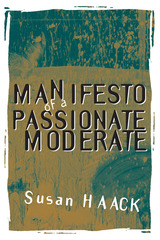 Manifesto of a Passionate Moderate: Unfashionable Essays
Susan Haack
University of Chicago Press, 1998 Forthright and wryly humorous, philosopher Susan Haack deploys her penetrating analytic skills on some of the most highly charged cultural and social debates of recent years. Relativism, multiculturalism, feminism, affirmative action, pragmatisms old and new, science, literature, the future of the academy and of philosophy itself—all come under her keen scrutiny in Manifesto of a Passionate Moderate.
"The virtue of Haack's book, and I mean virtue in the ethical sense, is that it embodies the attitude that it exalts. . . Haack's voice is urbane, sensible, passionate—the voice of philosophy that matters. How good to hear it again."—Jonathan Rauch, Reason
"A tough mind, confident of its power, making an art of logic . . . a cool mastery."—Paul R. Gross, Wilson Quarterly
"Few people are better able to defend the notion of truth, and in strong, clear prose, than Susan Haack . . . a philosopher of great distinction."—Hugh Lloyd-Jones, National Review
"If you relish acute observation and straight talk, this is a book to read."—Key Reporter (Phi Beta Kappa)
"Everywhere in this book there is the refreshing breeze of common sense, patiently but inexorably blowing."—Roger Kimball, Times Literary Supplement
"A refreshing alternative to the extremism that characterizes so much rhetoric today."—Kirkus Reviews
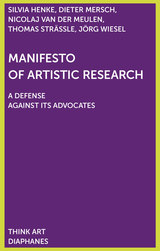 Manifesto of Artistic Research
Silvia Henke, Dieter Mersch, Nicolaj van der Meulen, Thomas Strässle, and Jörg Wiesel
Diaphanes, 2020 Since its beginnings in the 1990s, artistic research has become established as a new format in the areas of educational and institutional policy, aesthetics, and art theory. It has now diffused into almost all artistic fields, from installation to experimental formats to contemporary music, literature, dance, or performance art. But from its beginnings—under labels like “art and science” or “scienceart” or “artscience” that mention both disciplines in one breath—it has been in competition with academic research, without its own concept of research having been adequately clarified. This manifesto attempts to resolve the problem and to defend the term. Further, this manifesto defends the radical potential of artistic research against those who toy all too carefully with university formats, wishing to ally their work with scientific principles. Its aim is to emphasize the autonomy and particular intellectuality of artistic research, without seeking to justify its legitimacy or adopt alien standards.
Manifestoes of Surrealism
Andre Breton
University of Michigan Press, 1969 Manifestoes of Surrealism is an essential text by André Breton, a French writer and poet, and co-founder of the Surrealist movement. This volume includes Breton’s 1924 surrealist manifesto, his second manifesto from 1930, and extracts from other letters and works. Drawing on Freudian psychoanalysis, dream logic, and automatic writing, Breton rejects rationalism and embraces the unconscious as a path to artistic and social liberation.
 Manifold Destiny: Arabs at an American Crossroads of Exceptional Rule
John Tofik Karam
Vanderbilt University Press, 2021 Electronic open-access edition funded by the National Endowment for the Humanities.
At the border where Brazil, Paraguay, and Argentina meet under the scrutiny of the US and Mercosur (the large South American trade bloc), Arabs have long fulfilled what author John Tofik Karam calls a "manifold destiny." Karam casts Lebanese, Palestinians, and Syrians at this American border as circumstantial protagonists of a hemispheric saga.
For the more than six decades since they started settling at the trinational border between Brazil, Paraguay, and Argentina, Arabs have animated the hemisphere. Their transnational economic and social projects reveal a heretofore unacknowledged venue of exceptional rule in which the community accommodates and abides multiple states' varied suspensions of norms and laws. Arabs set up businesses and community centers at the border under authoritarian military governments between the 1950s and 1980s; thereafter, when denied full democratic enfranchisement, they instead underwent increasing surveillance from the 1990s to today. Karam reveals an unfinished history of exceptional rule that Arabs accommodate from an authoritarian past to a counterterrorist present.
Karam's riveting account draws on anthropological and historical research from each side of this trinational South American border, as well as from the US—where government bureaucrats still suspect Arabs at the border of would-be-terrorist subversion. Offering a fresh understanding of the hemisphere, Manifold Destiny brings the transnational turn of Middle Eastern studies to bear upon the fields of American studies, Brazilian studies, and Latin American studies.
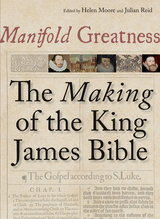 Manifold Greatness: The Making of the King James Bible
Edited by Helen Moore and Julian Reid
Bodleian Library Publishing, 2011 Published to commemorate the four hundredth anniversary of the publication of the King James Bible, Manifold Greatness tells the story of the creation and immediate afterlife of the King James translation of the Bible, first published in 1611. Revolutionary at its time, the King James translation quickly became the dominant authorized translation of the Christian Bible in English. There are more than one billion copies in print, making it the best-selling book of all time, and its effect on the English language is incalculable, both in common speech and in literature.
This accessible and richly illustrated visual history contains eighty color illustrations, including images of rare manuscripts, artifacts, and archival material such as the annotated Bodleian Bishops’ Bible of 1602, pages from the Wycliffite and Tyndale Bibles, and an edition of the Bishop’s Bible owned by Elizabeth I. Eight chapters contributed by leading academics in the field discuss the history of biblical translation, the political background of the project, the Oxford Translators—including Henry Savile, John Rainolds, and John Harmar—and their working milieu, the cultural politics, and the reception and influence of the King James Bible up until the 1769 publication of the Oxford Standard Edition, which was the first revision of the original 1611 translation. Also included is a look at the later reception of the King James Bible in America, including a chapter specifically on the King James Bible and the Folger Shakespeare Library.
Manifold Greatness brings together key research and documentation to provide a lively and comprehensive visual account to celebrate one of the most important occasions in publishing and modern religious history.
 Man-in-Organization: Essays of F. J. Roethlisberger
F. J. Roethlisberger
Harvard University Press These essays by one of America's most distinguished experts in business management and human relations were written between 1928 and 1968. Some are published here for the first time. They are addressed primarily to business practitioners, but are also of considerable interest to social scientists concerned with matters of organization, administration, motivation, and communication. The essays might be said to constitute the author's adventure over a period of forty years with an idea that he felt had important implications for administrative practices.
The early pieces begin with the exposition of a new way of thinking about the behavior of people in organizations, and the research from which it arose. Some of the recent essays express concern with the way in which the area of human relations has been developing—namely, as a fad, a cult, and the way to salvation instead of as a road toward competence. Among the topics discussed are: the relation of theory to practice in administrative matters; the training and education of the generalist as opposed to the specialist; training in human relations; efficiency and cooperative behavior; the administration of change; and technical change and social organization.
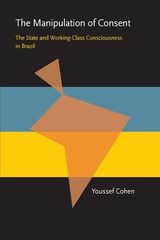 The Manipulation of Consent: The State and Working-Class Consciousness in Brazil
Youssef Cohen
University of Pittsburgh Press, 1989 The Manipulation of Consent is a major contribution to our knowledge of the mechanisms by which elites instill in the lower classes the beliefs, values, and attitudes that legitimate their subordinate position in the social order. Youssef Cohen explores the case of Brazil, where the working class was relatively quiescent in the face of the authoritarian regime established by force in 1964. Drawing on recent advances in the theory of the state and the study of power relations, as well as on modern methods of social inquiry, he reveals the techniques of ideological control in the concrete setting of modern Brazilian society. The result is an unusually illuminating case study that blends theoretical exposition, conceptually informed historical analysis, and a wealth of emperical data. The Manipulation of Consent makes a substantial addition to the understanding of Brazilian politics, the study of power relations, and the theory of the state.
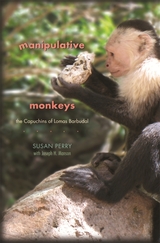 Manipulative Monkeys: The Capuchins of Lomas Barbudal
Susan Perrywith Joseph H. Manson
Harvard University Press, 2011 With their tonsured heads, white faces, and striking cowls, the monkeys might vaguely resemble the Capuchin monks for whom they were named. How they act is something else entirely. They climb onto each other’s shoulders four deep to frighten enemies. They test friendship by sticking their fingers up one another’s noses. They often nurse—but sometimes kill—each other’s offspring. They use sex as a means of communicating. And they negotiate a remarkably intricate network of alliances, simian politics, and social intrigue. Not monkish, perhaps, but as we see in this downright ethnographic account of the capuchins of Lomas Barbudal, their world is as complex, ritualistic, and structured as any society.
Manipulative Monkeys takes us into a Costa Rican forest teeming with simian drama, where since 1990 primatologists Susan Perry and Joseph H. Manson have followed the lives of four generations of capuchins. What the authors describe is behavior as entertaining—and occasionally as alarming—as it is recognizable: the competition and cooperation, the jockeying for position and status, the peaceful years under an alpha male devolving into bloody chaos, and the complex traditions passed from one generation to the next. Interspersed with their observations of the monkeys’ lives are the authors’ colorful tales of the challenges of tropical fieldwork—a mixture so rich that by the book’s end we know what it is to be a wild capuchin monkey or a field primatologist. And we are left with a clear sense of the importance of these endangered monkeys for understanding human behavioral evolution.
 Manitoba Medicine: A Brief History
Ian Carr
University of Manitoba Press, 1999 For many Canadians, the state of our health care and medical system is at the top of the public agenda. By following the growth and development of modern medicine in one Canadian province, Manitoba Medicine provides an insight into where our present medical system came from and how it developed .Beginning with a description of some early Aboriginal healing practices and of the physicians of the Red River Settlement, Manitoba Medicine follows the struggles in the 1870s to establish what would become the first medical college and the first major hospitals in Western Canada. It chronicles the fight for public health in the 1920s, the development of health insurance and medicare after WWII, and medicine's role in fighting the 1950 Winnipeg Flood and the polio epidemic of the late 1950s. Manitoba Medicine also provides vivid accounts of many of the individuals who built Manitoba's medical system, including early educators like Swale Vincent, pioneering women physicians such as Charlotte Ross, important researchers like Bruce Chown, and colourful private practitioners such as Murrough O'Brien.
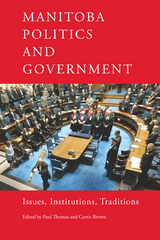 Manitoba Politics and Government: Issues, Institutions, Traditions
Paul Thomas
University of Manitoba Press, 2010 Manitoba has always been a province in the middle, geographically, economically, and culturally. Lacking Quebec’s cultural distinctiveness, Ontario’s traditional economic dominance, or Alberta’s combustible mix of prairie populism and oil wealth, Manitoba appears to blend into the background of the Canadian family portrait. But Manitoba has a distinct political culture, one that has been overlooked in contemporary political studies.Manitoba Politics and Government brings together the work of political scientists, historians, sociologists, economists, public servants, and journalists to present a comprehensive analysis of the province’s political life and its careful “mutual fund model” approach to economic and social policy that mirrors the steady and cautious nature of its citizens. Moving beyond the Legislature, the authors address contemporary social issues like poverty, environmental stewardship, gender equality, health care, and the province’s growing Aboriginal population to reveal the evolution of public policy in the province. They also examine the province’s role at the intergovernmental and international level.Manitoba Politics and Government is a rich and fascinating account of a province that strives for the centre, for the delicate middle ground where individualism and collectivism overlap, and where a multitude of different cultures and traditions create a highly balanced society.
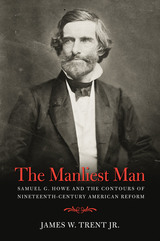 The Manliest Man: Samuel G. Howe and the Contours of Nineteenth-Century American Reform
James W. Trent
University of Massachusetts Press, 2012 A native of Boston and a physician by training, Samuel G. Howe (1801–1876) led a remarkable life. He was a veteran of the Greek War of Independence, a fervent abolitionist, and the founder of both the Perkins School for the Blind and the Massachusetts School for Idiotic and Feeble-Minded Children. Married to Julia Ward Howe, author of "Battle Hymn of the Republic," he counted among his friends Senator Charles Sumner, public school advocate Horace Mann, and poet Henry Wadsworth Longfellow.
Always quick to refer to himself as a liberal, Howe embodied the American Renaissance's faith in the perfectibility of human beings, and he spoke out in favor of progressive services for disabled Americans. A Romantic figure even in his own day, he embraced a notion of manliness that included heroism under fire but also compassion for the underdog and the oppressed. Though hardly a man without flaws and failures, he nevertheless represented the optimism that characterized much of antebellum American reform.
The first full-length biography of Samuel G. Howe in more than fifty years, The Manliest Man explores his life through private letters and personal and public documents. It offers an original view of the reformer's personal life, his association with social causes of his time, and his efforts to shape those causes in ways that allowed for the greater inclusion of devalued people in the mainstream of American life.
Manliness
Malik R. Dahlan
Haus Publishing, 2016 In 1940, Saudi Arabian intellectual and activist Hamza Shehata (1910–71) gave a lecture at the Makkah Charitable Aid Association. Over the course of four hours, Shehata shared a staggering number of social and cultural observations and critiques on many facets of contemporary life. Translated into English for the first time, Manliness presents that speech for a new generation of readers.
Using a framework that was both scientific and philosophical, Shehata convinced his audience that conventional views of virtue and vice were a deceptive simplification and that social and religious reform was necessary. A humble man at heart, he was reluctant to publish his talk in his lifetime, but thanks to Malik R. Dahlan’s expert translation and insightful discussion of the larger historical and geographical context for the speech, readers are now able to appreciate a fascinating snapshot of Arabian history that would otherwise be lost.
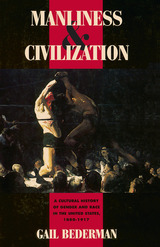 Manliness and Civilization: A Cultural History of Gender and Race in the United States, 1880-1917
Gail Bederman
University of Chicago Press, 1995 When former heavyweight champion Jim Jeffries came out of retirement on the fourth of July, 1910 to fight current black heavywight champion Jack Johnson in Reno, Nevada, he boasted that he was doing it "for the sole purpose of proving that a white man is better than a negro." Jeffries, though, was trounced. Whites everywhere rioted. The furor, Gail Bederman demonstrates, was part of two fundamental and volatile national obsessions: manhood and racial dominance.
In turn-of-the-century America, cultural ideals of manhood changed profoundly, as Victorian notions of self-restrained, moral manliness were challenged by ideals of an aggressive, overtly sexualized masculinity. Bederman traces this shift in values and shows how it brought together two seemingly contradictory ideals: the unfettered virility of racially "primitive" men and the refined superiority of "civilized" white men. Focusing on the lives and works of four very different Americans—Theodore Roosevelt, educator G. Stanley Hall, Ida B. Wells, and Charlotte Perkins Gilman—she illuminates the ideological, cultural, and social interests these ideals came to serve.
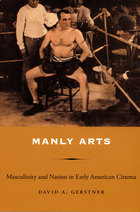 Manly Arts: Masculinity and Nation in Early American Cinema
David A. Gerstner
Duke University Press, 2006 In this innovative analysis of the interconnections between nation and aesthetics in the United States during the late nineteenth century and the early twentieth, David A. Gerstner reveals the crucial role of early cinema in consolidating a masculine ideal under American capitalism. Gerstner describes how cinema came to be considered the art form of the New World and how its experimental qualities infused other artistic traditions (many associated with Europe—painting, literature, and even photography) with new life: brash, virile, American life. He argues that early filmmakers were as concerned with establishing cinema’s standing in relation to other art forms as they were with storytelling. Focusing on the formal dimensions of early-twentieth-century films, he describes how filmmakers drew on European and American theater, literature, and painting to forge a national aesthetic that equated democracy with masculinity. Gerstner provides in-depth readings of several early American films, illuminating their connections to a wide range of artistic traditions and cultural developments, including dance, poetry, cubism, realism, romanticism, and urbanization. He shows how J. Stuart Blackton and Theodore Roosevelt developed The Battle Cry of Peace (1915) to disclose cinema’s nationalist possibilities during the era of the new twentieth-century urban frontier; how Paul Strand and Charles Sheeler positioned a national avant-garde through the fusion of “American Cubism” and industrialization in their film, Manhatta (1921); and how Oscar Micheaux drew on slave narratives and other African American artistic traditions as he grappled with the ideological terms of African American and white American manhood in his movie Within Our Gates (1920). Turning to Vincente Minnelli’s Cabin in the Sky (1943), Gerstner points to the emergence of an aesthetic of cultural excess that brought together white and African American cultural producers—many of them queer—and troubled the equation of national arts with masculinity.
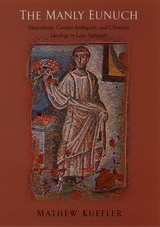 The Manly Eunuch: Masculinity, Gender Ambiguity, and Christian Ideology in Late Antiquity
Mathew Kuefler
University of Chicago Press, 2001 The question of masculinity formed a key part of the intellectual life of late antiquity and was crucial to the development of Christian society. This idea is at the heart of Mathew Kuefler's new book, which revisits the Roman Empire during the third and fifth centuries of the common era. Kuefler argues that the collapse of the Roman army, an increasingly autocratic government, and growing restrictions on the traditional rights of men within marriage and sexuality all led to an endemic crisis in masculinity: men of Roman aristocracy, who had always felt themselves to be soldiers, statesmen, and the heads of households, became, by their own definition, unmanly.
The cultural and demographic success of Christianity during this epoch lay in the ability of its leaders to recognize and respond to this crisis. Drawing on the tradition of gender ambiguity in early Christian teachings, which included Jesus's exhortation that his followers "make themselves eunuchs for the sake of the kingdom of heaven," Christian writers and thinkers crafted a new masculine ideal, one that took advantage of the changing social realities in Rome, inverted the Roman model of manliness, and helped solidify Christian ideology by reinstating the masculinity of its adherents.
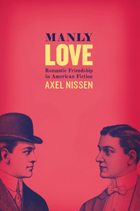 Manly Love: Romantic Friendship in American Fiction
Axel Nissen
University of Chicago Press, 2009 The modern idea of Victorians is that they were emotionless prudes, imprisoned by sexual repression and suffocating social constraints; they expressed love and affection only within the bounds of matrimony—if at all. And yet, a wealth of evidence contradicting this idea has been hiding in plain sight for close to a century. In Manly Love, Axel Nissen turns to the novels and short stories of Victorian America to uncover the widely overlooked phenomenon of passionate friendships between men. Nissen’s examination of the literature of the period brings to light a forgotten genre: the fiction of romantic friendship. Delving into works by Mark Twain, Henry James, William Dean Howells, and others, Nissen identifies the genre’s unique features and explores the connections between romantic friendships in literature and in real life. Situating love between men at the heart of Victorian culture, Nissen radically alters our understanding of the American literary canon. And with its deep insights into the emotional and intellectual life of the period, Manly Love also offers a fresh perspective on nineteenth-century America’s attitudes toward love, friendship, marriage, and sex.
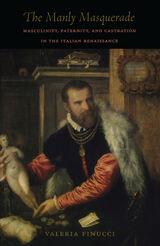 The Manly Masquerade: Masculinity, Paternity, and Castration in the Italian Renaissance
Valeria Finucci
Duke University Press, 2003 The Manly Masquerade unravels the complex ways men were defined as men in Renaissance Italy through readings of a vast array of sixteenth- and seventeenth-century evidence: medical and travel literature; theology; law; myth; conduct books; and plays, chivalric romances, and novellas by authors including Machiavelli, Tasso, and Ariosto. Valeria Finucci shows how ideas of masculinity were formed in the midst of acute anxiety about paternity by highlighting the beliefs—widely held at the time—that conception could occur without a paternal imprimatur or through a woman’s encounter with an animal, or even that a pregnant woman’s imagination could erase the father’s "signature" from the fetus. Against these visions of reproduction gone awry, Finucci looks at how concepts of masculinity were tied to issues of paternity through social standing, legal matters, and inheritance practices. Highlighting the fissures running through Italian Renaissance ideas of manliness, Finucci describes how, alongside pervasive images of the virile, sexually active man, early modern Italian culture recognized the existence of hermaphrodites and started to experiment with a new kind of sexuality by manufacturing a non-man: the castrato. Following the creation of castrati, the Church forbade the marriage of all non-procreative men, and, in this move, Finucci identifies a powerful legitimation of the view that what makes men is not the possession of male organs or the ability to have sex, but the capability to father. Through analysis, anecdote, and rich cultural description, The Manly Masquerade exposes the "real" early modern man: the paterfamilias.
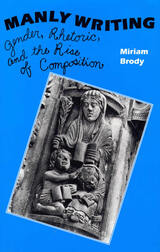 Manly Writing: Gender, Rhetoric and the Rise of Compostion
Miriam Brody
Southern Illinois University Press, 1993 In this critical history of the gendered politics of rhetoric and the rise of composition, Miriam Brody argues that nothing about words or their arrangement is innately gendered. Yet since the English Enlightenment, teachers have encouraged their students to admire and imitate "manly" writing, writing that is plain, forceful, cogent, and true. Similarly, students have been enjoined to avoid so-called effeminate or feminine writing—writing characterized as vague, unorganized, ornate, and deceitful. Such advice, part of what Brody terms the hidden curriculum, has served the interests of discourse communities as various as the early Enlightenment Royal Society in seventeenth-century London (by urging a clear and masculine style for the work of science) and the land-grant universities of nineteenth-century America (by claiming that the work of writing was similar to clearing the land and pushing back the frontier). Brody’s discussion in fact becomes a social history of canonical rhetorical essays and important late Enlightenment, nineteenth-century, and early modern school texts. She points out that in their advice to writers even the Strunks and Whites and Peter Elbows of more recent times have extolled masculine virtues and urged control over invasive and problematic feminine qualities. Brody’s book not only clarifies rhetoric’s inheritance and transformation of the classical ideal of manliness, it also is the first critical work to explore the ideological significance of gendered imagery and to interpret in light of this imagery rhetorical essays and hard-to-locate early composition texts against a background of previously unpublished archival materials.
 The Man-Made City: The Land-Use Confidence Game in Chicago
Gerald D. Suttles
University of Chicago Press, 1990 With its extraordinary uniform street grid, its magnificent lake-side park, and innovative architecture and public sculpture, Chicago is one of the most planned cities of the modern era. Yet over the past few decades Chicago has come to epitomize some of the worst evils of urban decay: widespread graft and corruption, political stalemates, troubled race relations, and economic decline. Broad-shouldered boosterism can no longer disguise the city's failure to keep pace with others, its failure to attract new "sunrise" industries and world-class events. For Chicago, as for other rust-belt cities, new ways of planning and managing the urban environment are now much more than civic beautification; they are the means to survival.
Gerald D. Suttles here offers an irreverent, highly critical guide to both the realities and myths of land-use planning and development in Chicago from 1976 through 1987.
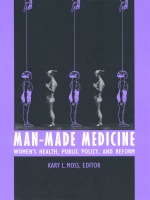 Man-Made Medicine: Women’s Health, Public Policy, and Reform
Kary L. Moss, ed.
Duke University Press, 1996 If not for the reproductive functions of women, would there be anything called women’s health care? A review of medical literature, practice, and policy in this country would suggest that the answer is no. Offering a startling view of the current state of health care for women in the United States and laying the foundation for a new, widely defined women’s medicine, Man-Made Medicine makes an urgent statement about gender bias in the medical establishment and its pernicious effects on the well-being of women and the care they receive. These essays by physicians, lawyers, activists, and scholars present a rare interdisciplinary approach to a complex set of issues. Gender stereotyping and bias in the collection, analysis, and reporting of scientific data and in the ways health-related news is covered by the media are examined. The exclusion of women from the health care policy-making process and the effect such exclusion has on the determination of priorities among potential areas of research are also explored. With discussions of the plight of specific populations of women whose health care needs are not being sufficiently met—for example, immigrants, prisoners, the mentally ill, or women with HIV/AIDS, disabilities, or reproductive health problems—this book considers matters of race and class within the parameters of gender as it builds a fundamental challenge to the existing health care system. A range of current reform proposals are also evaluated in terms of their potential impact on women. Suggesting no less than a radical rethinking of women’s medicine, Man-Made Medicine gives essential direction to the discussions that will shape the future of health care in this country. It will be of great interest to a wide audience, including health care advocates, policymakers, scholars, and readers generally concerned with women’s health issues. Contributors. Ellen Barry, Laurie Beck, Joan Bertin, Janet Calvo, Wendy Chavkin, Kay Dickersin, Abigail English, Elizabeth Fee, Carol Gill, Nancy Krieger, Joyce McConnell, Judy Norsigian, Ann Scales, Susan Stefan, Lauren Schnaper, Catherine Teare
Man-Made: The Evolutionary Influence of Humans
Lynn Carpenter
Michigan Publishing, 2023 Humans have altered our environment in countless ways, yet we don’t always notice the finer details or even understand the long-term implications of our actions. Throughout Man-Made: The Evolutionary Influence of Humans, we explore the role of humans in nature from an evolutionary perspective—with a twist. Rather than focusing on the process of evolution in nature, we examine the ways in which humans have altered the evolutionary trajectory of almost every species we have encountered. From artificial selection, to altering the course of natural selection, to tolerating the new world we are creating, to investigating whether we have eliminated species entirely through overhunting or exploitation, we examine how humans have created a new evolutionary path. That path is now moving development in a new direction, and the ramifications will most certainly be staggering.
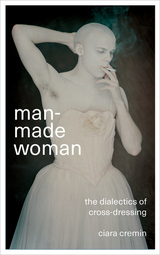 Man-Made Woman: The Dialectics of Cross-Dressing
Ciara Colin Cremin
Pluto Press, 2017 On July 27th, 2015, Colin Cremin overcame a lifetime of fear and repression and came to work dressed as a woman called Ciara. Wearing full makeup, a blouse, a black skirt, and pantyhose, Cremin walked down the steps of a lecture theater in front of a hundred seated students and, without comment, gave her lecture as usual. In Man-Made Woman, Cremin charts her personal journey as a male-to-female cross-dresser in the ever-changing world of gender politics.
Interweaving personal narrative with political discourse, Man-Made Woman is a vivid exploration of gender, identity, fetishism, aesthetics, and popular culture through the lenses of feminism, Marxism, and psychoanalytic theory. Cremin’s anti-moralistic approach dismantles the abjection associated with male-to-female cross dressing, examines the causes of repression, and considers what it means to publicly materialize desire on one’s body. Man-Made Woman is an experiment that ultimately draws both author and reader into a conflict with their material, ideological, and libidinal relationship to patriarchal-capitalism.
With an emancipatory and empowering voice, Cremin interrogates her, his, and our relationship to the gender binary. In light of recent debate surrounding transgender bathroom rights in the United States, Man-Made Woman is a deeply personal account that offers timely insight for anyone interested in contemporary trans politics and queer theory.
Man-Making Words: Selected Poems of Nicolas Guillen
Nicolas Guillen
University of Massachusetts Press, 2003 The Cuban poet Nicolás Guillén, who was born in the eastern province of Camagüey in 1902, died in 1989. This new edition of his selected poems, reissued thirty years after its original publication, includes an extensive, new introductory essay by Roberto Márquez, one of the original translators and a leading authority on Caribbean and Latin American literature and culture.
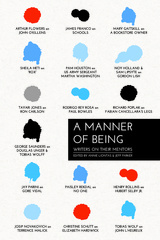 A Manner of Being: Writers on Their Mentors
Annie Liontas
University of Massachusetts Press, 2015 What do the punk singer Henry Rollins, the Guatemalan writer Rodrigo Rey Rosa, the American authors Tobias Wolff, Tayari Jones, and George Saunders, the Canadian writer Sheila Heti, and the Russian poet Polina Barskova have in common? At some point they all studied the art of writing deeply with someone.
The nearly seventy short essays in A Manner of Being, by some of the best contemporary writers from around the world, pay homage to mentors—the writers, teachers, nannies, and sages—who enlighten, push, encourage, and sometimes hurt, fail, and limit their protégés. There are mentors encountered in the schoolhouse and on farms, in NYC and in MFA programs; mentors who show up exactly when needed, offering comfort, a steadying hand, a commiseration, a dose of tough love. This collection is rich with anecdotes from the heartfelt to the salacious, gems of writing advice, and guidance for how to live the writing life in a world that all too often doesn't care whether you write or not.
Each contribution is intimate and distinct—yet a common theme is that mentors model a manner of being.
Selections include:
Arthur Flowers on John O'Killens
James Franco on Harmony Korine
Mary Gaitskill on an Ann Arbor bookstore owner
Noy Holland and Sam Lipsyte on Gordon Lish
Tayari Jones on Ron Carlson
Henry Rollins on Hubert Selby Jr.
Rodrigo Rey Rosa on Paul Bowles
George Saunders on Douglas Unger and Tobias Wolff
Christine Schutt on Elizabeth Hardwick
Tobias Wolff on John L'Heureux
. . . and many more
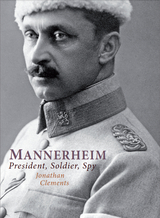 Mannerheim: President, Soldier, Spy
Jonathan Clements
Haus Publishing, 2012 Baron Gustaf Mannerheim was one of the greatest figures of the twentieth century, and the only man to be decorated by both sides in the Second World War. As a Finnish officer in Russian service, he witnessed the coronation of the last Tsar, and was both reprimanded for foolhardiness and decorated for bravery in the Russo-Japanese War. He spent two years undercover in Asia as an agent in the 'Great Game', posing as a Swedish anthropologist. He crossed China on horseback, stopping en route to teach the 13th Dalai Lama how to shoot with a pistol, and spying on the Japanese navy on his way home. He escaped the Bolsheviks by the skin of his teeth in 1917, arriving in the newly independent Finland just in time to lead the anti-Russian forces in the local revolt and civil war. During Finland's darkest hour, he lead the defence of his country against the impossible odds of the Winter War. This major new life of Gustaf Mannerheim, the first to be published for over a decade, includes new historical material on Mannerheim's time in China.
Mannerism: The Crisis of the Renaissance and the Origin of Modern Art
Arnold Hauser
Harvard University Press, 1986 Arnold Hauser sees Mannerism—the expressionistic, anti-natural, anti-classical style prevalent in the sixteenth century—as a revolution in the history of art; a revolution with major repercussions for modern art. The noted Viennese culture critic here, as in The Social History of Art and The Philosophy of Art History, looks at developments in art in the context of social, economic, and intellectual history. His analysis of specific works of art is illustrated with 322 reproductions.
 The Man-Not: Race, Class, Genre, and the Dilemmas of Black Manhood
Tommy J. Curry
Temple University Press, 2017 The Before Columbus Foundation 2018 Winner of the AMERICAN BOOK AWARD
Tommy J. Curry’s provocative book The Man-Not is a justification for Black Male Studies. He posits that we should conceptualize the Black male as a victim, oppressed by his sex. The Man-Not, therefore,is a corrective of sorts, offering a concept of Black males that could challenge the existing accounts of Black men and boys desiring the power of white men who oppress them that has been proliferated throughout academic research across disciplines. Curry argues that Black men struggle with death and suicide, as well as abuse and rape, and their genred existence deserves study and theorization. This book offers intellectual, historical, sociological, and psychological evidence that the analysis of patriarchy offered by mainstream feminism (including Black feminism) does not yet fully understand the role that homoeroticism, sexual violence, and vulnerability play in the deaths and lives of Black males. Curry challenges how we think of and perceive the conditions that actually affect all Black males.
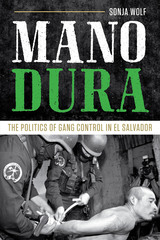 Mano Dura: The Politics of Gang Control in El Salvador
By Sonja Wolf
University of Texas Press, 2017 In 1992, at the end of a twelve-year civil war, El Salvador was poised for a transition to democracy. Yet, after longstanding dominance by a small oligarchy that continually used violence to repress popular resistance, El Salvador’s democracy has proven to be a fragile one, as social ills (poverty chief among them) have given rise to neighborhoods where gang activity now thrives. Mano Dura examines the ways in which the ruling ARENA party used gang violence to solidify political power in the hands of the elite—culminating in draconian “iron fist” antigang policies that undermine human rights while ultimately doing little to address the roots of gang membership. Drawing on extensive ethnographic fieldwork and policy analysis, Mano Dura examines the activities of three nongovernmental organizations (NGOs) that have advocated for more nuanced policies to eradicate gangs and the societal issues that are both a cause and an effect of gang proliferation. While other studies of street gangs have focused on relatively distant countries such as Colombia, Argentina, and Jamaica, Sonja Wolf’s research takes us to a country closer to the United States, where forced deportation has brought with it US gang culture. Charting the limited success of NGOs in influencing El Salvador’s security policies, the book brings to light key contextual aspects—including myopic media coverage and the ironic populist support for ARENA, despite the party’s protection of the elite at the expense of the greater society.
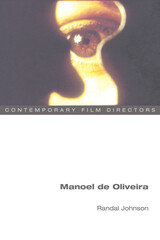 Manoel de Oliveira
John Randal Johnson
University of Illinois Press, 2006 Understanding the iconoclastic work of a lifelong cinematic pioneer Manoel de Oliveira's eighty-five year career made him a filmmaking icon and a cultural giant in his native Portugal. A lifelong cinematic pioneer, Oliveira merged distinctive formal techniques with philosophical treatments of universal themes--frustrated love, aging, nationhood, evil, and divine grace--in films that always moved against mainstream currents. Randal Johnson navigates Oliveira's massive feature film oeuvre. Locating the director's work within the broader context of Portuguese and European cinema, Johnson discusses historical and political influences on Oliveira's work, particularly Portugal's transformation from dictatorship to social democracy. He ranges from Oliveira's early concerns with cinematic specificity to hybrid discourses that suggest a tenuous line between film and theater on the one hand, and between fiction and documentary on the other. A rare English-language portrait of the director, Manoel de Oliveira invites students and scholars alike to explore the work of one of the cinema's greatest and most prolific artists.
Manoleria
Daniel Khalastchi
Tupelo Press, 2011 Winner of the Tupelo Press / Crazyhorse First Book Prize
Under the influence of broadcasts such as public radio’s “Marketplace” (a daily roundup of stock reports and business news), Daniel Khalastchi composed a series of character-driven poems whose recurrent narrator is physically and mentally manipulated while the world around him takes little notice. Through their chaos and horror, these poems ask a reader to question the ways in which our careening healthcare system, crumbling financial/housing/job markets, and war on multiple fronts are actually affecting us — both inside and out.
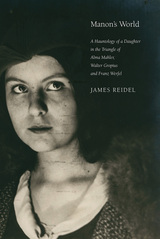 Manon's World: A Hauntology of a Daughter in the Triangle of Alma Mahler, Walter Gropius and Franz Werfel
James Reidel
Seagull Books, 2020 At once a narrative biography and a medical history, Manon’s World tells the story of a haunted young woman caught in the middle of a love triangle in interwar Germany.
Manon Gropius (1916–1935) was the daughter of Alma Mahler, the widow of Gustav Mahler, and the architect Walter Gropius, the founder of the Bauhaus, and the stepdaughter of the writer Franz Werfel. In Manon’s World, James Reidel explores the life and death of a child at the center of a broken love triangle. The story takes a unique course, describing a peripheral figure but in a context where her significance and centrality in the lives of her famous parents and circles comes into relief. Reidel reveals a neglected and fascinating life in a world gone by—Vienna, Venice, and Berlin of the interwar years.
Not just a narrative biography, Manon’s World is also a medical history of the polio that killed Manon and a personal cultural history of the aspirations projected on her—and seen as lost by such keen observers as Elias Canetti, who devoted two chapters of his Nobel Prize–winning memoirs to his encounters with Manon and her funeral. That event led Alban Berg to dedicate his signature Violin Concerto “to an angel.” Reidel reveals a more complex image of a young woman who desired to be an actress and artist in her own right despite being her mother’s intended protégé, an inspiration to her father who rarely saw her, and her stepfather Franz Werfel, who obsessively wrote her into his novels, beginning with The Forty Days of Musa Dagh and as a revenant in all the books that followed.
Manoomin: The Story of Wild Rice in Michigan
Barbara J Barton
Michigan State University Press, 2018 This is the first book of its kind to bring forward the rich tradition of wild rice in Michigan and its importance to the Anishinaabek people who live there. Manoomin: The Story of Wild Rice in Michigan focuses on the history, culture, biology, economics, and spirituality surrounding this sacred plant. The story travels through time from the days before European colonization and winds its way forward in and out of the logging and industrialization eras. It weaves between the worlds of the Anishinaabek and the colonizers, contrasting their different perspectives and divergent relationships with Manoomin. Barton discusses historic wild rice beds that once existed in Michigan, why many disappeared, and the efforts of tribal and nontribal people with a common goal of restoring and protecting Manoomin across the landscape.
The Manor and the Estate
Isaac Bashevis Singer
University of Wisconsin Press, 2004 The Manor and The Estate—combined in this one-volume edition—bold tales of Polish Jews in the latter half of the nineteenth century, a time of rapid industrial growth and radical social change that enabled the Jewish community to move from the ghetto to prominent positions within Polish society.
 The Manpower Connection: Education and Work
Eli Ginzberg
Harvard University Press, 1975 This volume constitutes an achievement nowhere duplicated in the three related and critical areas of education, work, and manpower policy. It is the mature production of over a dozen years of research-endeavors by the dean of manpower studies.
In Part I Eli Ginzberg warns against simplistic reliance on prevailing models—economic, psychological, or political. There is only tenuous evidence that enormous expenditure leads to increased social benefit. Rather, we need a more appropriate framework for analyzing human resources, and we ought to be skeptical of a theory that predicates an underlying rationalism for much, if not all, human behavior. Specifically, the author doubts that education can be a substitute for the family, cure poverty or racism, assure an individual a job, give a person a decent income, or control crime and delinquency. What it can do is help students acquire basic skills and thereby help them to live and manage their lives better. The author suggests that we ought to set realistic goals for our schools and insist on accountability.
Part II turns to work and its discontents. Ginzberg examines the changing role of women, the position of blue-collar workers, labor reforms suggested in America and abroad, and the place of the work ethic.
Part III focuses mostly on public employment policy, which can improve the manpower system but can only be a minor instrument for promoting economic growth, redistributing income, shifting consumer demand to public services, or eliminating substandard jobs. The discussion will be eagerly read by those seeking to generate jobs for the unemployed.
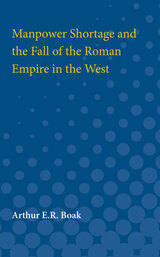 Manpower Shortage and the Fall of the Roman Empire in the West
Arthur E.R. Boak
University of Michigan Press, 1955 In Manpower Shortage and the Fall of the Roman Empire in the West, Arthur E. R. Boak, applying to population trends in antiquity the methods worked out by modern demographers, shows that there was a real and general decline in both rural and town population of the Roman Empire in the West from the middle of the second century on; that the Late Empire was from its beginnings faced with a marked deficiency in human resources; and that this manpower shortage was the cause—not, as has been held, the consequence—of much that has been considered authoritarian in the administration of Late Rome. This analysis throws new light on the economic and social legislation of Diocletian, Constantine I, and their successors.As the first detailed picture of the population policies of the Western Empire, and their effects on its government service, the study concerns economists and sociologists as well as historians and classicists.
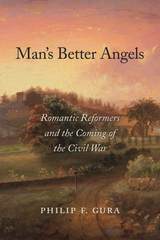 Man’s Better Angels: Romantic Reformers and the Coming of the Civil War
Philip F. Gura
Harvard University Press, 2017 Banks failed, credit contracted, inequality grew, and people everywhere were out of work while political paralysis and slavery threatened to rend the nation in two. As financial crises always have, the Panic of 1837 drew forth a plethora of reformers who promised to restore America to greatness. Animated by an ethic of individualism and self-reliance, they became prophets of a new moral order: if only their fellow countrymen would call on each individual’s God-given better instincts, the most intractable problems could be resolved.
Inspired by this reformist fervor, Americans took to strict dieting, water cures, phrenology readings, mesmerism, utopian communities, free love, mutual banking, and a host of other elaborate self-improvement schemes. Vocal activists were certain that solutions to the country’s ills started with the reformation of individuals, and through them communities, and through communities the nation. This set of assumptions ignored the hard political and economic realities at the core of the country’s malaise, however, and did nothing to prevent another financial panic twenty years later, followed by secession and civil war.
Focusing on seven individuals—George Ripley, Horace Greeley, William B. Greene, Orson Squire Fowler, Mary Gove Nichols, Henry David Thoreau, and John Brown—Philip Gura explores their efforts, from the comical to the homicidal, to beat a new path to prosperity. A narrative of people and ideas, Man’s Better Angels captures an intellectual moment in American history that has been overshadowed by the Civil War and the pragmatism that arose in its wake.
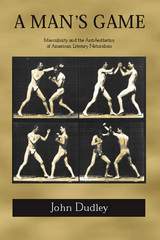 A Man's Game: Masculinity and the Anti-Aesthetics of American Literary Naturalism
John Dudley
University of Alabama Press, 2004 Demonstrates how concepts of masculinity shaped the aesthetic foundations of literary naturalism
A Man’s Game explores the development of American literary naturalism as it relates to definitions of manhood in many of the movement’s key texts and the aesthetic goals of writers such as Stephen Crane, Jack London, Frank Norris, Edith Wharton, Charles Chestnutt, and James Weldon Johnson. John Dudley argues that in the climate of the late 19th century, when these authors were penning their major works, literary endeavors were widely viewed as frivolous, the work of ladies for ladies, who comprised the vast majority of the dependable reading public. Male writers such as Crane and Norris defined themselves and their work in contrast to this perception of literature. Women like Wharton, on the other hand, wrote out of a skeptical or hostile reaction to the expectations of them as woman writers.
Dudley explores a number of social, historical, and cultural developments that catalyzed the masculine impulse underlying literary naturalism: the rise of spectator sports and masculine athleticism; the professional role of the journalist, adopted by many male writers, allowing them to camouflage their primary role as artist; and post-Darwinian interest in the sexual component of natural selection. A Man’s Game also explores the surprising adoption of a masculine literary naturalism by African American writers at the beginning of the 20th century, a strategy, despite naturalism's emphasis on heredity and genetic determinism, that helped define the black struggle for racial equality
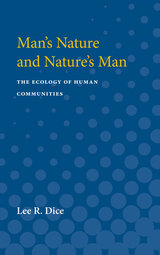 Man's Nature and Nature's Man: The Ecology of Human Communities
Lee R. Dice
University of Michigan Press, 1955 In Man's Nature and Nature's Man, Lee R. Dice tells of the interrelationship of man in his communities, of his plant and animal associates, and of how they act one upon the other. He describes the laws that govern their rise and decline, and the regulatory mechanisms set up by nature and by man himself that promote human progress. He deals with the dynamics of human populations, and with the philosophical and moral bases of human communities. Finally, he casts his eye upon the prospects before us."A series of well-regulated world communities," he writes, "is not likely to be constructed soon nor without tremendous effort and travail. Nevertheless, the evolutionary trend is in that direction. Selfishness, ignorance, and bigotry may delay the discovery and application of these principles. But no force will be able to prevent the evolution of world communities which will continually advance toward ever higher levels of culture. If effective efforts are made to discover and apply the natural laws that affect human affairs, the time required can be greatly shortened. Our future is in our own hands."
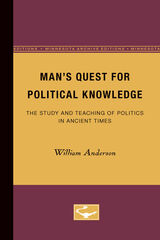 Man’s Quest for Political Knowledge: The Study and Teaching of Politics in Ancient Times
William Anderson
University of Minnesota Press, 1964
Man's Quest for Political Knowledge was first published in 1964. Minnesota Archive Editions uses digital technology to make long-unavailable books once again accessible, and are published unaltered from the original University of Minnesota Press editions.
Considering the importance of political science as an academic subject in our time, it is surprising that more attention has not been given, until now, to the history of political study and teaching. As Professor Anderson's book makes clear, an understanding of this history throws light on questions significantly related to basic problems of contemporary political science.
By placing in their historical context pertinent developments in ancient times, Professor Anderson shows how the study and teaching of politics may flourish under certain conditions and falter or fail under others. Throughout the book he demonstrates the truth of what Aristotle said about the study of politics: "In this subject as in others the best method of investigation is to study things in the process of development from the beginning."
In early chapters the author examines three literate societies of the ancient Near East—Mesopotamia, Egypt, and Israel. He then discusses, in the major section of the book, the accomplishments of the Greeks, who, with their many self-governing city-states and their secular attitude toward politics, opened up the study of politics in a realistic way. Here he gives Aristotle the most prominent role and finds Plato less important than most scholars might expect. Finally, he traces the decline of the political study and teaching in the Hellenistic period and in the time of the Roman Empire.
The volume will be of particular interest not only to political scientists but to historians, philosophers, and classical scholars.
 Man's Role in Changing the Face of the Earth
Edited by William L. Thomas Jr.
University of Chicago Press, 1956 This book presents a large-scale multidisciplinary evaluation of what has happened and is happening to the earth under man's impress. It includes the papers presented by fifty-three eminent scholars at a major conference on ecology—one of the first ever held—sponsored by the Wenner-Gren Foundation for Anthropological Research. A pioneering publication in the field of environmental research, the work has steadily contributed to ecological studies, and is now considered a classic.
The volume is organized into three parts. Part 1 deals with man's rise to the status of ecological dominance, and includes discussions of such topics as the role of fire as the first great force harnessed by man, early food-producing populations, the clearing of Europe's woodlands, subsistence economies and commercial economies, and the natural history of urbanization.
Part 2 investigates environmental changes such as man's impact upon the seas and coastlines. The highly topical ecology of wastes is discussed, as well as urban-industrial demands and the depletion of natural resources.
Part 3 is concerned with the limits of the earth's resources. It includes papers dealing with the population spiral, possible limitations of raw-material consumption and energy use, and technological denudation.
Each part is accompanied by a report summarizing the ideas discussed at the conference by the participants.
 Man’s Soul: An Introductory Essay in Philosophical Psychology
S.L. Frank
Ohio University Press, 1993 “Seymon Lyudvigovich Frank, the author of the volume here made available for the first time in English translation, was one of the leading Russian philosophers of this century; some authorities consider him the most outstanding Russian philosopher of any age…. ”Man’s Soul is a book which perfectly exemplifies the generous conception of the mission and competence of philosophy characteristic of Frank and the other members of the Russian metaphysical movement. Frank’s stated aim in the treatise is to reclaim for philosophy a field of investigation which, from the time of Plato and Aristotle to that of the Russian Idealists, philosophers had viewed as properly theirs, but which, since the mid-nineteenth century, they had allowed to fall into almost complete neglect: the study of the nature of the human soul (or psyche)…. “The moral message of Man’s Soul is well summed up by its epigraph, quoted from St. Augustine: ‘Let man first of all return to his own self, so that once he has, as it were, stepped therein, he may rise from thence and be elevated to God.’”
—from the foreword by Philip J. Swoboda
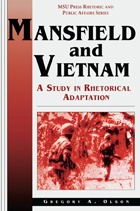 Mansfield and Vietnam: A Study in Rhetorical Adaptation
Gregory A. Olson
Michigan State University Press, 1995 Mansfield and Vietnam: A Study in Rhetorical Adaptation is the first major work to examine the role played by Senate Majority Leader Mike Mansfield, Democrat from Montana, in the formulation and execution of U.S. Vietnam policy. Drawing upon material from the Mansfield Papers, personal interviews, public speeches, and recently declassified documents, Olson traces Mansfield's journey from ardent supporter of Diem in the late 1950s to quiet critic of LBJ in the mid-1960s, and finally, to outspoken opponent of the Vietnam War in the late 1960s and early 1970s.
Olson focuses his attention on Mansfield's speaking ability and his use of the written word, analyzing the ways in which they proved crucial in shaping the policies of the Eisenhower, Kennedy, Johnson, Nixon, and Ford presidential administrations. He also examines the way personal and political situations converged to force Mansfield into the center of the stormy Vietnam controversy, and eventually into a position of leadership in the campaign to end America's military presence in Southeast Asia. To date, little has been done to evaluate the roles played by key congressional figures in the Vietnam War debate; thus, Mansfield and Vietnam is bound to become a significant contribution, not only to rhetorical studies, but also to twentieth-century diplomatic history and to the study of congressional-presidential relations.
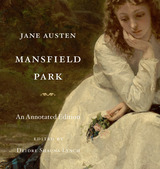 Mansfield Park: An Annotated Edition
Jane Austen
Harvard University Press, 2016 “Jane Austen lovers worldwide will cherish these books...Prepare yourself for a major treat.”
—Christian Science Monitor
Every moment has its pleasures, and its hope.
Mansfield Park is Jane Austen’s most complex and ambitious novel. Fanny Price—the story’s meek, determinedly moral protagonist—is almost too good to love. Is she admirable, or (as Austen’s own mother declared) “insipid”? Is her uncle, Sir Thomas Bertram, a warm benefactor or a stifling tyrant? In her introduction and annotations, Deidre Shauna Lynch suggests Austen’s intentions were to highlight, not to downplay, these ambiguities; in fact, they may be central to appreciating Mansfield Park. Enjoy the multifaceted story anew with this extraordinary collector’s edition.
For beginners and experts alike—immerse yourself in Jane Austen’s world: For the modern reader, our annotations provide clear explanations and illuminating context for period language and references. For the enthusiast, they offer fresh, exciting analysis—a passionate friend in the margins.
A work of art—the ideal gift: Perfect for gifting, collecting, and cherishing, this grand hardcover (9” x 9.5”) brims with hundreds of full-color illustrations that vividly recreate Austen’s world—its fashions, carriages, libraries, and estates.
The story: “I was quiet, but I was not blind.” The eldest daughter of an impoverished couple, Fanny Price is taken in by her much wealthier aunt and uncle—and their children, Edmund, Tom, Maria, and Julia—at Mansfield Park. This generosity comes as a cost: with the exception of Edmund, Fanny’s relations treat her with scorn. Content to suffer in silence, she may frustrate readers, or even be mistaken for a satirical figure. But Austen rewards Fanny’s steadfast heart with a happy ending. When the wealthy bachelor Henry (who is having an affair with the married Maria) schemes to win Fanny’s affections, she rejects him time and again. Edmund, realizing his love for Fanny, recognizes that she is a canny reader of character—judging others for their actions, not their words.
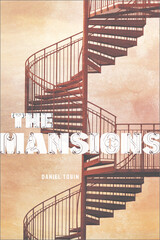 The Mansions
Daniel Tobin
Four Way Books From award-winning poet Daniel Tobin comes The Mansions, an epic trilogy of book-length poems which examines exemplary 20th-Century figures Georges Lemaître, Simone Weil, and Teilhard de Chardin, all at the crossroads of science, history, and religion. Capacious in their philosophical explorations, immaculate in their form, stirring in their alchemy of faith and empiricism, each complete section works both autonomously and as part of the whole, building a house that contains many mansions, simulating the dynamic enormity of creation itself — always already entire and yet unfinished, borderless, infinite. Immersed in a time when cataclysmic geopolitical events coincided with revolutionary scientific progress, The Mansions charts a Dantean journey as it confronts the exigencies and contingencies which define modernity: history, religion, our planet’s fate, and the purpose of humankind. A fractal symphony of voices, Tobin’s tripartite collection represents a staggering literary achievement — a lyric narrative that can hold the totality of the divine and of godlessness, that harmonizes time as change and as eternity, that sees “pendant grapes” as “embodied wine.” Its music is the harvest “cutting free the perfectly nurtured bruise-colored fruit, hour / by hour,” and its wisdom embraces the transience of all things as well as the transfiguration of the self, that everlasting impermanence: “‘I see the landscape as it is when I’m not there.’”
A Mansion's Memories
Mary Chapman Mathews
University of Alabama Press, 2006 An engaging history of The University of Alabama President’s Mansion As part of The University of Alabama’s 175th anniversary celebration (2006), the new edition of A Mansion’s Memories includes details of the tenures of the four presidents who have served since the Mathews term. Profusely illustrated with 69 black-and-white and 17 color photographs, this classic is sure to be welcomed anew by alumni and friends of the University and all lovers of fine old buildings that still function in their original capacities.
Mantegna and Painting as Historical Narrative
Jack M. Greenstein
University of Chicago Press, 1992 In this extraordinary explication of one of the most enigmatic and influential works of the Renaissance, the Uffizi Circumcision of Christ, Jack M. Greenstein reassesses the nature and goals of high humanist narrative painting.
"Greenstein has raised the level of sophistication of the historical criticism of Renaissance painting by at least one whole notch; at the same time, he has written a book for everyone interested in problems of interpretation."—David Summers, University of Virginia
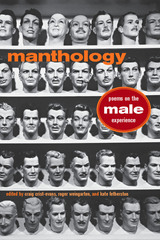 Manthology: Poems on the Male Experience
Craig Crist-Evans
University of Iowa Press, 2006 Why focus an anthology of poems on the male experience when, for centuries, men have pretty much dominated everything from politics to the literary canon? Hasn't everything that can be said about the male experience already been said? This collection proves that the answer is a resounding no.Each of the anthology's ninety-three poems spotlights an individual experience that nonetheless becomes universal. Together poems from ninety-three poets---twenty-six of them female---take on self-doubt, fatherhood, sex, death, relationships, work, war, peace, and a diversity of other topics to form a perceptive and insightful collection. “The idea isn't so much that the poems celebrate men as that they challenge the reader to discover for him or herself what is male about the poem,” says Billy Collins about the collection. Humorous, sad, celebratory, and thoughtful, Manthology gathers a surprising group of poems focused on the almost poignant intensity of the male experience, with its attendant urgencies, confusions, and hilarities.Contributors includeMarvin Bell, Robert Bly, Christopher Buckley, David Clewell, Billy Collins, Mark Doty, Rita Dove, Stuart Dybek, Lynn Emanuel, Dana Gioia, Ray González, Tony Hoagland, David Lehman, Philip Levine, Bret Lott, Campbell McGrath, Naomi Shihab Nye, Maureen Seaton, Betsy Sholl, David St. John, Charles Harper Webb, David Wojahn, and many more
A Mantis Carol
Laurens van der Post
Island Press, 1983 In his classic A Mantis Carol, Laurens van der Post tells the true story of an episode in his life that lead him from his home in London to New York City in search of one of the "First People" of his native Africa. Hans Taaibosch, a Bushman from Africa working the circus in modern America, is the focus of this remarkable tale, which begins with a recurring dream of a praying mantis and follows a web of coincidences to a deeply moving conclusion.
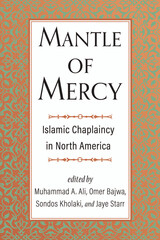 Mantle of Mercy: Islamic Chaplaincy in North America
Muhammad A. Ali
Templeton Press, 2022 This engaging collection presents thirty essays by Muslim chaplains reflecting on their experiences as spiritual caregivers. Through their first-hand accounts, they impart how they skillfully apply the mercy and compassion of the Prophet Muhammad to the people in their care. They also share how their faith informs their service, how they navigate the obstacles of a predominantly Christian profession, and how they administer to the spiritual needs of people of different faiths or of no faith at all.
Working in a variety of settings—including hospitals, prisons, universities, and the armed forces—Muslim chaplains encounter unique challenges on a daily basis, requiring them to call upon the resources of their Islamic faith with wisdom and tenderness. The contributors to this volume explore these circumstances vividly and honestly. Their personal stories are instructive of how Islamic principles can be employed with spiritual insight to bring strength and comfort to the sick and suffering.
The Mantle of the Earth: Genealogies of a Geographical Metaphor
Veronica della Dora
University of Chicago Press, 2021 The term mantle has inspired philosophers, geographers, and theologians and shaped artists’ and mapmakers’ visual vocabularies for thousands of years. According to Veronica della Dora, mantle is the “metaphor par excellence, for it unfolds between the seen and the unseen as a threshold and as a point of tension.” Featuring numerous illustrations, The Mantle of the Earth: Genealogies of a Geographical Metaphor is an intellectual history of the term mantle and its metaphorical representation in art and literature, geography and cartography. Through the history of this metaphor from antiquity to the modern day, we learn about shifting perceptions and representations of global space, about our planetary condition, and about the nature of geography itself.
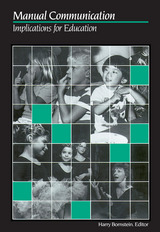 Manual Communication: Implications for Education
Harry Bornstein
Gallaudet University Press, 1990 Manual Communication: Implications for Education offers the first authoritative examination of sign systems used in the education of deaf students. Professionals, teachers, and parents will appreciate the individual, expert explanations of:
American Sign Language
Pidgin Sign (Contact Sign)
Signed English
Signing Exact English
Cued Speech. The descriptions by the acknowledged designer, administrator, or scholar of each system ensures the highest accuracy and thoroughness, distinguishing Manual Communication as a significant, important resource.
The first chapter recounts the history of sign language, particularly American Sign Language (ASL), including foreign influences and conflicts about its use. An overview follows, describing factors that affect manual communication, such as learner characteristics. Also, an analysis of a nationwide survey of teachers shows the results of their use of the various forms of manual communication in different settings.
Manual for Living
Sharon Dolin
University of Pittsburgh Press, 2016 In this sixth collection by award-winning poet Sharon Dolin, Manual for Living offers three distinct approaches to life, each one riven by flashes of joy and despair, and all conditions in between. With a fresh slant on the Stoic philosopher Epictetus, the title section offers a part-serious, part tongue-in-cheek series of advice poems. An ekphrastic sequence based on the “black paintings” of Goya follows, as a darker meditation on life. The final section, “Of Hours,” is a contemporary sequence of psalms where the possibility for redemption in prayer exists. As in all of her work, Dolin’s lyric voice attends to language and the world equally. Her verbal sleights-of-hand offer readers insights for ways to live. Manual for Living is a wise book: drink deeply from it.
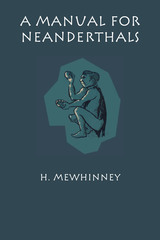 A Manual for Neanderthals
By H. Mewhinney
University of Texas Press, 1957 The story of humanity’s earliest days on earth has come down to us chiefly in the tools and weapons early hominids shaped from flint. With these tools, they gained ascendancy over less dexterous beasts and began the slow conquest of their environment. Other records, including their very bones, have largely rotted away, but their tools of flint endure. H. Mewhinney presents A Manual for Neanderthals as “a common-sense, down-to-earth study of how flint tools and weapons were made—or for that matter, can still be made by any descendant of Stone Age man.” The author first sets the scene with a delightful and informative disquisition on flintflaking and flint-flakers, and then explains clearly and concisely how he and earlier Neanderthals have made flint artifacts, illustrating each step with drawings and photographs. Archeologists and anthropologists will discover in this book a modest but genuine contribution to their fields, while collectors of Indian relics and people who like to tinker with tools and master unusual skills will find it a surprisingly practical guide to an interesting and ancient art. With patience, and with A Manual for Neanderthals at your side, you too can learn to flake flint.
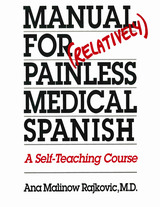 Manual for (Relatively) Painless Medical Spanish: A Self-Teaching Course
By Ana Malinow Rajkovic
University of Texas Press, 1992 Spanish-speaking patients are no rarity in United States hospitals and clinics, as many English-speaking health care providers have discovered. To help these providers better communicate with the patients they serve, Ana Malinow Rajkovic has prepared the Manual for (Relatively) Painless Medical Spanish, a lively and innovative self-teaching guide to the grammar, pronunciation, and medical vocabulary of Spanish.
Presented in a systematic and highly entertaining fashion, twelve lessons cover some of the most commonly encountered situations. These include the family clinic, the emergency room, appendicitis, the social chat, pregnancy, family planning, pelvic inflammatory disease and urinary tract infection, depression, children with asthma, patients with angina, explaining a venipuncture and a spinal tap, and patients with shortness of breath. Each lesson closes with a bilingual interview that includes vocabulary and grammar introduced in that lesson. A guide to the medical history and physical examination appears in English and Spanish in the appendix.
Excellent in the classroom or for independent learning, the Manual will enable health care providers better to understand and supply the needs of Spanish-speaking patients.
Manual for the Identification of the Birds of Minnesota and Neighboring States
Thomas S. Roberts
University of Minnesota Press, 1932
Manual for the Identification of the Birds of Minnesota and Neighboring States was first published in 1932. Minnesota Archive Editions uses digital technology to make long unavailable books once again accessible, and are published unaltered from the original University of Minnesota Press editions.
Manual for Using the MMPI-2 as a Therapeutic Intervention
Stephen E. Finn
University of Minnesota Press, 1996 This manual provides a step-by-step procedure, tested in controlled research and illustrated with case examples, for using the MMPI-2 as a therapeutic intervention. Finn covers all stages of the MMPI-2 assessment, from the initial interview, through the scoring and interpretation of the test, and culminating in the feedback session. The goal of this approach is to gather accurate information about clients with the MMPI-2 and then to use this information to help clients understand themselves and make positive changes in their lives.Finn's appraoch advocates the dynamic involvement of client and assessor both before and after testing. This appraoch to assessment is very timely given the demands that managed care is making for demonstration of treatment efficacy.Stephen Finn is Director of the Center for Therapeutic Assessment in Austin, Texas.
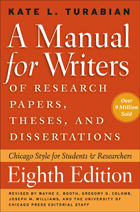 A Manual for Writers of Research Papers, Theses, and Dissertations, Eighth Edition: Chicago Style for Students and Researchers
Kate L. Turabian
University of Chicago Press, 2013 A little more than seventy-five years ago, Kate L. Turabian drafted a set of guidelines to help students understand how to write, cite, and formally submit research writing. Seven editions and more than nine million copies later, the name Turabian has become synonymous with best practices in research writing and style. Her Manual for Writers continues to be the gold standard for generations of college and graduate students in virtually all academic disciplines. Now in its eighth edition, A Manual for Writers of Research Papers, Theses, and Dissertations has been fully revised to meet the needs of today’s writers and researchers.
The Manual retains its familiar three-part structure, beginning with an overview of the steps in the research and writing process, including formulating questions, reading critically, building arguments, and revising drafts. Part II provides an overview of citation practices with detailed information on the two main scholarly citation styles (notes-bibliography and author-date), an array of source types with contemporary examples, and detailed guidance on citing online resources.
The final section treats all matters of editorial style, with advice on punctuation, capitalization, spelling, abbreviations, table formatting, and the use of quotations. Style and citation recommendations have been revised throughout to reflect the sixteenth edition of The Chicago Manual of Style. With an appendix on paper format and submission that has been vetted by dissertation officials from across the country and a bibliography with the most up-to-date listing of critical resources available, A Manual for Writers remains the essential resource for students and their teachers.
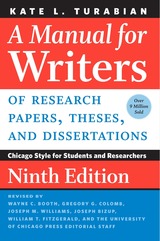 A Manual for Writers of Research Papers, Theses, and Dissertations, Ninth Edition: Chicago Style for Students and Researchers
Kate L. Turabian
University of Chicago Press, 2018 When Kate L. Turabian first put her famous guidelines to paper, she could hardly have imagined the world in which today’s students would be conducting research. Yet while the ways in which we research and compose papers may have changed, the fundamentals remain the same: writers need to have a strong research question, construct an evidence-based argument, cite their sources, and structure their work in a logical way. A Manual for Writers of Research Papers, Theses, and Dissertations—also known as “Turabian”—remains one of the most popular books for writers because of its timeless focus on achieving these goals. This new edition filters decades of expertise into modern standards. While previous editions incorporated digital forms of research and writing, this edition goes even further to build information literacy, recognizing that most students will be doing their work largely or entirely online and on screens. Chapters include updated advice on finding, evaluating, and citing a wide range of digital sources and also recognize the evolving use of software for citation management, graphics, and paper format and submission. The ninth edition is fully aligned with the recently released Chicago Manual of Style, 17th edition, as well as with the latest edition of The Craft of Research. Teachers and users of the previous editions will recognize the familiar three-part structure. Part 1 covers every step of the research and writing process, including drafting and revising. Part 2 offers a comprehensive guide to Chicago’s two methods of source citation: notes-bibliography and author-date. Part 3 gets into matters of editorial style and the correct way to present quotations and visual material. A Manual for Writers also covers an issue familiar to writers of all levels: how to conquer the fear of tackling a major writing project. Through eight decades and millions of copies, A Manual for Writers has helped generations shape their ideas into compelling research papers. This new edition will continue to be the gold standard for college and graduate students in virtually all academic disciplines. - Bestselling, trusted, and time-tested advice for writing research papers
- The best interpretation of Chicago style for higher education students and researchers
- Definitive, clear, and easy to read, with plenty of examples
- Shows how to compose a strong research question, construct an evidence-based argument, cite sources, and structure work in a logical way
- Essential for anyone interested in learning about research
- Everything any student or teacher needs to know concerning paper writing
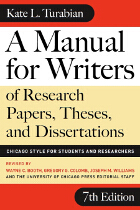 A Manual for Writers of Research Papers, Theses, and Dissertations, Seventh Edition: Chicago Style for Students and Researchers
Kate L. Turabian
University of Chicago Press, 2007
Dewey. Bellow. Strauss. Friedman. The University of Chicago has been the home of some of the most important thinkers of the modern age. But perhaps no name has been spoken with more respect than Turabian. The dissertation secretary at Chicago for decades, Kate Turabian literally wrote the book on the successful completion and submission of the student paper. Her Manual for Writers of Research Papers, Theses, and Dissertations, created from her years of experience with research projects across all fields, has sold more than seven million copies since it was first published in 1937.
Now, with this seventh edition, Turabian’s Manual has undergone its most extensive revision, ensuring that it will remain the most valuable handbook for writers at every level—from first-year undergraduates, to dissertation writers apprehensively submitting final manuscripts, to senior scholars who may be old hands at research and writing but less familiar with new media citation styles. Gregory G. Colomb, Joseph M. Williams, and the late Wayne C. Booth—the gifted team behind The Craft of Research—and the University of Chicago Press Editorial Staff combined their wide-ranging expertise to remake this classic resource. They preserve Turabian’s clear and practical advice while fully embracing the new modes of research, writing, and source citation brought about by the age of the Internet.
Booth, Colomb, and Williams significantly expand the scope of previous editions by creating a guide, generous in length and tone, to the art of research and writing. Growing out of the authors’ best-selling Craft of Research, this new section provides students with an overview of every step of the research and writing process, from formulating the right questions to reading critically to building arguments and revising drafts. This leads naturally to the second part of the Manual for Writers, which offers an authoritative overview of citation practices in scholarly writing, as well as detailed information on the two main citation styles (“notes-bibliography” and “author-date”). This section has been fully revised to reflect the recommendations of the fifteenth edition of The Chicago Manual of Style and to present an expanded array of source types and updated examples, including guidance on citing electronic sources.
The final section of the book treats issues of style—the details that go into making a strong paper. Here writers will find advice on a wide range of topics, including punctuation, table formatting, and use of quotations. The appendix draws together everything writers need to know about formatting research papers, theses, and dissertations and preparing them for submission. This material has been thoroughly vetted by dissertation officials at colleges and universities across the country.
This seventh edition of Turabian’s Manual for Writers of Research Papers, Theses, and Dissertations is a classic reference revised for a new age. It is tailored to a new generation of writers using tools its original author could not have imagined—while retaining the clarity and authority that generations of scholars have come to associate with the name Turabian.
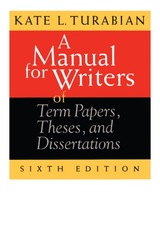 A Manual for Writers of Term Papers, Theses, and Dissertations
Kate L. Turabian evised by John Grossman and Alice Bennett
University of Chicago Press, 1996 For close to sixty years Kate L. Turabian's Manual for Writers has offered comprehensive and detailed guidance to authors of research papers—term papers, theses, and dissertations. Now the editors of The Chicago Manual of Style have revised Turabian's Manual to bring the details of style into conformity with the fourteenth edition of The Chicago Manual. This new edition of Turabian also reflects the way students work today, taking into account the role of personal computers in the preparation and presentation of their papers.
The familiar organization of this popular book remains largely unchanged. Chapter 1 describes the parts of a long formal paper. Chapters 2-5 introduce the mechanics of writing style, from abbreviations to quotations. Chapters 6 and 7 show how to prepare and refer to tables and illustrations. The section on documentation, chapters 8-12, describes two of the most commonly used systems of citation; these chapters provide many examples including guidance on how to cite electronic documents. Chapter 13, on manuscript preparation, shows how to take advantage of word processing software to present the elements of a paper clearly and effectively. Chapter 14 offers more than two dozen sample pages illustrating ways of formatting some of the complex features found in many research papers.
Authoritative, comprehensive, easy to use, and filled with good sense, this new edition will be the standard for yet another generation of students and their teachers.
Kate Turabian (1893-1987) was dissertation secretary at the University of Chicago from 1930 to 1958. This manual and her Student's Guide for Writing College Papers made her name so well known that she has become "part of the folklore of American higher education" (Quill and Scroll).
A Manual of Aquatic Plants
Norman C. Fassett; Revised Appendix by Eugene C. Ogden
University of Wisconsin Press, 2006 A Manual of Aquatic Plants can be said to be a classic; it made the identification of aquatic plants in sterile as well as in flowering or fruiting condition as simple as possible, and covers a region from Minnesota to Missouri and eastward to the Gulf of St. Lawrence and Virgina.
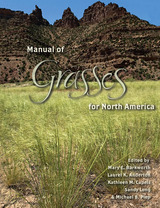 Manual of Grasses for North America
Mary E. Barkworth, Laurel K. Anderton Kathleen M. Capels, Sandy Long, and Michael B. Piep
Utah State University Press, 2007 Grasses are the world’s most important plants. They are the dominant species over large parts of the earth’s land surface, a fact that is reflected in the many different words that exist for grasslands, words such as prairie, veldt, palouse, and pampas to mention just a few. As a group, grasses are of major ecological importance, as soil binders and providers of shelter and food for wild animals, both large and small. Some grasses, such as wheat, rice, corn, barley, rye, tef, and sugar cane are major sources of calories for humans and their livestock; others, primarily bamboos, are used for construction, tools, paper, and fabric. More recently, the seed catalogs that tantalize gardeners each winter have borne witness to an increasing appreciation of the aesthetic value of grasses.
The Manual of Grasses for North America is designed as a successor to the classic volume by Hitchcock and Chase. It reflects current taxonomic thought and includes keys, illustrations, and distribution maps for the nearly 900 native and 400 introduced species that have been found in North America north of Mexico. In addition, it presents keys and illustrations for several species that are known only in cultivation or are of major agricultural significance, either as progenitors of bread wheat and corn or as a major threat to North American agriculture because of their ability to hybridize with crop species. The Manual is a major reference work for grasses that will retain its value for many years.
A Manual of Intensional Logic: 2nd Edition
Johan van Benthem
CSLI, 1988 Intensional logic, as understood here, is based on the broad presupposition that so-called "intensional contexts" in natural language can be explained semantically by the idea of multiple reference. The text reviews tense, modality, and conditionals, then presents developments in intensional theory, including partiality and generalized quantifiers.
JOHAN van BENTHEM is professor of mathematical logic at the University of Amsterdam.
Manual of Mongolian Astrology and Divination
Antoine Mostaert
Harvard University Press This volume reproduces a nineteenth-century manuscript on astrology that belonged to a Mongolian petty official whom many Mongols consulted on such questions as the outcome of illnesses, and auspicious days for marriage, burying the deceased, and lodging complaints on legal matters. The manuscript contains sixty-one leaves. In his introduction, in French, the eminent Belgian scholar Antoine Mostaert describes the content of the manuscript, noting matters of special interest and translating large portions.
Manual of Neotropical Birds, Volume 1
Emmet Reid Blake
University of Chicago Press, 1977 Containing more than one-third of the world's bird species, the neotropical region surpasses all other zoogeographic regions in the diversity of its avian fauna. Though the exploration and cataloging stages of ornithology are now virtually complete, new species and undescribed subspecies of birds are still occasionally discovered. In this manual, Emmet R. Blake has drawn on his experience of forty-eight years in the field and laboratory to prepare a comprehensive, detailed, and authoritative synopsis of the avifauna of tropical America as now known.
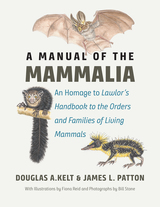 A Manual of the Mammalia: An Homage to Lawlor’s “Handbook to the Orders and Families of Living Mammals”
Douglas A. Kelt and James L. Patton
University of Chicago Press, 2020 The taxonomy of recent mammals has lately undergone tremendous revision, but it has been decades since the last update to Timothy E. Lawlor’s acclaimed identification guide the Handbook to the Orders and Families of Living Mammals. Integrating the latest advances in research, Douglas A. Kelt and James L. Patton provide this long-overdue update in their new, wholly original work, A Manual of the Mammalia.
Complemented by global range maps, high-resolution photographs of skulls and mandibles by Bill Stone, and the outstanding artwork of Fiona Reid, this book provides an overview of biological attributes of each higher taxon while highlighting key and diagnostic characters needed to identify skulls and skins of all recent mammalian orders and most families. Kelt and Patton also place taxa in their currently understood supra-familial clades, and discuss current challenges in higher mammal taxonomy. Including a comprehensive review of mammalian anatomy to provide a foundation for understanding all characters employed throughout, A Manual of the Mammalia is both a user-friendly handbook for students learning to identify higher mammal taxa and a uniquely comprehensive, up-to-date reference for mammalogists and mammal-lovers from across the globe.
Manuel de Falla and Modernism in Spain, 1898-1936
Carol A. Hess
University of Chicago Press, 2001 Although studies of Modernism have focused largely on European nations, Spain has been conspicuously neglected. As Carol A. Hess argues in this compelling book, such neglect is wholly undeserved. Through composer Manuel de Falla (1876-1946), Hess explores the advent of Modernism in Spain in relation to political and cultural tensions prior to the Spanish Civil War. The result is a fresh view of the musical life of Spain that departs from traditional approaches to the subject and reveals an open and constantly evolving aesthetic climate.
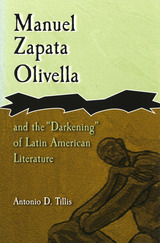 Manuel Zapata Olivella and the "Darkening" of Latin American Literature
Antonio D. Tillis
University of Missouri Press, 2005 Manuel Zapata Olivella and the “Darkening” of Latin American Literature is an examination of the fictional work of one of Latin America’s most prolific, yet overlooked, writers. Born in Colombia to parents of mixed ancestry, Zapata Olivella used his novels to explore the plight of the downtrodden in his nation and by extension the experience of blacks in other parts of the Americas. Author Antonio D. Tillis offers a critical examination of Zapata Olivella’s major works of fiction from the 1940s to the 1990s, including Tierra mojada (1947); Pasión vagabunda (1949); He visto la noche (1953); La Calle 10 (1960); En Chimá nace un santo (1963); Las claves mágicas de América (1989); and Hemingway, el cazador de la muerte (1993). Tillis focuses on the development of the “black aesthetic” in Zapata Olivella’s stories, in which the circumstances of the people of African heritage are centered in the narrative discourse. Tillis also traces Zapata Olivella’s novelistic effort to incorporate the Africa-descended subject into the literature of Latin America. A critical look at the placement of Afro–Latin American protagonists reveals the sociopolitical and historical challenges of citizenship and community. In addition, this study explores tenets of postcolonial and postmodern thought such as place, displacement, marginalization, historiographic metafiction, and chronological disjuncture in relation to Zapata Olivella’s fiction. Tillis concludes that the novelistic trajectory of this Afro-Colombian writer was one that brought into literary history an often overlooked subject: the disenfranchised citizen of African ancestry. By expanding and updating the current scholarship on Zapata Olivella, Tillis leads us to new contexts for and interpretations of this author’s work. This analysis will be welcomed by readers who are just beginning to discover the writings of Zapata Olivella, and its new approach to those writings will be appreciated by scholars who are already familiar with his works.
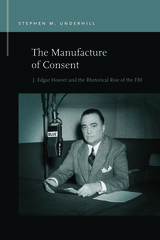 The Manufacture of Consent: J. Edgar Hoover and the Rhetorical Rise of the FBI
Stephen M. Underhill
Michigan State University Press, 2020 The second Red Scare was a charade orchestrated by a tyrant with the express goal of undermining the New Deal—so argues Stephen M. Underhill in this hard-hitting analysis of J. Edgar Hoover’s rhetorical agency. Drawing on Classification 94, a vast trove of recently declassified records that documents the longtime FBI director’s domestic propaganda campaigns in the mid-twentieth century, Underhill shows that Hoover used the growing power of his office to subvert the presidencies of Franklin D. Roosevelt and Harry S. Truman and redirect the trajectory of U.S. culture away from social democracy toward a toxic brand of neoliberalism. He did so with help from Republicans who opposed organized labor and Southern Democrats who supported Jim Crow in what is arguably the most culturally significant documented political conspiracy in U.S. history, a wholesale domestic propaganda program that brainwashed Americans and remade their politics. Hoover also forged ties with the powerful fascist leaders of the period to promote his own political ambitions. All the while, as a love letter to Clyde Tolson still preserved in Hoover’s papers attests, he strove to pass for straight while promoting a culture that demonized same-sex love. The erosion of democratic traditions Hoover fostered continues to haunt Americans today.
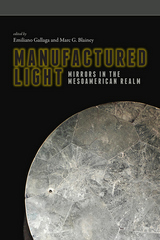 Manufactured Light: Mirrors in the Mesoamerican Realm
Emiliano Gallaga
University Press of Colorado, 2015 Complex and time-consuming to produce, iron-ore mirrors stand out among Prehispanic artifacts for their aesthetic beauty, their symbolic implications, and the complexity and skill of their assembly. Manufactured Light presents the latest archaeological research on these items, focusing on the intersection of their significance and use and on the technological aspects of the manufacturing processes that created them. The volume covers the production, meaning, and utilization of iron-ore mirrors in various Mesoamerican communities. Chapters focus on topics such as experimental archaeology projects and discussions of workshops in archaeological contexts in the Maya, Central Mexico, and northwest Mexico regions. Other chapters concentrate on the employment and ideological associations of these mirrors in Prehispanic times, especially as both sacred and luxury items. The final chapters address continuities in the use of mirrors from Prehispanic to modern times, especially in contemporary indigenous communities, with an emphasis on examining the relationship between ethnographic realities and archaeological interpretations. While the symbolism of these artifacts and the intricacy of their construction have long been recognized in archaeological discussions, Manufactured Light is the first synthesis of this important yet under-studied class of material culture. It is a must-read for students and scholars of Mesoamerican archaeology, ethnography, religion, replicative experimentation, and lithic technology.
Contirbutors include: Marc G. Blainey, Thomas Calligaro, Carrie L. Dennett, Emiliano Gallaga, Julie Gazzola, Sergio Gómez Chávez, Olivia Kindl, Brigitte Kovacevich, Achim Lelgemann, José J. Lunazzi, John J. McGraw, Emiliano Melgar, Joseph Mountjoy, Reyna Solis, and Karl Taube.
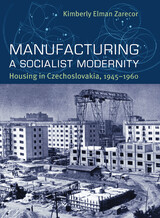 Manufacturing a Socialist Modernity: Housing in Czechoslovakia, 1945-1960
Kimberly Elman Zarecor
University of Pittsburgh Press, 2011
Eastern European prefabricated housing blocks are often vilified as the visible manifestations of everything that was wrong with state socialism. For many inside and outside the region, the uniformity of these buildings became symbols of the dullness and drudgery of everyday life. Manufacturing a Socialist Modernity complicates this common perception. Analyzing the cultural, intellectual, and professional debates surrounding the construction of mass housing in early postwar Czechoslovakia, Zarecor shows that these housing blocks served an essential function in the planned economy and reflected an interwar aesthetic, derived from constructivism and functionalism, that carried forward into the 1950s.
With a focus on prefabricated and standardized housing built from 1945 to 1960, Zarecor offers broad and innovative insights into the country’s transition from capitalism to state socialism. She demonstrates that during this shift, architects and engineers consistently strove to meet the needs of Czechs and Slovaks despite challenging economic conditions, a lack of material resources, and manufacturing and technological limitations. In the process, architects were asked to put aside their individual creative aspirations and transform themselves into technicians and industrial producers.
Manufacturing a Socialist Modernity is the first comprehensive history of architectural practice and the emergence of prefabricated housing in the Eastern Bloc. Through discussions of individual architects and projects, as well as building typologies, professional associations, and institutional organization, it opens a rare window into the cultural and economic life of Eastern Europe during the early postwar period.
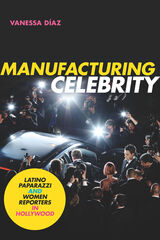 Manufacturing Celebrity: Latino Paparazzi and Women Reporters in Hollywood
Vanessa Diaz
Duke University Press, 2020 In Manufacturing Celebrity Vanessa Díaz traces the complex power dynamics of the reporting and paparazzi work that fuel contemporary Hollywood and American celebrity culture. Drawing on ethnographic fieldwork, her experience reporting for People magazine, and dozens of interviews with photographers, journalists, publicists, magazine editors, and celebrities, Díaz examines the racialized and gendered labor involved in manufacturing and selling relatable celebrity personas. Celebrity reporters, most of whom are white women, are expected to leverage their sexuality to generate coverage, which makes them vulnerable to sexual exploitation and assault. Meanwhile, the predominantly male Latino paparazzi can face life-threatening situations and endure vilification that echoes anti-immigrant rhetoric. In pointing out the precarity of those who hustle to make a living by generating the bulk of celebrity media, Díaz highlights the profound inequities of the systems that provide consumers with 24/7 coverage of their favorite stars.
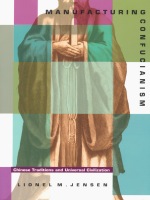 Manufacturing Confucianism: Chinese Traditions and Universal Civilization
Lionel M. Jensen
Duke University Press, 1998 Could it be that the familiar and beloved figure of Confucius was invented by Jesuit priests? In Manufacturing Confucianism, Lionel M. Jensen reveals this very fact, demonstrating how sixteenth- and seventeenth-century Western missionaries used translations of the ancient ru tradition to invent the presumably historical figure who has since been globally celebrated as philosopher, prophet, statesman, wise man, and saint.
Tracing the history of the Jesuits’ invention of Confucius and of themselves as native defenders of Confucius’s teaching, Jensen reconstructs the cultural consequences of the encounter between the West and China. For the West, a principal outcome of this encounter was the reconciliation of empirical investigation and theology on the eve of the scientific revolution. Jensen also explains how Chinese intellectuals in the early twentieth century fashioned a new cosmopolitan Chinese culture through reliance on the Jesuits’ Confucius and Confucianism. Challenging both previous scholarship and widespread belief, Jensen uses European letters and memoirs, Christian histories and catechisms written in Chinese, translations and commentaries on the Sishu, and a Latin summary of Chinese culture known as the Confucius Sinarum Philosophus to argue that the national self-consciousness of Europe and China was bred from a cultural ecumenism wherein both were equal contributors.
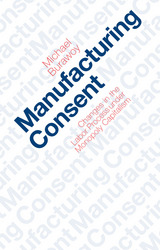 Manufacturing Consent: Changes in the Labor Process Under Monopoly Capitalism
Michael Burawoy
University of Chicago Press, 1982 Since the 1930s, industrial sociologists have tried to answer the question, Why do workers not work harder? Michael Burawoy spent ten months as a machine operator in a Chicago factory trying to answer different but equally important questions: Why do workers work as hard as they do? Why do workers routinely consent to their own exploitation?
Manufacturing Consent, the result of Burawoy's research, combines rich ethnographical description with an original Marxist theory of the capitalist labor process. Manufacturing Consent is unique among studies of this kind because Burawoy has been able to analyze his own experiences in relation to those of Donald Roy, who studied the same factory thirty years earlier. Burawoy traces the technical, political, and ideological changes in factory life to the transformations of the market relations of the plant (it is now part of a multinational corporation) and to broader movements, since World War II, in industrial relations.
 Manufacturing Discontent: The Trap of Individualism in Corporate Society
Michael Perelman
Pluto Press, 2005 Corporate power has a huge impact on the rights and privileges of individuals—as workers, consumers, and citizens. This book explores the myth of individualism, which makes people perceive themselves as having choices, when in fact most peoples' options are very limited.
Perelman describes the manufacture of unhappiness—the continual generation of dissatisfaction with products people are encouraged to purchase and quickly discard—and the complex techniques corporations employ to avoid responsibility and accountability to their workers, consumers and the environment. He outlines ways in which individuals can surpass individualism and instead work together to check the growing power of corporations.
While other books have surveyed the corporate landscape, or decried modern consumerism, Perelman, a professor of economics, places these ideas within a proper economic and historical context. He explores the limits of corporate accountability and responsibility, and investigates the relation between a wide range of phenomena such as food, fear and terrorism. Highly readable, Manufacturing Discontent will appeal to anyone with an interest in the way society works—and what really determines the rights of individuals in a corporate society.
Michael Perelman, Professor of Economics at California State University, Chico, received his Ph.D. from the University of California, Berkeley. He is the author of several books on economics and economic thought, including Railroading Economics (Routledge, 2006); Class Warfare in the Information Age (Palgrave Macmillan, 2000); The Invention of Capitalism (Duke University Press, 2000) and The Perverse Economy (Palgrave Macmillan, 2003).
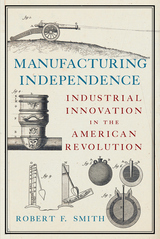 Manufacturing Independence: Industrial Innovation in the American Revolution
Robert F. Smith
Westholme Publishing, 2021 The Untold Story of the Industrial Revolution and the American Victory in the War for Independence
Benjamin Franklin was serious when he suggested the colonists arm themselves with the longbow. The American colonies were not logistically prepared for the revolution and this became painfully obvious in war’s first years. Trade networks were destroyed, inflation undermined the economy, and American artisans could not produce or repair enough weapons to keep the Continental Army in the field. The Continental Congress responded to this crisis by mobilizing the nation’s manufacturing sector for war. With information obtained from Europe through both commercial exchange and French military networks, Congress became familiar with the latest manufacturing techniques and processes of the nascent European industrial revolution. They therefore initiated an innovative program of munitions manufacturing under the Department of the Commissary General of Military Stores. The department gathered craftsmen and workers into three national arsenals where they were trained for the large-scale production of weapons. The department also engaged private manufacturers, providing them with materials and worker training, and instituting a program of inspecting their finished products.
As historian Robert F. Smith relates in Manufacturing Independence: Industrial Innovation in the American Revolution, the colonies were able to provide their military with the arms it needed to fight, survive, and outlast the enemy—supplying weapons for the victory at Saratoga, rearming their armies in the South on three different occasions, and providing munitions to sustain the siege at Yorktown. But this manufacturing system not only successfully supported the Continental Army, it also demonstrated new production ideas to the nation. Through this system, the government went on to promote domestic manufacturing after the war, becoming a model for how the nation could produce goods for its own needs. The War for Independence was not just a political revolution, it was an integral part of the Industrial Revolution in America.
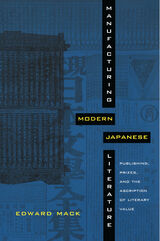 Manufacturing Modern Japanese Literature: Publishing, Prizes, and the Ascription of Literary Value
Edward Mack
Duke University Press, 2010 Emphasizing how modes of book production, promotion, and consumption shape ideas of literary value, Edward Mack examines the role of Japan’s publishing industry in defining modern Japanese literature. In the late nineteenth century and early twentieth, as cultural and economic power consolidated in Tokyo, the city’s literary and publishing elites came to dominate the dissemination and preservation of Japanese literature. As Mack explains, they conferred cultural value on particular works by creating prizes and multivolume anthologies that signaled literary merit. One such anthology, the Complete Works of Contemporary Japanese Literature (published between 1926 and 1931), provided many readers with their first experience of selected texts designated as modern Japanese literature. The low price of one yen per volume allowed the series to reach hundreds of thousands of readers. An early prize for modern Japanese literature, the annual Akutagawa Prize, first awarded in 1935, became the country’s highest-profile literary award. Mack chronicles the history of book production and consumption in Japan, showing how advances in technology, the expansion of a market for literary commodities, and the development of an extensive reading community enabled phenomena such as the Complete Works of Contemporary Japanese Literature and the Akutagawa Prize to manufacture the very concept of modern Japanese literature.
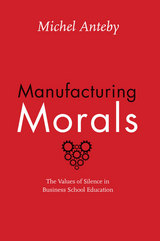 Manufacturing Morals: The Values of Silence in Business School Education
Michel Anteby
University of Chicago Press, 2013 Corporate accountability is never far from the front page, and as one of the world’s most elite business schools, Harvard Business School trains many of the future leaders of Fortune 500 companies. But how does HBS formally and informally ensure faculty and students embrace proper business standards? Relying on his first-hand experience as a Harvard Business School faculty member, Michel Anteby takes readers inside HBS in order to draw vivid parallels between the socialization of faculty and of students.
In an era when many organizations are focused on principles of responsibility, Harvard Business School has long tried to promote better business standards. Anteby’s rich account reveals the surprising role of silence and ambiguity in HBS’s process of codifying morals and business values. As Anteby describes, at HBS specifics are often left unspoken; for example, teaching notes given to faculty provide much guidance on how to teach but are largely silent on what to teach. Manufacturing Morals demonstrates how faculty and students are exposed to a system that operates on open-ended directives that require significant decision-making on the part of those involved, with little overt guidance from the hierarchy. Anteby suggests that this model—which tolerates moral complexity—is perhaps one of the few that can adapt and endure over time.
Manufacturing Morals is a perceptive must-read for anyone looking for insight into the moral decision-making of today’s business leaders and those influenced by and working for them.
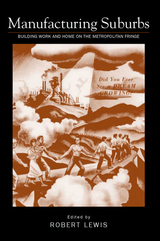 Manufacturing Suburbs: Building Work And Home
edited by Robert Lewis
Temple University Press, 2004 Urban historians have long portrayed suburbanization as the result of a bourgeois exodus from the city, coupled with the introduction of streetcars that enabled the middle class to leave the city for the more sylvan surrounding regions. Demonstrating that this is only a partial version of urban history, Manufacturing Suburbs reclaims the history of working-class suburbs by examining the development of industrial suburbs in the United States and Canada between 1850 and 1950. Contributors demonstrate that these suburbs developed in large part because of the location of manufacturing beyond city limits and the subsequent building of housing for the workers who labored within those factories. Through case studies of industrial suburbanization and industrial suburbs in several metropolitan areas (Chicago, Baltimore, Detroit, Pittsburgh, Los Angeles, San Francisco, Toronto, and Montreal), Manufacturing Suburbs sheds light on a key phenomenon of metropolitan development before the Second World War.
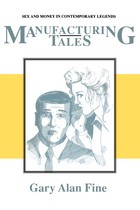 Manufacturing Tales: Sex and Money in Contemporary Legends
Gary Alan Fine
University of Tennessee Press, 1992 "The reader can see in Fine's collected essays the emergence of a coherent theoretical model for understanding the ways in which social structure, personal imperatives, and performance dynamics interact in the commercial legends we hear so often. Fine's impressive credentials in sociology and social psychology clearly help him to say something new about urban legends." —Jay Mechling, University of California, Davis
"Professor Fine provides here the first detailed theoretical overview of contemporary legends and their study. This is a landmark work in outlining and demonstrating the methods of sociological and psychological analysis of urban legends too often slighted by folklorists. Fine's own studies in the social dynamics of legend development and transmission are models of thoroughness and clear thinking." —Jan Harold Brunvard, University of Utah
The mouse in the Coke bottle, the promiscuous cheerleader, the exploding Pop Rocks candy, the Kentucky Fried Rat. If the ballad and the fairy tale were the archetypal folklore forms of an earlier age, such contemporary legends constitute the preferred narrative genre of the late twentieth century. In Manufacturing Tales, award-winning folklorist Gary Alan Fine presents a major new theory of the creation and diffusion of contemporary legends in modern society.
While ballad and fairy tale arose in folk communities and spread through trade and migration, contemporary legends thrive in societies crosscut by varied communication channels and relatively open networks. By looking at the social-structural background, the performance context, the personality of the teller, and the content of the text, we gain insight into the formation, dissemination, and disappearance of these modern legends.
Fine identifies sex and money as key themes in contemporary legends, reflecting the public's disguised attempts to deal with major contemporary preoccupations. From the AIDS crisis to fears of food contamination in restaurants, popular anxieties are reflected in folklore. As dramatic, moving, comic, and involving texts, contemporary legends build relationships among acquaintances and strangers; as depictions of the world that we face every day, they provide perspective on potential challenges; and as shared information, they elaborate a consensual understanding of reality.
The Author: Gary Alan Fine is professor and head of the Department of Sociology at the University of Georgia. He received the Opie Award for his book With the Boys: Little League Baseball and Preadolescent Culture.
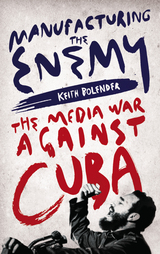 Manufacturing the Enemy: The Media War Against Cuba
Keith Bolender
Pluto Press, 2019 Mainstream media in the United States for the past 60 years has converged with the neo-colonial foreign policy objectives of the state to create a misinformed, biased narrative against the Cuban revolution. Using extensive examples, including pre-revolutionary historic coverage, journalist Keith Bolender reveals how the national press has established an anti-Cuba chronicle in adherence to Washington's unrelenting regime change policies. From coverage of the Bay of Pigs, Cuban Missile Crisis, the Cuban Five and the current issues of Obama's 'Cuban Thaw' in 2014 to the renewed hostility under the Trump Administration, the edition examines with specific clarity how damaging corporate media treatment of Cuba is to the understanding of the revolution and those who continue to support it. This original treatment scrutinises the foundation for the media’s hostility against Cuba's socialist political/economic system, providing new insight into the propaganda workings of the so called 'free' press in the US and across Western liberal democracies. The work is a unique resource for activists, journalists and students interested in the ever-complicated relationship between the United States and its island neighbour to the south.
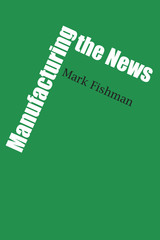 Manufacturing the News
By Mark Fishman
University of Texas Press, 1980 There is little argument that mass media news projects a particular point of view. The question is how that bias is formed. Most media critics look to the attitudes of reporters and editors, the covert news policy of a publisher, or the outside pressures of politicians and advertisers. Manufacturing the News takes a different tack. Mark Fishman’s research shows how the routine methods of gathering news, rather than any hidden manipulators, determine the ideological character of the product. News organizations cover the world mainly through “beats,” which tend to route reporters exclusively through governmental agencies and corporate bureaucracies in their search for news. Crime, for instance, is covered through the police and court bureaucracies; local politics through the meetings of the city council, county commissioners, and other official agencies. Reporters under daily deadlines come to depend upon these organizations for the predictable, steady flow of raw news material they provide. It is part of the function of such bureaucracies to transform complex happenings into procedurally defined “cases.” Thus the information they produce for newsworkers represents their own bureaucratic reality. Occurrences which are not part of some bureaucratic phase are simply ignored. Journalists participate in this system by publicizing bureaucratic reality as hard fact, while accounts from other sources are treated as unconfirmed reports which cannot be published without time-consuming investigation. Were journalists to employ different methods of news gathering, Fishman concludes, a different reality would emerge in the news—one that might challenge the legitimacy of prevailing political structures. But, under the traditional system, news reports will continue to support the interests of the status quo independently of the attitudes and intentions of reporters, editors, and news sources.
 The Manuscript Books of Emily Dickinson: A Facsimile Edition
Emily Dickinson
Harvard University Press, 1981 Here for the first time is the poetry of Emily Dickinson as she herself “published” it in the privacy of her upstairs room in the house in Amherst.
She invented her own form of bookmaking. Her first drafts, jotted on odd scraps of paper, were discarded when transcribed. Completed poems were neatly copied in ink on sheets of folded stationery which she arranged in groups, usually of sixteen to twenty-four pages, and sewed together into packets or fascicles. These manuscript books were her private mode of publication, a substitute perhaps for the public mode that, for reasons unexplained, she denied herself. In recent years there has been increasing interest in the fascicles as artistic gathering, intrarelated by theme, imagery, or emotional movement. But no edition in the past, not even the variorum, or has arranged the poems in the sequence in which they appear in the manuscript books.
Emily Dickinson’s poems, more than those of any other poet, resist translation into the medium of print. Since she never saw a manuscript through the press, we cannot tell how she would have adapted for print her unusual capitalization, punctuation, line and stanza divisions, and alternate readings. The feather-light punctuation, in particular, is misrepresented when converted to conventional stop or even to dashes.
This elegant edition presents all of Emily Dickinson’s manuscript books and unsewn fascicle sheets—1,148 poems on 1,250 pages—restored insofar as possible to their original order, as they were when her sister found them after her death. The manuscripts are reproduced with startling fidelity in 300-line screen. Every detail is preserved: the bosses on the stationery, the sewing holes and tears, and poet’s alternate reading and penciled revisions, ink spots and other stains offset onto adjacent leaves, and later markings by Susan Dickinson, Mabel Todd, and others. The experience of reading these facsimile pages is virtually the same as reading the manuscripts themselves. Supplementary information is provided in introductions, notes, and appendices.
 Manuscript Essays and Notes
William James
Harvard University Press, 1988 When William James died in 1910 he left a large body of manuscript material that has never appeared in print. Much of it is of biographical interest only, but the largest part is concerned with James's work. The present volume, the first of two that will bring The Works of William James to completion, includes the manuscripts devoted to work in progress on philosophical and psychological subjects. The last volume will bring together the manuscripts relating to James's public lectures and teaching.
The most important of these manuscripts are those of the years 1903 and 1904 called "The Many and the One." This was material for the book that James hoped would be the full technical exposition of his philosophy of radical empiricism. It contains discussions of problems and concepts that are not found in his published work. Closely related to this are his responses to the so-called Miller-Bode objections, which charged that his philosophy of pure experience could not solve the problem of the many and the one or the question "How can two minds know the same thing?" James's notes record his offers to work his way out of the impasse, which eventually led to his formulation of radical empiricism and his total rejection of the mind-body dualism that had dominated Western philosophy since Descartes.
The manuscripts in the rest of the volume contain James's reflections over a period of forty years in the form of drafts, memoranda, and notebook entries. The diverse subjects are arranged under the headings of Philosophy, Psychology, Aesthetics, Ethics, and Religion. Of special interest are the early notes in which James began to work out his own philosophical point of view.
 Manuscript Lectures
William James
Harvard University Press, 1988 This final volume of The Works of William James provides a full record of James's teaching career at Harvard from 1872 to 1907. It includes extensive working notes for lectures in more than twenty courses. Some of the notes contain summary statements of views of James's that have never been published before, such as his treatment of the question of proof in ethics, in the only course he ever taught in that subject; others reflect contemporary controversies in philosophy, notably the famous debate on Idealism and the nature of the Absolute; still others illuminate early stages of James's thinking on crucial problems in what was to become his philosophy of radical empiricism. Often the notes yield information about his sources that is not to be found in the published writings. Because James's teaching was so closely involved with the development of his thought, this unpublished material adds a new dimension to our understanding of his philosophy.
James's public lectures gained him world renown, and most of them were subsequently published. There are, however, several sets of notes for and drafts of important lectures that he never wrote out for publication; these are included in the present volume. Among them are his two series of lectures in 1878 on the physiology of the brain and its relation to the mind; the Lowell Lectures of 1896 on exceptional mental states; and the lectures of 1902 on intellect and feeling in religions, which were designed to supplement Varieties of Religious Experience and were intended to be his last word on the psychology of religion.
 The Manuscript Poems of A.E. Housman: Eight Hundred Lines of Hitherto Uncollected Verse from the Author’s Notebooks
Tom Burns Haber, Editor
University of Minnesota Press, 1955 The Manuscript Poems of A.E. Housman was first published in 1955. Minnesota Archive Editions uses digital technology to make long-unavailable books once again accessible, and are published unaltered from the original University of Minnesota Press editions. Poetry lovers everywhere, and devotees of A. E. Housman in particular, will recognize a major literary event in the publication of this volume, for it makes available for the first time some 800 lines of hitherto unpublished poetry by the well-loved author of A Shropshire Lad. This is a significant addition to the Housman treasury because the English poet published a total of only 2216 lines of poetry during his lifetime. Dr. Haber has drawn the material for this volume from the four Housman notebooks in the Library of Congress, where they were deposited in 1940, four years after the poet's death. In an introductory section the editor describes the notebooks themselves and tells in detail the fascinating story of how the manuscripts—erased, canceled and glued fast to mounting sheets — were preserved and deciphered. The notebooks, dated from 1890 to 1925, contain the most valuable manuscript remains of Housman's poetic writings. In the material that is published here for the first time there are included complete poems, fragments of poems, and abandoned lines and stanzas from well-known lyrics. In addition the editor has provided a list of variants which the poet inserted into his printers' copies of A Shropshire Lad and Last Poems. Among the newly published complete poems are some that Dr. Haber believes should be ranked with Housman's outstanding work. In the material that shows the poet's revisions of his own writings, the reader is afforded an intimate glimpse into the creative processes of a poetic genius, a privilege that will be especially appreciated by students and critics. Many explanatory notes are appended to show how Housman's poetry matured from first draft, through final copy, to the printed page.
Manuscripts of the Latin Classics 800-1200
Erik Kwakkel
Amsterdam University Press, 2015 This volume explores the production and use of medieval manuscripts that contain classical Latin texts. Six experts in the field address a range of topics related to these manuscripts, including how classical texts were disseminated throughout medieval society, how readers used and interacted with specific texts, and what these books look like from a material standpoint. This collection of essays also considers the value of studying classical manuscripts as a distinct group, and demonstrates how such a collective approach can add to our understanding of how classical works functioned in medieval society. Focusing on the period 800-1200, when classical works played a crucial role in the teaching of grammar, rhetoric, and dialectics, this volume investigates how classical Latin texts were copied, used, and circulated in both discrete and shared contexts.
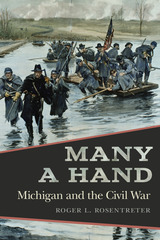 Many a Hand: Michigan and the Civil War
Roger L. Rosentreter
Michigan State University Press, 2026 When war came to the nation in 1861, Michiganians rallied around the Stars and Stripes and readily agreed with a veteran politician who declared, “He who is not for his country is against her.” Even as the conflict grew bloody and costly, they remained committed to suppressing the rebellion. By war’s end, an astonishing 50 percent of its military-age males had enlisted in the army. This Michigan Civil War chronicle is more than a story about soldiers’ heroism on distant battlefields. It also includes the often-overlooked role of women—some of whom refused to stay home and went to war. Also buried in the historical record are accounts of white soldiers whose views on slavery and African Americans, especially those in uniform, were transformed. There is also a much-needed exploration of Michigan’s response to the shocking assassination of a beloved president. Many a Hand captures these stories in a single volume.
The Many and the Few: A Chronicle of the Dynamic Auto Workers
Henry Kraus. With an Introduction by Neil O. Leighton, William J. Meyer, and Nan Pendrell
University of Illinois Press, 1985 The Many and the Few recounts the dramatic "inside" story of one of the pivotal strikes in American history. For six weeks in 1937, workers at General Motors' Flint, Michigan, plant refused to budge from their sit-down strike. That action changed the course of industrial and labor history, when General Motors finally agreed to recognize the United Auto Workers as the sole bargaining agent in all GM plants. Through it all, UAW activist Henry Kraus was there.
Many Californias: Literature from the Golden State
Gerald W. Haslam
University of Nevada Press, 1999 Haslam divides the state into five regions, selecting prose and poetry from each that reflects their history, terrain, and culture. Many Califonias features sixty-seven authors ranging from Jack London to Maxine Hong Kingston, making it the most diverse general-interest anthology available.
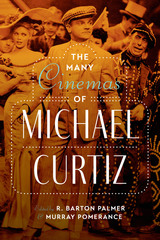 The Many Cinemas of Michael Curtiz
Edited by R. Barton Palmer and Murray Pomerance
University of Texas Press, 2018 Director Michael Curtiz was the mastermind behind some of the most iconic films of classical Hollywood—Casablanca, Yankee Doodle Dandy, The Sea Hawk, White Christmas, and Mildred Pierce, to name only a few. The most prolific and consistently successful Hollywood generalist with an all-embracing interest in different forms of narrative and spectacle, Curtiz made around a hundred films in an astonishing range of genres: action, biopics, melodramas/film noir, musicals, and westerns. But his important contributions to the history of American film have been overlooked because his broadly varied oeuvre does not present the unified vision of filmmaking that canonical criticism demands for the category of “auteur.” Exploring his films and artistic practice from a variety of angles, including politics, gender, and genre, The Many Cinemas of Michael Curtiz sheds new light on this underappreciated cinematic genius. Leading film studies scholars offer fresh appraisals of many of Curtiz’s most popular films, while also paying attention to neglected releases of substantial historical interest, such as Noah’s Ark , Night and Day, Virginia City, Black Fury, Mystery of the Wax Museum, and Female. Because Curtiz worked for so long and in so many genres, this analysis of his work becomes more than an author study of a notable director. Instead, The Many Cinemas of Michael Curtiz effectively adds a major chapter to the history of Hollywood’s studio era, including its internationalism and the significant contributions of European émigrés.
The Many Deaths of Inocencio Rodriguez
Iliana Rocha
Tupelo Press, 2022 The Many Deaths of Inocencio Rodriguez chronicles an obsession with the 1971 unsolved murder of Rocha’s grandfather while interrogating the true crime genre, tabloid culture, immigrant identity, the phenomena of missing and murdered women, troubled relationships with law enforcement, and the intersection of prose and poetry. Because the details of his death were (and are) terribly unclear, part of how the family reconstructed him was to share the different accounts heard over the decades, and this collection attempts to pin down these shifts and contours through destabilizing form and genre. Each speaker reconfigures a past mysterious and tenuous, clouded by distance, language, and time in order to demonstrate how Inocencio Rodriguez defies a single narrative.
The Many Faces of Agreement: Morphology, Syntax, Semantics, and Discourse Factors in Serbo-Croatian Agreement
Stephen Wechsler and Larisa Zlatic
CSLI, 2003 Agreement features correlate closely with semantics as well as with noun morphology. This book presents a precise formal theory of those correlations, illustrated with Serbo-Croatian and other languages. In explaining regular agreement as a network of constraints, the theory also predicts a restricted set of exceptional situations where normal agreement can give way to agreement mismatches.
With this framework in place, the authors explore a number of factors that affect agreement processes. The theory even explains the striking cross-linguistic generalizations expressed in Corbett's Agreement Hierarchy. Agreement is shown to be a distributed phenomenon, manifesting its many faces among the various components of grammar.
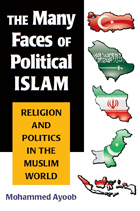 The Many Faces of Political Islam: Religion and Politics in the Muslim World
Mohammed Ayoob
University of Michigan Press, 2009
Analysts and pundits from across the American political spectrum describe Islamic fundamentalism as one of the greatest threats to modern, Western-style democracy. Yet very few non-Muslims would be able to venture an accurate definition of political Islam. Mohammed Ayoob's The Many Faces of Political Islam thoroughly describes the myriad manifestations of this rising ideology and analyzes its impact on global relations.
"In this beautifully crafted and utterly compelling book, Mohammed Ayoob accomplishes admirably the difficult task of offering a readily accessible yet nuanced and comprehensive analysis of an issue of enormous political importance. Both students and specialists will learn a great deal from this absolutely first-rate book."
---Peter J. Katzenstein, Walter S. Carpenter, Jr. Professor of International Studies and Stephen H. Weiss Presidential Teaching Fellow, Cornell University
"Dr. Ayoob addresses the nuances and complexities of political Islam---be it mainstream, radical, or militant---and offers a road map of the pivotal players and issues that define the movement. There is no one as qualified as Mohammed Ayoob to write a synthesis of various manifestations of political Islam. His complex narrative highlights the changes and shifts that have taken place within the Islamist universe and their implications for internal Muslim politics and relations between the world of Islam and the Christian world."
---Fawaz A. Gerges, Carnegie Scholar, and holds the Christian A. Johnson Chair in International Affairs and Middle Eastern Studies, Sarah Lawrence College
"Let's hope that many readers---not only academics but policymakers as well---will use this invaluable book."
---François Burgat, Director, French National Centre for Scientific Research (CNRS) and the Institute for Research and Study on the Arab and Muslim World (IREMAM), Aix-en-Provence, France
"This is a wonderful, concise book by an accomplished and sophisticated political scientist who nonetheless manages to convey his interpretation of complex issues and movements to even those who have little background on the subject. It is impressive in its clarity, providing a badly needed text on political Islam that's accessible to college students and the general public alike."
---Shibley Telhami, Anwar Sadat Professor for Peace and Development, University of Maryland, and Senior Fellow, Brookings Institution
Mohammed Ayoob is University Distinguished Professor of International Relations with a joint appointment in James Madison College and the Department of Political Science at Michigan State University. He is also Coordinator of the Muslim Studies Program at Michigan State University.
The Many Faces of Political Islam, Second Edition: Religion and Politics in Muslim Societies
Mohammed Ayoob and Danielle N. Lussier
University of Michigan Press, 2020 Analysts and pundits from across the American political spectrum describe Islamic fundamentalism as one of the greatest threats to modern, Western-style democracy. Yet very few non-Muslims would be able to venture an accurate definition of political Islam. Fully revised and updated, The Many Faces of Political Islam thoroughly analyzes the many facets of this political ideology and shows its impact on global relations.
 The Many Faces of Sandinista Democracy
Katherine Hoyt
Ohio University Press, 1997 Taking power in Nicaragua in 1979 as a revolutionary party, the Sandinista National Liberation Front (FSLN) was willing to put its fate in the hands of the Nicaraguan people twice, in 1984 and 1990. The party wrote a democratic constitution and then, remarkably, accepted the decision of the majority by relinquishing power upon its defeat in the 1990 election. The Many Faces of Sandinista Democracy explores the conflicts involving different visions of political and economic democracy, as well as new radical thought on participatory democracy. The latter addresses the problems popular organizations encountered as they moved from subservience to the FSLN in the 1980s to the liberating but disorientating electoral defeat of 1990. Up until the moment of defeat, the Sandinistas saw themselves as the true vanguard of the Nicaraguan people, able to submit themselves to free elections, because they felt they truly represented the general will of the people. Dr. Hoyt brings to an international audience for the first time a study of the ideas of several Nicaraguan thinkers. She examines the conflicts surrounding the development of ideas within the FSLN, as well as the strengths and weaknesses of its rare combination of democratic and vanguard principles.
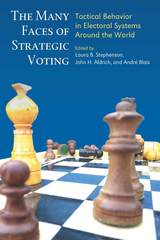 The Many Faces of Strategic Voting: Tactical Behavior in Electoral Systems Around the World
Laura B. Stephenson, John H. Aldrich, and André Blais, Editors
University of Michigan Press, 2018 Voters do not always choose their preferred candidate on election day. Often they cast their ballots to prevent a particular outcome, as when their own preferred candidate has no hope of winning and they want to prevent another, undesirable candidate’s victory; or, they vote to promote a single-party majority in parliamentary systems, when their own candidate is from a party that has no hope of winning. In their thought-provoking book The Many Faces of Strategic Voting, Laura B. Stephenson, John H. Aldrich, and André Blais first provide a conceptual framework for understanding why people vote strategically, and what the differences are between sincere and strategic voting behaviors. Expert contributors then explore the many facets of strategic voting through case studies in Great Britain, Spain, Canada, Japan, Belgium, Germany, Switzerland, and the European Union.
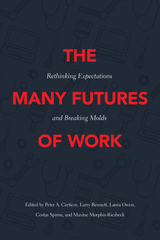 The Many Futures of Work: Rethinking Expectations and Breaking Molds
Edited by Peter A. Creticos, Larry Bennett, Laura Owen, Costas Spirou, and Maxine Morphis-Riesbeck
Temple University Press, 2021 What will work eventually look like? This is the question at the heart of this timely collection. The editors and contributors—a mix of policy experts, academics, and advocates—seek to reframe the typical projections of the “future” of work. They examine the impact of structural racism on work, the loss of family‑sustaining jobs, the new role of gig work, growing economic inequality, barriers to rewarding employment such as age, gender, disability, and immigration status, and the business policies driving these ongoing challenges. Together the essays present varied and practical insights into both U.S. and global trends, discuss the role of labor activism in furthering economic justice, and examine progressive strategies to improve the experience of work, wages, and the lives of workers. The Many Futures of Work offers a range of viable policies and practices that can promote rewarding employment and steer our course away from low-wage, unstable jobs toward jobs that lead to equitable prosperity and economic inclusion.
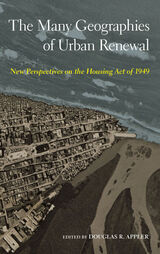 The Many Geographies of Urban Renewal: New Perspectives on the Housing Act of 1949
Edited by Douglas R. Appler
Temple University Press, 2023 The consequences of the federal Housing Act of 1949—which supported the clearance and redevelopment of “blighted” areas across the nation—were felt by communities of all sizes, not just large cities. The Many Geographies of Urban Renewal presents a more comprehensive view of the federal urban renewal program by situating the experiences of large cities like Baltimore, MD and Philadelphia PA alongside other geographies, such as the small city of Waterville, ME, suburban St. Louis County in Missouri, the State of New York, the Commonwealth of Puerto Rico, and others. Chapters identify trends and connections that cut across jurisdictional boundaries, investigate who used federal funds, how those funds were used, and examine the profound short and long-term consequences of the program.
Taken as a whole, the essays showcase the unexpected diversity of how different communities used the federal urban renewal program. The Many Geographies of Urban Renewal allows us to better understand what was arguably the most significant urban policy of the 20th century, and how that policy shaped the American landscape.
Contributors include Francesca Russello Ammon, Brent Cebul, Robert B. Fairbanks, Leif Fredrickson, Colin Gordon, David Hochfelder, Robert K. Nelson, Benjamin D. Lisle, Stacy Kinlock Sewell and the editor.
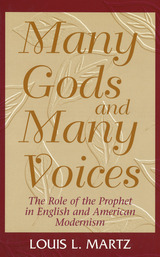 Many Gods and Many Voices: The Role of the Prophet in English and American Modernism
Louis L. Martz
University of Missouri Press, 1998
In Many Gods and Many Voices distinguished scholar Louis L. Martz addresses works by Ezra Pound, T. S. Eliot, William Carlos Williams, H. D., and D. H. Lawrence, with brief treatment of the relation of Pound's Cantos to Joyce's Ulysses. In a graceful, lucid style, Martz argues that a prophetic tradition is represented in the Cantos, The Waste Land, Paterson, and H. D.'s Trilogy and Helen in Egypt, along with Lawrence's Plumed Serpent and the second version of Lady Chatterley's Lover. Pound's often- cited view that an epic is a poem that "includes history" does not define epic alone, for the books of biblical prophecy also contain history: the history of Israel's misdeeds and continuous redemption.
On the other hand, Martz suggests that the term prophecy should not be limited to works that foretell the future, arguing that the biblical prophet is concerned primarily with the present. The prophet is a reformer, a denouncer of evil, as well as a seer of possible redemption. He hears "voices" and transmits the message of those voices to his people, in the hope of moving them away from wickedness and toward the ways of truth. According to Martz, such was the mission that inspired Walt Whitman and that Whitman passed on to Pound, Eliot, Williams, and Lawrence. (H. D. found her own sources of inspiration in Greek and Egyptian lore.)
Martz's premise is that biblical prophecy, with its mingling of poetry and prose, its abrupt shifts from violent denunciation to exalted poetry, provides a precedent for the texture of these modernist works that will help readers to appreciate the mingling of "voices" and the complex mixture of elements. Examining their interrelationships and their common themes, Many Gods and Many Voices offers fresh insights into these modern writers.
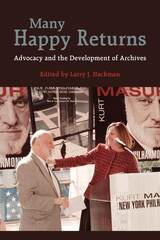 Many Happy Returns: Advocacy and the Development of Archives
Larry J. Hackman
Society of American Archivists, 2011 Twenty-three well-versed archivists and allied professionals teach you how to advocate effectively for your archives in Many Happy Returns: Advocacy and the Development of Archives.
Editor Larry Hackman's opening essay is a tutorial on advocacy principles and application, including practical techniques and tactics. Hackman asserts that "advocacy is an investment that we make when we intentionally and strategically educate and engage individuals and organizations so that they in turn will support our archival work."
Thirteen case studies address a variety of advocacy experiences and methods. For example, the New York Philharmonic archivist has spent more than 25 years building a strong and highly visible archives by finding and using allies within the Philharmonic's own internal family. One vital strategy has been to link the archives to the interests and needs of the symphony's very prominent music directors.
Other examples include major breakthroughs, such as passage of a $7 million bond issue for the Butte archives in Montana, and creation of a significant preservation endowment for the Oberlin College Archives in Ohio, as well as more typical incremental advances made over longer periods by matching an archives advocacy methods to the culture, structures, and processes of the parent organization.
A highly instructive chapter describes seven categories of advocacy lessons learned from the case studies and suggests areas that archivists should give higher priority, particularly in finding and using external advocates. The book concludes with essays on advocacy and archival education, the use of new technologies to build support for archives, and advocacy at the federal level.
This book ably demonstrates that archivists can (and should!) invest time in advocacy efforts to produce "many happy returns" for themselves and their archives. And now, so can you!
The Many Joans of Arc: Embodying Medievalism Worldwide
Ellie Crookes
Arc Humanities Press, 2025 This book centres on the phenomenon of the Joans of Arc—a global medievalist trend of women being celebrated as their nation’s own Joan. Though these women bear the name of a medieval French woman, use of the title is bound to diverse and shifting preoccupations, prejudices, and prerogatives of the post-medieval world. Joan’s legend has been moulded to fit a vast array of sometimes strange, often problematic agendas. The overarching aim of this book is to demystify the implications that arise when the ghost of Joan leaves the temporal and spatial bounds of medieval France to haunt post-medieval spaces and possess post-medieval personas.
 The Many Lives of a Jesuit, Freemason, and Philanthropist: The Story of Töhötöm Nagy
Éva Petrás
Central European University Press, 2024 The life of Töhötöm Nagy (1908–1979), Jesuit, Mason, and secret service agent, offers fascinating insights into interwar Hungary, the Catholic Church and Vatican diplomacy, Freemasonry, and the activities of communist state security service. As a young Jesuit Nagy was one of the leaders of a successful Catholic youth movement in interwar Hungary. After World War II he played an important role acting as an intermediary between the Vatican, the Red Army, and the Hungarian Catholic Church. After being sent to South America, he was attracted by liberation theology, but left the Society of Jesus, joined the Freemasons, and did social and philanthropic work in the slums of Buenos Aires. However, in the late 1960s he agreed to work for the Hungarian state security service in return for his repatriation. This latter period is reconstructed from the files of the Historical Archives of State Security in Budapest. Éva Petrás writes with empathy but with a sense of distance of the courage and restless energy of her subject. Her discussion of the limits of free choice and Nagy’s intense struggle to live a meaningful life make this biography breathtaking.
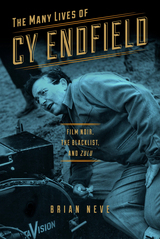 The Many Lives of Cy Endfield: Film Noir, the Blacklist, and Zulu
Brian Neve
University of Wisconsin Press, 2015 Cy Endfield (1914–1995) was a filmmaker who was also fascinated by the worlds of close-up magic, science, and invention. After directing several distinctive low-budget films in Hollywood, he was blacklisted in 1951 and fled to Britain rather than “name names” before HUAC, the U.S. House of Representatives’ Un-American Activities Committee. The Pennsylvania-born Endfield made films that exhibit an outsider’s eye for his adopted country, including the working-class “trucking” drama Hell Drivers and the cult film Zulu—a war epic as politically nuanced as it is spectacular. Along the way he encountered Orson Welles, collaborated with pioneering animator Ray Harryhausen, published a book of his card magic, and co-invented an early word processor that anticipated today’s technology.
The Many Lives of Cy Endfield is the first book on this fascinating figure. The fruit of years of archival research and personal interviews by Brian Neve, it documents Endfield’s many identities: among them second-generation immigrant, Jew, Communist, and exile. Neve paints detailed scenes not only of the political and personal dramas of the blacklist era, but also of the attempts by Hollywood directors in the postwar 1940s and early 1950s to address social and political controversies of the day. Out of these efforts came two crime melodramas (what would become known as film noir) on inequalities of class and race: The Underworld Story and The Sound of Fury (also known as Try and Get Me!). Neve reveals the complex production and reception histories of Endfield’s films, which the critic Jonathan Rosenbaum saw as reflective of “an uncommon intelligence so radically critical of the world we live in that it’s dangerous.”
The Many Lives of Cy Endfield is at once a revealing biography of an independent, protean figure, an insight into film industry struggles, and a sensitive and informed study of an underappreciated body of work.
Best Five Books of the Year list, Iranian 24 Monthly, London UK
“Make[s] a case for [Endfield’s] distinctive voice while tracing the way struggle, opposition, and thwarted ambition both defined his life and became the powerful themes of his best work.”—Cineaste
 The Many Lives of Eddie Rickenbacker
Andrew Speno
Ohio University Press, 2020 The life story of a daredevil who became a war hero will fascinate adventurous young readers with its tales of survival. At age thirteen, following the death of his father, young Eddie dropped out of school and joined the workforce. Through a combination of smarts, hard work, and perseverance, Rickenbacker would grow up to become an automobile mechanic, a race car driver, a fighter pilot, an entrepreneur, a war hero, a business executive, and a staunch advocate for hard work and personal responsibility. Along the way he lived on the line between recklessness and courage. He survived dozens of accidents, coming close to death more than once. During the earliest years of American automobile racing, Rickenbacker was “the most daring and withal the most cautious driver” on the circuit. How could he have been both daring and cautious? This book invites young readers to decide for themselves as they follow Rickenbacker on his many hair-raising adventures.
The Many Meanings of Mina: Popular Music Stardom in Post-War Italy
Rachel Haworth
Intellect Books, 2022 What the stardom of Mina says about contemporary Italian society.
Mina—or Anna Maria Mazzini—is an Italian popular music icon whose sixty-year career has come to represent a range of diverse meanings. She is one of the best-loved popular music stars in Italy and abroad, with a large fan base across Europe, Asia, and South America. Her career began in the late 1950s and reached its peak in the 1960s and 1970s. Despite having retired from public appearances in the late 1970s, Mina remains iconic to this day. Her star status is exemplary of how stardom is constructed and what it reveals about the society from which it springs. This book explores Mina’s star image and iconic status, tracing the process by which she has come to embody a revelation of the values and ideals of contemporary Italian society.
 Many Mirrors: Body Image and Social Relations
Edited by Nicole Sault
Rutgers University Press, 1994 “We've needed a book like Many Mirrors for a long time. In the veritable explosion of new scholarship on the human body, this book stands out in its focus on empirical research. Many Mirrors will move . . . the Anthropology of the Body a giant step forward.”--C. H. Browner, University of California at Los Angeles
In every society, people define and change their physical appearance in response to their relationships to others: we add clothes and masks, remove them, build up our muscles, perforate our flesh, cut parts away, comb our hair, and modify our diets. In rural Jamaica, fat women are considered desirable; in American suburbia, teenage girls are obsessed with thinness. Bedouin women use tattoos to express their secret longings; Asian American women undergo cosmetic surgery to conform to internalized western standards of beauty. Even with mirrors to see ourselves, we rely on the reactions of others to learn how we look and who we are.
Where contemporary Western culture sees the body as a concrete thing with an objective, observable reality, separate from the self, many other societies regard the person as an integrated whole that includes the mind, the body, and the spirit. Through the contributors' studies of individual cultures and through the editor’s unifying “body image system”, this volume gives us a new conceptual framework for understanding how women and men in any society perceive, describe, and alter their bodies.
 The Many Names of Anonymity: Portraitists of the Canton Trade
Winnie Wong
University of Chicago Press, 2025 Explores how the function, norms, and meaning of artists’ names in Chinese modernity have been misunderstood.
Challenging contemporary procedures for establishing attribution, chronology, and authenticity in Chinese art, Winnie Wong explores the means, methods, and stakes of recovering the names of an anonymous community of artists. To examine how Western art history has misconstrued and miscategorized names and identities in Chinese art, she looks to conflicting features of modernity: the European attachment of singular names to individuals and their works, and the Chinese use of socially contingent names that often are not attached to material labor and sometimes operate against it. Wong charts the genealogy of this naming problem by bringing to life the artists of the Qing Empire’s trade with Europeans at the port of Guangzhou, centering on a group of portraitists known by names that were recorded in a pidgin language: Chin Qua, Chit Qua, Spoilum, Lam Qua, and Ting Qua.
Many of these paintings survive today, yet scholars have identified only a handful of the painters’ identities. Pushing against Western norms that have shaped our understanding of authorship, Wong reveals that these artists shared names, created works in multiples, and signed their pieces with different names or none at all. This lavishly illustrated volume explores portraiture across media, including unfired clay, reverse painting on glass, watercolor on paper, oil on canvas, and the daguerreotype, to propose new ways of studying anonymity, copying, and the emergence of author names in the Sino-European visual culture of the long eighteenth century.
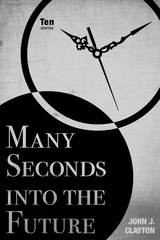 Many Seconds into the Future: Ten Stories
John J. Clayton
Texas Tech University Press, 2014 Moving stories of Jewish sensibility
The stories in John J. Clayton's newest collection are luminous, expressing a struggle to see growth and meaning in life as much as possible. Nearly all focus on family, and the characters, most of them Jewish, grapple with questions of living, dying, loving, and worshipping. Clayton has published several novels, including Mitzvah Man (TTUP, 2011), but he is best known for his critically-acclaimed short fiction, which has been included in O. Henry Prize Stories, Best American Short Stories, and Pushcart Prize anthologies. His collection Radiance was a finalist for the National Jewish Book Award.
The ten stories in Many Seconds into the Future were written after Clayton’s collected stories were published in Wrestling with Angels in 2007. Many of these new stories originally were published in Commentary and some in literary magazines. Some are appearing for the first time. They are masterful stories of spiritual questing, emotional depth, and often great humor.
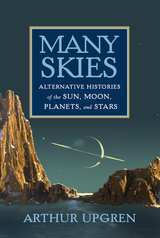 Many Skies: Alternative Histories of the Sun, Moon, Planets, and Stars
Upgren, Arthur
Rutgers University Press, 2012 What if Earth had several moons or massive rings like Saturn? What if the Sun were but one star in a double-star or triple-star system? What if Earth were the only planet circling the Sun?
These and other imaginative scenarios are the subject of Arthur Upgren's inventive book Many Skies: Alternative Histories of the Sun, Moon, Planets, and Stars. Although the night sky as we know it seems eternal and inevitable, Upgren reminds us that, just as easily, it could have been very different.
Had the solar sytem happened to be in the midst of a star cluster, we might have many more bright stars in the sky. Yet had it been located beyond the edge of the Milky Way galaxy, we might have no stars at all. If Venus or Mars had a moon as large as ours, we would be able to view it easily with the unaided eye. Given these or other alternative skies, what might Ptolemy or Copernicus have concluded about the center of the solar sytem and the Sun?
This book not only examines the changes in science that these alternative solar, stellar, and galactic arrangements would have brought, it also explores the different theologies, astrologies, and methods of tracking time that would have developed to reflect them. Our perception of our surroundings, the number of gods we worship, the symbols we use in art and literature, even the way we form nations and empires are all closely tied to our particular (and accidental) placement in the universe.
Many Skies, however, is not merely a fanciful play on what might have been. Upgren also explores the actual ways that human interferences such as light pollution are changing the night sky. Our atmosphere, he warns, will appear very different if we have belt of debris circling the globe and blotting out the stars, as will happen if advertisers one day pollute space with brilliant satellites displaying their products.
From fanciful to foreboding, the scenarios in Many Skies will both delight and inspire reflection, reminding us that ours is but one of many worldviews based on our experience of a universe that is as much a product of accident as it is of intention.
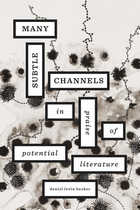 Many Subtle Channels: In Praise of Potential Literature
Daniel Levin Becker
Harvard University Press, 2012 What sort of society could bind together Jacques Roubaud, Italo Calvino, Marcel Duchamp, and Raymond Queneau—and Daniel Levin Becker, a young American obsessed with language play? Only the Oulipo, the Paris-based experimental collective founded in 1960 and fated to become one of literature’s quirkiest movements.
An international organization of writers, artists, and scientists who embrace formal and procedural constraints to achieve literature’s possibilities, the Oulipo (the French acronym stands for “workshop for potential literature”) is perhaps best known as the cradle of Georges Perec’s novel A Void, which does not contain the letter e. Drawn to the Oulipo’s mystique, Levin Becker secured a Fulbright grant to study the organization and traveled to Paris. He was eventually offered membership, becoming only the second American to be admitted to the group. From the perspective of a young initiate, the Oulipians and their projects are at once bizarre and utterly compelling. Levin Becker’s love for games, puzzles, and language play is infectious, calling to mind Elif Batuman’s delight in Russian literature in The Possessed.
In recent years, the Oulipo has inspired the creation of numerous other collectives: the OuMuPo (a collective of DJs), the OuMaPo (marionette players), the OuBaPo (comic strip artists), the OuFlarfPo (poets who generate poetry with the aid of search engines), and a menagerie of other Ou-X-Pos (workshops for potential something). Levin Becker discusses these and other intriguing developments in this history and personal appreciation of an iconic—and iconoclastic—group.
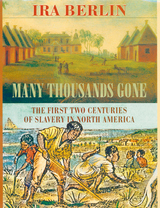 Many Thousands Gone: The First Two Centuries of Slavery in North America
Ira Berlin
Harvard University Press, 1998 Today most Americans, black and white, identify slavery with cotton, the deep South, and the African-American church. But at the beginning of the nineteenth century, after almost two hundred years of African-American life in mainland North America, few slaves grew cotton, lived in the deep South, or embraced Christianity. Many Thousands Gone traces the evolution of black society from the first arrivals in the early seventeenth century through the Revolution. In telling their story, Ira Berlin, a leading historian of southern and African-American life, reintegrates slaves into the history of the American working class and into the tapestry of our nation.
Laboring as field hands on tobacco and rice plantations, as skilled artisans in port cities, or soldiers along the frontier, generation after generation of African Americans struggled to create a world of their own in circumstances not of their own making. In a panoramic view that stretches from the North to the Chesapeake Bay and Carolina lowcountry to the Mississippi Valley, Many Thousands Gone reveals the diverse forms that slavery and freedom assumed before cotton was king. We witness the transformation that occurred as the first generations of creole slaves—who worked alongside their owners, free blacks, and indentured whites—gave way to the plantation generations, whose back-breaking labor was the sole engine of their society and whose physical and linguistic isolation sustained African traditions on American soil.
As the nature of the slaves’ labor changed with place and time, so did the relationship between slave and master, and between slave and society. In this fresh and vivid interpretation, Berlin demonstrates that the meaning of slavery and of race itself was continually renegotiated and redefined, as the nation lurched toward political and economic independence and grappled with the Enlightenment ideals that had inspired its birth.
Many Times, But Then
By Ann Lauterbach
University of Texas Press, 1979 A collection of poems by the award-winning poet.
The Many Tongues of Literacy
Ray B. Browne
University of Wisconsin Press, 1992 Statistics indicate that more than half the population of America is illiterate or subliterate in the conventional sense, but very literate in other media such as television, sports, and leisure time activities. But statistics can lie or tell only half a fact. Since the languages of literacy are constantly expanding and developing, it is time that American educators, and the public in general, reexamine their definitions of literacy and the media in which we need to be literate. Therefore, educators must redefine literacy if they are to be realistic about its sources, uses, and values. The need is vital to a developing world.
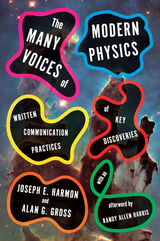 The Many Voices of Modern Physics: Written Communication Practices of Key Discoveries
Joseph E. Harmon
University of Pittsburgh Press, 2023 The Many Voices of Modern Physics follows a revolution that began in 1905 when Albert Einstein published papers on special relativity and quantum theory. Unlike Newtonian physics, this new physics often departs wildly from common sense, a radical divorce that presents a unique communicative challenge to physicists when writing for other physicists or for the general public, and to journalists and popular science writers as well. In their two long careers, Joseph Harmon and the late Alan Gross have explored how scientists communicate with each other and with the general public. Here, they focus not on the history of modern physics but on its communication. In their survey of physics communications and related persuasive practices, they move from peak to peak of scientific achievement, recalling how physicists use the communicative tools available—in particular, thought experiments, analogies, visuals, and equations—to convince others that what they say is not only true but significant, that it must be incorporated into the body of scientific and general knowledge. Each chapter includes a chorus of voices, from the many celebrated physicists who devoted considerable time and ingenuity to communicating their discoveries, to the science journalists who made those discoveries accessible to the public, and even to philosophers, sociologists, historians, an opera composer, and a patent lawyer. With their final collaboration, Harmon and Gross offer a tribute to the communicative practices of the physicists who convinced their peers and the general public that the universe is a far more bizarre and interesting place than their nineteenth-century predecessors imagined.
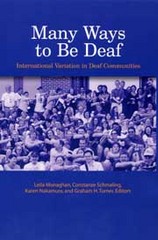 Many Ways to Be Deaf: International Variation in Deaf Communities
Leila Monaghan
Gallaudet University Press, 2003 The recent explosion of sociocultural, linguistic, and historical research on signed languages throughout the world has culminated in Many Ways to Be Deaf, an unmatched collection of in-depth articles about linguistic diversity in Deaf communities on five continents. Twenty-four international scholars have contributed their findings from studying Deaf communities in Japan, Thailand, Viet Nam, Taiwan, Russia, Sweden, Austria, Switzerland, Great Britain, Ireland, Nigeria, South Africa, Brazil, Nicaragua, and the United States. Sixteen chapters consider the various antecedents of each country’s native signed language, taking into account the historical background of their development and also the effects of foreign influences and changes in philosophies by the larger, dominant hearing societies. The remarkable range of topics covered in Many Ways to Be Deaf will fascinate readers, from the evolution of British fingerspelling traced back to the 17th century; the comparison of Swiss German Sign Language with Rhaeto-Romansch, another Swiss minority language; the analysis of seven signed languages described in Thailand and how they differ in relation to their distance from isolated Deaf communities to Bangkok and other urban centers; to the vaulting development of a nascent sign language in Nicaragua, and much more. The diversity of background and training among the contributors to Many Ways to Be Deaf distinguishes it as a genuine and unique multicultural examination of the myriad manifestations of being Deaf in a diverse world.
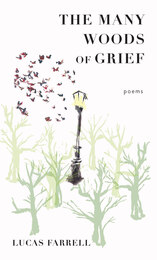 The Many Woods of Grief: Poems
Lucas Farrell
University of Massachusetts Press, 2011 In this striking debut volume, Lucas Farrell offers a lyrical and illuminating field guide to the flora and fauna of "worlds just out of reach." With the precision and detail of an Audubon sketch, he turns his naturalist's eye to the vast landscape of human emotion—all the while affirming "how real this world we live in / must be to live in."
Journeying ever outward, from the achingly ordinary to the mysterious "land where there is no land," the narrator of this collection, equal parts pastoralist and surrealist, explores the vivid in-betweens—between love and loss, hilarity and despair, wild and domestic, real and imagined. Hungry, expressive, and original, these poems glean light from even the darkest of fields.From "Further Along Now"Further along the curves of gesture, the delicateapostrophe, in the tongues of muted suns, we'll findourselves in a clearing, in a meadow of ancient grass,picking apart what has long been picked apart. Furtheralong, the compliments, the tweezers and logic, thelaboratory of hard hats and felt pens and hard headsand clipboards hanging from sky's bloody fender, birddroppings steaming calligraphic so long as the cloudsbecome clouds become clouds and amazed we see insuch preventable warfare our own substancesunchanging. Fountains of ash too diffuse to interpret,too complex to diagnose, I quote the many woods ofgrief, too far alone, too deep.
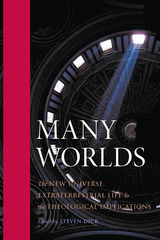 Many Worlds: New Universe Extraterrestrial Life
Steven Dick
Templeton Press, 2000
In Many Worlds, renowned scientists in fields from physics to astronomy discuss the possibility of a cosmic evolutionary process that guides not only our universe, but other planets and universes as well. Physicist and author Paul Davies observes that “if it turns out to be the case that the universe is inherently bio-friendly, then the scientific, theological, and philosophical implications will be extremely significant.”
Many Worlds first focuses on what lessons might be learned from the latest knowledge of the origin and evolution of life. After establishing a well-grounded relationship between science and religion, authors such as Arthur Peacocke and John Leslie evaluate the intricate configuration of events that must occur to create a dynamic and chemically enriched environment capable of not only supporting life, but evolutionary processes as well. The final section addresses the provocative question of extraterrestrial life. What we may find could drastically change our relation to the universe and our creator.
As we reflect on the possibilities that the universe presents, author and contributor Christian de Duve aptly states, “Many myths have had to be abandoned. But mystery remains, more profound and beautiful than ever before, a reality almost inaccessible to our feeble human means.” Is our existence part of a divine scheme ingenuously designed to support life, or is it an extraordinary chain of accidents that culminate in a life-permitting environment? The scientific advancements of the past century cannot help but capture the imagination and inspire renewed hope for the future. This volume will add dimension and insight to these yet unanswered questions.
Many-Core Computing: Hardware and software
Bashir M. Al-Hashimi
The Institution of Engineering and Technology, 2019 Computing has moved away from a focus on performance-centric serial computation, instead towards energy-efficient parallel computation. This provides continued performance increases without increasing clock frequencies, and overcomes the thermal and power limitations of the dark-silicon era. As the number of parallel cores increases, we transition into the many-core computing era. There is considerable interest in developing methods, tools, architectures and applications to support many-core computing.
Manyfaced Glass: Tennyson'S Dramatic Monologues
Linda K. Hughes
Ohio University Press, 1987 The hazy settings and amorphous auditors of Tennyson’s dramatic monologues are often contrasted—at Tennyson’s expense—with Browning’s more vivid, concrete realizations. Hughes argues that Tennyson’s achievements in the genre are, in fact, considerable, that his influence can be traced in such major figures as T. S. Eliot, and that the monologue occupies a far more central position in Tennyson’s poetic achievement than has hitherto been acknowledged. Hughes’ study challenges the traditional view of Tennyson’s inferior achievement, and her account of the elements and operation of the dramatic monologue, especially as demonstrated by three of its most important practitioners, will be of interest to all those concerned with the monologue as a poetic mode.
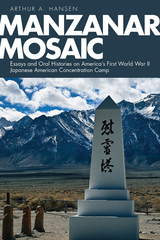 Manzanar Mosaic: Essays and Oral Histories on America's First World War II Japanese American Concentration Camp
Arthur A. Hansen
University Press of Colorado, 2023 Providing a new mosaic-style view of Manzanar’s complex history through unedited interviews and published scholarship, Arthur A. Hansen presents a deep, longitudinal portrait of the politics and social formation of the Japanese American community before, during, and after World War II.
To begin, Hansen presents two essays, the first centering on his work with Ronald Larson in the mid-1970s on the history of Doho, a Japanese and English dual-language newspaper, and the second an article with David Hacker on revisionist ethnic perspectives of the Manzanar “riot.” A second section is composed of five oral history interviews of selected camp personalities—a female Nisei journalist, a male Nisei historical documentarian, a male Kibei Communist block manager, the Caucasian wife and comrade of the block manager, and the male Kibei who was the central figure in the Manzanar Riot/Revolt—that offer powerful insight into the controversial content of the two essays that precede them.
Manzanar can be understood only by being considered within the much wider context of Japanese American community formation and contestation before, during, and after World War II. A varied collection of scholarly articles and interviews, Manzanar Mosaic engages diverse voices and considers multiple perspectives to illuminate aspects of the Japanese American community, the ethnic press, the Manzanar concentration camp, and the movement for redress and reparations.
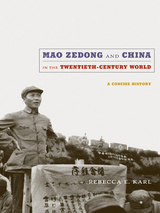 Mao Zedong and China in the Twentieth-Century World: A Concise History
Rebecca E. Karl
Duke University Press, 2010 Throughout this lively and concise historical account of Mao Zedong’s life and thought, Rebecca E. Karl places the revolutionary leader’s personal experiences, social visions and theory, military strategies, and developmental and foreign policies in a dynamic narrative of the Chinese revolution. She situates Mao and the revolution in a global setting informed by imperialism, decolonization, and third worldism, and discusses worldwide trends in politics, the economy, military power, and territorial sovereignty. Karl begins with Mao’s early life in a small village in Hunan province, documenting his relationships with his parents, passion for education, and political awakening during the fall of the Qing dynasty in late 1911. She traces his transition from liberal to Communist over the course of the next decade, his early critiques of the subjugation of women, and the gathering force of the May 4th movement for reform and radical change. Describing Mao’s rise to power, she delves into the dynamics of Communist organizing in an overwhelmingly agrarian society, and Mao’s confrontations with Chiang Kaishek and other nationalist conservatives. She also considers his marriages and romantic liaisons and their relation to Mao as the revolutionary founder of Communism in China. After analyzing Mao’s stormy tenure as chairman of the People’s Republic of China, Karl concludes by examining his legacy in China from his death in 1976 through the Beijing Olympics in 2008.
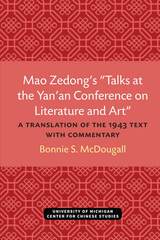 Mao Zedong’s “Talks at the Yan’an Conference on Literature and Art”: A Translation of the 1943 Text with Commentary
Bonnie S. McDougall
University of Michigan Press, 1980 The writings of Mao Zedong have been circulated throughout the world more widely, perhaps, than those of any other single person this century. The “Talks at the Yan’an Conference on Literature and Art” has occupied a prominent position among his many works and has been the subject of intense scrutiny both within and outside China. This text has undoubted importance to modern Chinese literature and history. In particular, it reveals Mao’s views on such questions as the relationship between writers or works of literature and their audience, or the nature and value of different kinds of literary products. In this translation and commentary, Bonnie S. McDougall finds that Mao was in fact ahead of many of his critics in the West and his Chinese contemporaries in his discussion of literary issues. Unlike the majority of modern Chinese writers deeply influenced by Western theories of literature and society (including Marxism), Mao remained close to traditional patterns of thought and avoided the often mechanical or narrowly literal interpretations that were the hallmark of Western schools current in China in the early twentieth century. Many of the detailed discussions on the “Talks” in the West have been concerned with their political and historical significance. However, since Mao is a literary figure of some importance in twentieth-century China, McDougall finds it worthwhile to follow up his published remarks on the nature and source of literature and the means of its evaluation. By better understanding the complex and revolutionary ideas contained in the “Talks,” McDougall suggests we may acquire the necessary analytical tools for a more fruitful investigation into contemporary Chinese literature.
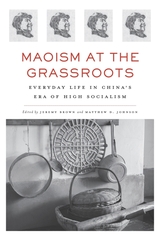 Maoism at the Grassroots: Everyday Life in China’s Era of High Socialism
Jeremy Brown
Harvard University Press, 2015 The Maoist state’s dominance over Chinese society, achieved through such watersheds as the Great Leap Forward and the Cultural Revolution, is well known. Maoism at the Grassroots reexamines this period of transformation and upheaval from a new perspective, one that challenges the standard state-centered view. Bringing together scholars from China, Europe, North America, and Taiwan, this volume marshals new research to reveal a stunning diversity of individual viewpoints and local experiences during China’s years of high socialism.
Focusing on the period from the mid-1950s to 1980, the authors provide insights into the everyday lives of citizens across social strata, ethnicities, and regions. They explore how ordinary men and women risked persecution and imprisonment in order to assert personal beliefs and identities. Many displayed a shrewd knack for negotiating the maze-like power structures of everyday Maoism, appropriating regime ideology in their daily lives while finding ways to express discontent and challenge the state’s pervasive control.
Heterogeneity, limited pluralism, and tensions between official and popular culture were persistent features of Maoism at the grassroots. Men had gay relationships in factory dormitories, teenagers penned searing complaints in diaries, mentally ill individuals cursed Mao, farmers formed secret societies and worshipped forbidden spirits. These diverse undercurrents were as representative of ordinary people’s lives as the ideals promulgated in state propaganda.
 Mao's Army Goes to Sea: The Island Campaigns and the Founding of China's Navy
Toshi Yoshihara
Georgetown University Press, 2022 New details about the founding of China’s Navy reveals critical historical context and insight into future strategy From 1949 to 1950, the People’s Liberation Army (PLA) made crucial decisions to establish a navy and secure China’s periphery. The civil war had been fought with a peasant army, yet in order to capture key offshore islands from the Nationalist rival, Mao Zedong needed to develop maritime capabilities. Mao’s Army Goes to Sea is a ground-breaking history of the founding of the Chinese navy and Communist China’s earliest island-seizing campaigns. In this definitive account of a little-known yet critical moment in China’s naval history, Toshi Yoshihara shows that Chinese leaders refashioned the stratagems and tactics honed over decades of revolutionary struggle on land for nautical purposes. Despite significant challenges, the PLA ultimately scored important victories over its Nationalist foes as it captured offshore islands to secure its position. Drawing extensively from newly available Chinese-language sources, this book reveals how the navy-building process, sea battles, and contested offshore landings had a lasting influence on the PLA. Even today, the institution’s identity, strategy, doctrine, and structure are conditioned by these early experiences and myths. Mao’s Army Goes to Sea will help US policymakers and scholars place China’s recent maritime achievements in proper historical context—and provide insight into how its navy may act in the future.
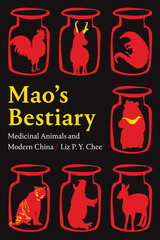 Mao's Bestiary: Medicinal Animals and Modern China
Liz P. Y. Chee
Duke University Press, 2021 Controversy over the medicinal uses of wild animals in China has erupted around the ethics and efficacy of animal-based drugs, the devastating effect of animal farming on wildlife conservation, and the propensity of these practices to foster zoonotic diseases. In Mao's Bestiary, Liz P. Y. Chee traces the history of the use of medicinal animals in modern China. While animal parts and tissue have been used in Chinese medicine for centuries, Chee demonstrates that the early Communist state expanded and systematized their production and use to compensate for drug shortages, generate foreign investment in high-end animal medicines, and facilitate an ideological shift toward legitimating folk medicines. Among other topics, Chee investigates the craze for chicken blood therapy during the Cultural Revolution, the origins of deer antler farming under Mao and bear bile farming under Deng, and the crucial influence of the Soviet Union and North Korea on Chinese zootherapies. In the process, Chee shows Chinese medicine to be a realm of change rather than a timeless tradition, a hopeful conclusion given current efforts to reform its use of animals.
 Mao’s Invisible Hand: The Political Foundations of Adaptive Governance in China
Sebastian Heilmann
Harvard University Press, 2011 Observers have been predicting the demise of China’s political system since Mao Zedong’s death over thirty years ago. The Chinese Communist state, however, seems to have become increasingly adept at responding to challenges ranging from leadership succession and popular unrest to administrative reorganization, legal institutionalization, and global economic integration. What political techniques and procedures have Chinese policymakers employed to manage the unsettling impact of the fastest sustained economic expansion in world history?
As the authors of these essays demonstrate, China’s political system allows for more diverse and flexible input than would be predicted from its formal structures. Many contemporary methods of governance have their roots in techniques of policy generation and implementation dating to the revolution and early PRC—techniques that emphasize continual experimentation. China’s long revolution had given rise to this guerrilla-style decisionmaking as a way of dealing creatively with pervasive uncertainty. Thus, even in a post-revolutionary PRC, the invisible hand of Chairman Mao—tamed, tweaked, and transformed—plays an important role in China’s adaptive governance.
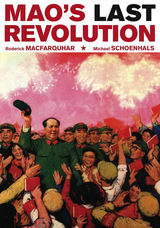 Mao’s Last Revolution
Roderick MacFarquhar and Michael Schoenhals
Harvard University Press, 2006 The Cultural Revolution was a watershed event in the history of the People’s Republic of China, the defining decade of half a century of communist rule. Before 1966, China was a typical communist state, with a command economy and a powerful party able to keep the population under control. But during the Cultural Revolution, in a move unprecedented in any communist country, Mao unleashed the Red Guards against the party. Tens of thousands of officials were humiliated, tortured, and even killed. Order had to be restored by the military, whose methods were often equally brutal.
In a masterly book, Roderick MacFarquhar and Michael Schoenhals explain why Mao launched the Cultural Revolution, and show his Machiavellian role in masterminding it (which Chinese publications conceal). In often horrifying detail, they document the Hobbesian state that ensued. The movement veered out of control and terror paralyzed the country. Power struggles raged among Lin Biao, Zhou Enlai, Deng Xiaoping, and Jiang Qing—Mao’s wife and leader of the Gang of Four—while Mao often played one against the other.
After Mao’s death, in reaction to the killing and the chaos, Deng Xiaoping led China into a reform era in which capitalism flourishes and the party has lost its former authority. In its invaluable critical analysis of Chairman Mao and its brilliant portrait of a culture in turmoil, Mao’s Last Revolution offers the most authoritative and compelling account to date of this seminal event in the history of China.
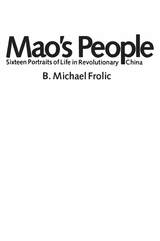 Mao’s People: Sixteen Portraits of Life in Revolutionary China
B. M. Frolic
Harvard University Press, 1980 "How do we apply Chairman Mao's Thought to get fat pigs?" Squad Leader Ho (who knew the most about pigs) replied that, according to Chairman Mao, one must investigate the problem fully from all sides, and then integrate practice and theory. Ho concluded that the reason for our skinny pigs had to be found in one of three areas: the relationship between the pigs and their natural environment (excluding man); the relationship between the cadres and the pigs; and the relationship among the pigs themselves.
And so the city slickers, sent down to the countryside for political reeducation, set out to find the Thousand-Dollar Pig, much to the bemusement of the local peasants.
The sixteen stories collected in this remarkable book give firsthand accounts of daily life in contemporary China. From 250 interviews conducted in Hong Kong between 1972 and 1976, Mr. Frolic has created charming vignettes that show how individuals from all parts of China led their lives in the midst of rapid social change and political unrest. We hear about oil prospectors, rubber growers, and factory workers, Widow Wang and her sit-in to get a larger apartment, the thoroughly corrupt Man Who Loved Dog Meat, the young people who flew kites to protest antidemocratic tendencies.
As fresh and original as the individual accounts are, common and timeless themes emerge: the sluggishness of an agrarian society in responding to modernization; the painful lack of resources in a poor and gigantic country; the constraints imposed on common people by the bureaucracy; the way in which individuals outwardly support the system and inwardly resist it; the limitations of heavy and conflicting doses of ideology in motivating individuals.
But there are also recurrent motifs of economic and social progress: production rises, illiteracy declines, and socialist values have impact. A new China has emerged, though change is occurring far more slowly than its leaders had intended.
Mao's People contains much new information on China both for the general reader and for specialists in the field. Above all, it is a completely engrossing and vivid glimpse into the ways of a nation we are only beginning to discover.
Map is not Territory: Studies in the History of Religions
Jonathan Z. Smith
University of Chicago Press, 1992 In Map Is Not Territory, Jonathan Z. Smith engages previous interpretations of religious texts from late antiquity, critically evaluates the notion of sacred space and time as it is represented in the works of Mircea Eliade, and tackles important problems of methodology.
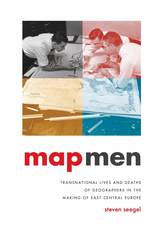 Map Men: Transnational Lives and Deaths of Geographers in the Making of East Central Europe
Steven Seegel
University of Chicago Press, 2018 More than just colorful clickbait or pragmatic city grids, maps are often deeply emotional tales: of political projects gone wrong, budding relationships that failed, and countries that vanished. In Map Men, Steven Seegel takes us through some of these historical dramas with a detailed look at the maps that made and unmade the world of East Central Europe through a long continuum of world war and revolution. As a collective biography of five prominent geographers between 1870 and 1950—Albrecht Penck, Eugeniusz Romer, Stepan Rudnyts’kyi, Isaiah Bowman, and Count Pál Teleki—Map Men reexamines the deep emotions, textures of friendship, and multigenerational sagas behind these influential maps.
Taking us deep into cartographical archives, Seegel re-creates the public and private worlds of these five mapmakers, who interacted with and influenced one another even as they played key roles in defining and redefining borders, territories, nations—and, ultimately, the interconnection of the world through two world wars. Throughout, he examines the transnational nature of these processes and addresses weighty questions about the causes and consequences of the world wars, the rise of Nazism and Stalinism, and the reasons East Central Europe became the fault line of these world-changing developments.
At a time when East Central Europe has surged back into geopolitical consciousness, Map Men offers a timely and important look at the historical origins of how the region was defined—and the key people who helped define it.
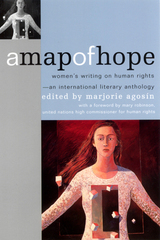 A Map of Hope: Women's Writing on Human Rights—An International Literary Anthology
Agosín, Marjorie
Rutgers University Press, 1999 The first international anthology to explore women’s human rights from a literary perspective. More than half a century after the United Nations Declaration of Human Rights, women throughout the world still struggle for social and political justice. Many fight back with the only tools of resistance they possess—words. A Map of Hope presents a collection of 77 extraordinary literary works documenting the ways women writers have spoken out about human rights issues. Writers young and old, known and unknown, explore the dimensions of terror, the unspeakable atrocities of war, and the possibilities of resistance and refusal against all odds. Their poems, essays, memoirs, and brief histories examine issues that affect the condition of women in war, prison camps, exile, and as victims of domestic and political violence. A Map of Hope presents diverse women writers who have created a literature of global consciousness and justice. Their works give a face, an image, and a human dimension to the dehumanization of human rights violations. The collection allows readers to hear voices that have decided to make a difference. It goes beyond geography and ethnic groups; writers from around the globe are united by the universal dimensions of horror and deprivation, as well as the unique common struggle for justice and solidarity.
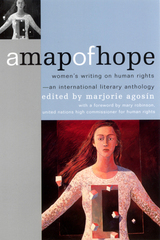 A Map of Hope: Women's Writing on Human Rights—An International Literary Anthology
Agosín, Marjorie
Rutgers University Press, 1999 The first international anthology to explore women’s human rights from a literary perspective. More than half a century after the United Nations Declaration of Human Rights, women throughout the world still struggle for social and political justice. Many fight back with the only tools of resistance they possess—words. A Map of Hope presents a collection of 77 extraordinary literary works documenting the ways women writers have spoken out about human rights issues. Writers young and old, known and unknown, explore the dimensions of terror, the unspeakable atrocities of war, and the possibilities of resistance and refusal against all odds. Their poems, essays, memoirs, and brief histories examine issues that affect the condition of women in war, prison camps, exile, and as victims of domestic and political violence. A Map of Hope presents diverse women writers who have created a literature of global consciousness and justice. Their works give a face, an image, and a human dimension to the dehumanization of human rights violations. The collection allows readers to hear voices that have decided to make a difference. It goes beyond geography and ethnic groups; writers from around the globe are united by the universal dimensions of horror and deprivation, as well as the unique common struggle for justice and solidarity.
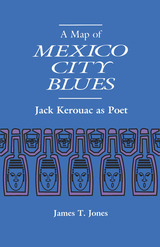 A Map of Mexico City Blues: Jack Kerouac as Poet
James T. Jones
Southern Illinois University Press, 1992 In this pioneering critical study of Jack Kerouac’s book-length poem, Mexico City Blues—apoetic parallel to the writer’s fictional saga, the Duluoz Legend—James T. Jones uses a rich and flexible neoformalist approach to argue his case for the importance of Kerouac’s rarely studied poem.
After a brief summary of Kerouac’s poetic career, Jones embarks on a thorough reading of Mexico City Blues from several different perspectives: he first focuses on Kerouac’s use of autobiography in the poem and then discusses how Kerouac’s various trips to Mexico, his conversion to Buddhism, his theory of spontaneous poetics, and his attraction to blues and jazz influenced the theme, structure, and sound of Mexico City Blues.
Jones’s multidimensional explication suggests the formal and thematic complexity of Kerouac’s long poem and demonstrates the major contribution Mexico City Blues makes to post–World War II American poetry and poetics.
A Map of Signs and Scents: New and Selected Poems, 1979–2014
Amjad Nasser / Translated from the Arabic by Fady Joudah and Khaled Mattawa
Northwestern University Press, 2016 Featuring poems from earlier collections of Amjad Nasser’s work and many newer uncollected poems never made available in English, A Map of Signs and Scents introduces the work of an important Arabic poet to a broader contemporary Anglophone readership. This special annotation edition helps readers view the multifaceted contexts within which Nasser has created his award-winning poems.
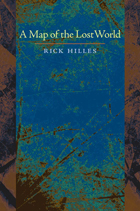 A Map of the Lost World
Rick Hilles
University of Pittsburgh Press, 2012
The poems that make up A Map of the Lost World range from tightly-wrought shorter lyrics to longer autobiographical narratives to patterns of homage (in several forms) of poets that Hilles admires and emulates (including Richard Hugo, James Wright, James Merrill and Larry Levis) to extended voice-driven meditations, one in the voice of a German Jewish woman, a prisoner who would escape a French concentration camp and go on to fight in the French resistance, to other efforts to confront history and not be devoured by history, and to locate, even resuscitate, friends lost to death, if only provisionally; though each poem in A Map of the Lost World is highly crafted and diversely rendered, in this collection, each poem finds its unifying impulse in it’s maker’s desire to span vast distances to reach loved ones, beloved others, the various families of friends, fueled by an almost gymnastic imagination that vaults itself into almost any space—going to almost any length—sustained by the various forms of love, which, after all, may be as close as any of us has come (in this or any life) to knowing and warming ourselves, if not also at times being scalded by, the immortal fires of the Infinite.
A Map of the Night
David Wagoner
University of Illinois Press, 2008 David Wagoner’s wide-ranging poetry buzzes and swells with life. Woods, streams, and fields fascinate him--he happily admits his devotion to Thoreau--but so do people and their habits, dear friends and family, the odd poet, and strangers who become even stranger when looked at closely. In this new collection, Wagoner catches the mixed feelings of a long drive, the sensations of walking against a current, the difficulty of writing poetry with noisily amorous neighbors, and many more uniquely familiar experiences.
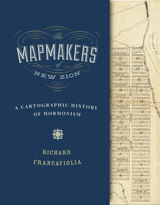 The Mapmakers of New Zion: A Cartographic History of Mormonism
Richard Francaviglia
University of Utah Press, 2015 From their earliest days on the American frontier through their growth into a worldwide church, the spatially expansive Mormons made maps to help them create idealized communities, migrate to and colonize large parts of the American West, visualize the stories in their sacred texts, and spread their message internationally through a well-organized missionary system. This book identifies many Mormon mapmakers who played an important but heretofore unsung role in charting the course of Latter-day Saint history. For Mormons, maps had and continue to have both practical and spiritual significance. In addition to using maps to help build their new Zion and to explore the Intermountain West, Latter-day Saint mapmakers used them to depict locations and events described in the Book of Mormon. Featuring over one hundred historical maps reproduced in full color—many never before published—The Mapmakers of New Zion sheds new light on Mormonism and takes readers on a fascinating journey through maps as both historical documents and touchstones of faith.
Winner of the Southwest Book Design and Production Award from the New Mexico Book Association.
Selected as one of the American Library Association's Best of the Best from University Presses.
 Mapmatics: A Mathematician's Guide to Navigating the World
Paulina Rowińska
Harvard University Press, 2024 “I love maps. I love math. And gosh, do I love this book, which so beautifully and clearly sounds the depths of both.” —Ben Orlin, author of Math with Bad Drawings
Explore the surprising connections between math and maps—and the myriad ways they’ve shaped our world and us.
Why are coastlines and borders so difficult to measure? How does a UPS driver deliver hundreds of packages in a single day? And where do elusive serial killers hide? The answers lie in the crucial connection between maps and math.
In Mapmatics, mathematician Paulina Rowińska leads us on a riveting journey around the globe to discover how maps and math are deeply entwined, and always have been. From a sixteenth-century map, an indispensable navigation tool that exaggerates the size of northern countries, to public transport maps that both guide and confound passengers, to congressional maps that can empower or silence whole communities, she reveals how maps and math have shaped not only our sense of space but our worldview. In her hands, we learn how to read maps like a mathematician—to extract richer information and, just as importantly, to question our conclusions by asking what we don’t see.
Written with authority and compassion, wit and unforgettable storytelling, this is math exposition at its best. By unpacking the math behind the maps we depend on, Mapmatics illuminates how our world works and, ultimately, how we can better look after it.
 Mapmatics: A Mathematician's Guide to Navigating the World
Paulina Rowińska
Harvard University Press An “original” (Nature) and “expansive journey through time and place” (Guardian) that uncovers the surprising connections between math and maps—and the myriad ways they’ve shaped our world and us.
Why are coastlines and borders so difficult to measure? How does a UPS driver deliver hundreds of packages in a single day? Where do elusive serial killers hide? The answers lie in the crucial connection between maps and math.
In Mapmatics, mathematician Paulina Rowińska leads us on a riveting journey around the globe to discover how maps and math are deeply entwined and always have been. From a sixteenth-century navigation tool that exaggerates the size of northern countries to public-transport maps that both guide and confound passengers, Rowińska reveals how maps and math have shaped not only our sense of space but also our worldview. Written with authority and compassion, wit and unforgettable storytelling, Mapmatics unpacks the math behind the maps we depend on, illuminating how our world works and how we can better look after it.
Mappae Mundi: Humans and their Habitats in a Long-Term Socio-Ecological Perspective: Myths, Maps and Models
Edited by Joop Goudsblom and Bert de Vries
Amsterdam University Press, 2003 The interaction between humans and their natural environment today is unprecedented in its scope and complexity, and recent scholarly research attests to the need for a multidisciplinary approach to fully study it. Mappae Mundi answers this call for a scholarly synthesis, illuminating dominant social trends affecting the relationship between human societies and the environment.
Contributors discuss this relationship, and analyze several different possibilities for the future. Mappae Mundi will appeal to social scientists or anyone interested in the current and future consequences of our interaction with the natural environment.
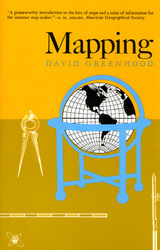 Mapping
David Greenhood
University of Chicago Press, 1964 "A praiseworthy introduction to the lore of maps and a mine of information for the amateur map-maker."—O.M. Miller, American Geographical Society
"This book should be welcomed by all students of mapping, for it will take them in uncomplicated stages through the complexities of compiling a map. . . . Mr. Greenwood is to be congratulated on an excellent book."—C.J. Angus, Canadian Geographical Journal
"For the baggy and middle-aged who cannot afford skiing in Austria or sailing off Bimini, Greenhood invites his readers to a sort of intellectual excitement which neither skiing nor sailing could equal. . . . Unless you work professionally with maps to the degree that a navigator does, for instance, this book will fascinate and enthrall you."—Monroe Bush, American Forests
"A teacher who wishes to go into the classroom with a storehouse of knowledge and ideas will find this a remarkable book. It is easy to read, and each page contains information which can be fed into the work in progress no matter which area of the world is being studied."—Instructor
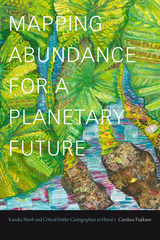 Mapping Abundance for a Planetary Future: Kanaka Maoli and Critical Settler Cartographies in Hawai'i
Candace Fujikane
Duke University Press, 2021 In Mapping Abundance for a Planetary Future, Candace Fujikane contends that the practice of mapping abundance is a radical act in the face of settler capital's fear of an abundance that feeds. Cartographies of capital enable the seizure of abundant lands by enclosing "wastelands" claimed to be underdeveloped. By contrast, Kanaka Maoli (Native Hawaiian) cartographies map the continuities of abundant worlds. Vital to restoration movements is the art of kilo, intergenerational observation of elemental forms encoded in storied histories, chants, and songs. As a participant in these movements, Fujikane maps the ecological lessons of these elemental forms: reptilian deities who protect the waterways, sharks who swim into the mountains, the navigator Māui who fishes up the islands, the deities of snow and mists on Mauna Kea. The laws of these elements are now being violated by toxic waste dumping, leaking military jet fuel tanks, and astronomical-industrial complexes. As Kānaka Maoli and their allies stand as land and water protectors, Fujikane calls for a profound attunement to the elemental forms in order to transform climate events into renewed possibilities for planetary abundance.
Mapping American Culture
Wayne Franklin
University of Iowa Press, 1995 What connections can be drawn between oral history and the shopping mall? Gospel music and the Diablo Canyon nuclear power plant? William Carlos Williams's Patterson and the Manhattan Project's secret cities? The answers lie in this insightful collection of essays that read and illuminate the American landscape. Through literature and folklore, music and oral history, autobiography, architecture, and photography, eleven leading writers and thinkers explore the dialectic between space and place in modern American life. The result is an eloquent and provocative reminder of the environmental context of events—the deceptively simple fact that events “take place.”
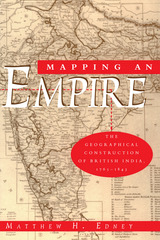 Mapping an Empire: The Geographical Construction of British India, 1765-1843
Matthew H. Edney
University of Chicago Press, 1997 In this fascinating history of the British surveys of India, Matthew H. Edney relates how imperial Britain used modern survey techniques to not only create and define the spatial image of its Empire, but also to legitimate its colonialist activities.
"There is much to be praised in this book. It is an excellent history of how India came to be painted red in the nineteenth century. But more importantly, Mapping an Empire sets a new standard for books that examine a fundamental problem in the history of European imperialism."—D. Graham Burnett, Times Literary Supplement
"Mapping an Empire is undoubtedly a major contribution to the rapidly growing literature on science and empire, and a work which deserves to stimulate a great deal of fresh thinking and informed research."—David Arnold, Journal of Imperial and Commonwealth History
"This case study offers broadly applicable insights into the relationship between ideology, technology and politics. . . . Carefully read, this is a tale of irony about wishful thinking and the limits of knowledge."—Publishers Weekly
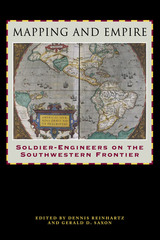 Mapping and Empire: Soldier-Engineers on the Southwestern Frontier
Edited by Dennis Reinhartz and Gerald D. Saxon
University of Texas Press, 2005 From the sixteenth through the mid-nineteenth centuries, Spain, then Mexico, and finally the United States took ownership of the land from the Gulf Coast of Texas and Mexico to the Pacific Coast of Alta and Baja California—today's American Southwest. Each country faced the challenge of holding on to territory that was poorly known and sparsely settled, and each responded by sending out military mapping expeditions to set boundaries and chart topographical features. All three countries recognized that turning terra incognita into clearly delineated political units was a key step in empire building, as vital to their national interest as the activities of the missionaries, civilian officials, settlers, and adventurers who followed in the footsteps of the soldier-engineers. With essays by eight leading historians, this book offers the most current and comprehensive overview of the processes by which Spanish, Mexican, and U.S. soldier-engineers mapped the southwestern frontier, as well as the local and even geopolitical consequences of their mapping. Three essays focus on Spanish efforts to map the Gulf and Pacific Coasts, to chart the inland Southwest, and to define and defend its boundaries against English, French, Russian, and American incursions. Subsequent essays investigate the role that mapping played both in Mexico's attempts to maintain control of its northern territory and in the United States' push to expand its political boundary to the Pacific Ocean. The concluding essay draws connections between mapping in the Southwest and the geopolitical history of the Americas and Europe.
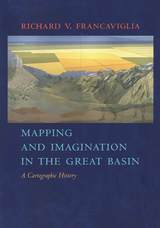 Mapping And Imagination In The Great Basin: A Cartographic History
Richard V. Francaviglia
University of Nevada Press, 2005 The Great Basin was the last region of continental North America to be explored and mapped, and it remained largely a mystery to Euro-Americans until well into the nineteenth century. In Mapping and Imagination in the Great Basin, geographer-historian Richard Francaviglia shows how the Great Basin gradually emerged from its “cartographic silence” as terra incognita and how this fascinating process both paralleled the development of the sciences of surveying, geology, hydrology, and cartography and reflected the changing geopolitical aspirations of the European colonial powers and the United States. Francaviglia’s interdisciplinary account of the mapping of the Great Basin combines a chronicle of the exploration of the region with a history of the art and science of cartography and of the political, economic, and cultural contexts in which maps are created. It also offers a compelling, wide-ranging discussion that combines a description of the daunting physical realities of the Great Basin with a cogent examination of the ways humans, from early Native Americans to nineteenth-century surveyors to twentieth-century highway and air travelers, have understood, defined, and organized this space, psychologically and through the medium of maps. Mapping and Imagination in the Great Basin continues Francaviglia’s insightful, richly nuanced meditation on the Great Basin landscape that began in Believing in Place.
 Mapping AsiaTown Cleveland: Race and Redevelopment in the Rust Belt
Rebecca Jo Kinney
Temple University Press, 2025 Cleveland, Ohio is not a location that most people associate with Asian American placemaking. However, on Cleveland’s East Side, multigenerational and panethnic Asian American residents and business owners are building community in the AsiaTown neighborhood. Mapping AsiaTown Cleveland foregrounds the importance of region in racial formation and redevelopment as it traces the history of racial segregation and neighborhood diversity.
Mapping AsiaTown Cleveland challenges ideas about the invisibility of Asian Americans in the urban Midwest by linking the contemporary development of Cleveland’s “AsiaTown” to the multiple and fragmented histories of Cleveland’s Asian American communities from the 1940s to present day. Kinney’s sharp insights illustrate how region matters for Japanese Americans who resettled from concentration camps and Chinese Americans food purveyors, as well as the ways in which Asian American community leaders have had to fight for visibility and representation in city planning—even as the Cleveland Asian Festival is branded as a marquee “diversity” event for the city.
Mapping AsiaTown Cleveland recognizes the vibrant Asian American community formations and belonging that have developed in seemingly unexpected spaces and places.
In the series Asian American History and Culture
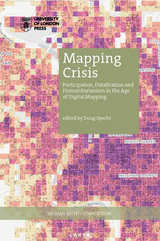 Mapping Crisis: Participation, Datafication and Humanitarianism in the Age of Digital Mapping
Edited by Doug Specht
University of London Press, 2020 The digital age throws questions of representation, participation, and humanitarianism back to the fore, as machine learning, algorithms, and big data centers take over the process of mapping the subjugated and subaltern. Mapping Crisis questions whether it is the map itself that is in crisis. This book brings together critical perspectives on the role that mapping people, knowledges, and data now plays in humanitarian work, both in cartographic terms and through data visualizations. Since the rise of Google Earth in 2005, there has been an explosion in the use of mapping tools to quantify and assess the needs of the poor, including those affected by climate change and the wider neo-liberal agenda. Yet, while there has been a huge upsurge in the data produced around these issues, the representation of people remains questionable. Some have argued that representation has diminished as people are increasingly reduced to data points. In turn, this data has become ever more difficult to analyze without vast computing power, leading to a dependency on the old colonial powers to refine the data of the poor, before selling it back to them.
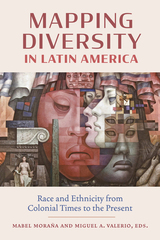 Mapping Diversity in Latin America: Race and Ethnicity from Colonial Times to the Present
Edited by Mabel Moraña and Miguel A. Valerio
Vanderbilt University Press, 2025 Mapping Diversity in Latin America offers ample critical coverage of recent approaches to the historical study of race and ethnicity in Latin America since the arrival of Spanish and Portuguese colonizers to the present. Bringing together the work of leading scholars, this volume presents readers with a thorough and updated examination of the formation and evolution of ideas surrounding race and ethnicity, social movements, and political processes in Latin America that provides multiple routes for future research on the topic. The book’s nineteen chapters establish the basis for a productive comparative analysis of racial developments in the whole continent to allow for a combination of diachronic and synchronic study of regional processes. Both the scope of the book and the historical and geocultural coverage on these topics are unique in the field of Latin American Studies.
Taking an interdisciplinary approach to understanding issues of collective identity, otherness, alterity, and the like, Mapping Diversity in Latin America sheds light on histories that have been traditionally overlooked in texts on race in Latin America, such as the rich history of diasporic Asian, Syrian Lebanese, and Jewish communities, and the more recent emergence of Latinx populations in the United States. The book includes a critical examination of fundamental concepts such as mestizaje, mulataje, creolization, negritud, and blanquitud, as well as critical and theoretical approaches to the study of these issues in postcolonial societies.
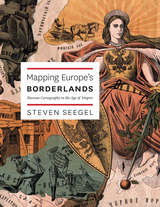 Mapping Europe's Borderlands: Russian Cartography in the Age of Empire
Steven Seegel
University of Chicago Press, 2012 The simplest purpose of a map is a rational one: to educate, to solve a problem, to point someone in the right direction. Maps shape and communicate information, for the sake of improved orientation. But maps exist for states as well as individuals, and they need to be interpreted as expressions of power and knowledge, as Steven Seegel makes clear in his impressive and important new book. Mapping Europe’s Borderlands takes the familiar problems of state and nation building in eastern Europe and presents them through an entirely new prism, that of cartography and cartographers. Drawing from sources in eleven languages, including military, historical-pedagogical, and ethnographic maps, as well as geographic texts and related cartographic literature, Seegel explores the role of maps and mapmakers in the East Central European borderlands from the Enlightenment to the Treaty of Versailles. For example, Seegel explains how Russia used cartography in the aftermath of the Napoleonic Wars and, later, formed its geography society as a cover for gathering intelligence. He also explains the importance of maps to the formation of identities and institutions in Poland, Ukraine, and Lithuania, as well as in Russia. Seegel concludes with a consideration of the impact of cartographers’ regional and socioeconomic backgrounds, educations, families, career options, and available language choices.
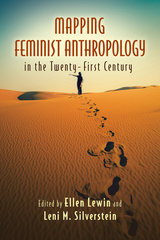 Mapping Feminist Anthropology in the Twenty-First Century
Lewin, Ellen
Rutgers University Press, 2016 Feminist anthropology emerged in the 1970s as a much-needed corrective to the discipline’s androcentric biases. Far from being a marginalized subfield, it has been at the forefront of developments that have revolutionized not only anthropology, but also a host of other disciplines. This landmark collection of essays provides a contemporary overview of feminist anthropology’s historical and theoretical origins, the transformations it has undergone, and the vital contributions it continues to make to cutting-edge scholarship. Mapping Feminist Anthropology in the Twenty-First Century brings together a variety of contributors, giving a voice to both younger researchers and pioneering scholars who offer insider perspectives on the field’s foundational moments. Some chapters reveal how the rise of feminist anthropology shaped—and was shaped by—the emergence of fields like women’s studies, black and Latina studies, and LGBTQ studies. Others consider how feminist anthropologists are helping to frame the direction of developing disciplines like masculinity studies, affect theory, and science and technology studies. Spanning the globe—from India to Canada, from Vietnam to Peru—Mapping Feminist Anthropology in the Twenty-First Century reveals the important role that feminist anthropologists have played in worldwide campaigns against human rights abuses, domestic violence, and environmental degradation. It also celebrates the work they have done closer to home, helping to explode the developed world’s preconceptions about sex, gender, and sexuality.
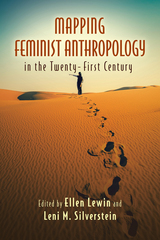 Mapping Feminist Anthropology in the Twenty-First Century
Lewin, Ellen
Rutgers University Press, 2016 Feminist anthropology emerged in the 1970s as a much-needed corrective to the discipline’s androcentric biases. Far from being a marginalized subfield, it has been at the forefront of developments that have revolutionized not only anthropology, but also a host of other disciplines. This landmark collection of essays provides a contemporary overview of feminist anthropology’s historical and theoretical origins, the transformations it has undergone, and the vital contributions it continues to make to cutting-edge scholarship. Mapping Feminist Anthropology in the Twenty-First Century brings together a variety of contributors, giving a voice to both younger researchers and pioneering scholars who offer insider perspectives on the field’s foundational moments. Some chapters reveal how the rise of feminist anthropology shaped—and was shaped by—the emergence of fields like women’s studies, black and Latina studies, and LGBTQ studies. Others consider how feminist anthropologists are helping to frame the direction of developing disciplines like masculinity studies, affect theory, and science and technology studies. Spanning the globe—from India to Canada, from Vietnam to Peru—Mapping Feminist Anthropology in the Twenty-First Century reveals the important role that feminist anthropologists have played in worldwide campaigns against human rights abuses, domestic violence, and environmental degradation. It also celebrates the work they have done closer to home, helping to explode the developed world’s preconceptions about sex, gender, and sexuality.
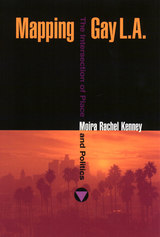 Mapping Gay L.A.: Intersection Of Place And Politics
Moira Rachel Kenney
Temple University Press, 2001 In this book, Moira Kenney makes the case that Los Angeles better represents the spectrum of gay and lesbian community activism and culture than cities with a higher gay profile. Owing to its sprawling geography and fragmented politic, Los Angeles lacks a single enclave like the Castro in San Francisco or landmarks as prominent as the Stonewall in Greenwich Village, but it has a long and instructive history of community building.
By tracking the terrain of the movement since the beginnings of gay liberation in 1960s Los Angeles, Kenney shows how activists laid claim to streets, buildings, neighborhoods, and, in the example of West Hollywood, an entire city. Exploiting the area's lack of cohesion, they created a movement that maintained a remarkable flexibility and built support networks stretching from Venice Beach to East LA. Taking a different path from San Francisco and New York, gays and lesbians in Los Angeles emphasized social services, decentralized communities (usually within ethnic neighborhoods), and local as well as national politics. Kenney's grounded reading of this history celebrates the public and private forms of activism that shaped a visible and vibrant community.
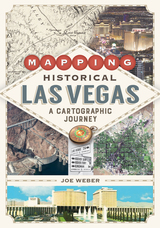 Mapping Historical Las Vegas: A Cartographic Journey
Joe Weber
University of Nevada Press, 2022 Las Vegas has a long and rich history that extends far beyond the clichés of “sin city,” the Mafia, Elvis, or mindless urban sprawl. Mapping Historical Las Vegas takes readers beyond stereotypical tales and provides an illustrated cartographic exploration of the entire region from the time of the ancient Anasazi farmers to the present. Weber shows the development of the surrounding area, revealing a geographical perspective on the city’s growth, including the influence of water, public land surveys, transportation routes, and the construction of casinos on Las Vegas’s evolution.
Reaching past the city limits, Mapping Historical Las Vegas also examines the development of public lands, military bases, and the canyons and valleys of the Colorado River before the Hoover Dam was built and Lake Mead was created. Weber also includes information on dams, highways, railroads, and other projects that were planned but never constructed— showing what might have been in one of the nation’s largest cities.
With 137 color maps generated using Geographic Information Systems, along with extensive mapping by Weber that draws on his decades of experience in the region, Mapping Historical Las Vegas offers a unique perspective on one of the world’s most famous desert cities.
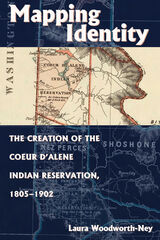 Mapping Identity: The Creation of the Coeur d'Alene Indian Reservation, 1805-1902
Laura Woodworth-Ney
University Press of Colorado, 2004 Mapping Identity traces the formation of the Coeur d'Alene Indian Reservation in northern Idaho from the introduction of the Jesuit notion of "reduction" in the 1840s to the finalization of reservation boundaries in the 1890s. Using Indian Agency records, congressional documents, Bureau of Indian Affairs (BIA) records, Jesuit missionary reports, and tribal accounts, historian Laura Woodworth-Ney argues that the reservation-making process for the Coeur d'Alenes reflected more than just BIA policy objectives. It was also the result of a complex interplay of Jesuit mission goals, the Schitsu'umsh chief Andrew Seltice's assimilationist policy, and political pressure from local non-Indians. Woodworth-Ney concludes that in creating the reservation, BIA officials and tribal leaders mapped boundaries not only of territory, but also of tribal identity. Mapping Identity builds on the growing body of literature that presents a more complex picture of federal policy, native identity, and the creation of Indian reservations in the western United States. It will be important to readers interested in western U.S. history, legal and administrative history, Native American history, and interior Northwest history.
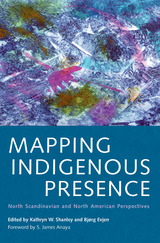 Mapping Indigenous Presence: North Scandinavian and North American Perspectives
Edited by Kathryn W. Shanley and Bjørg Evjen; Foreword by S. James Anaya
University of Arizona Press, 2015 Despite centuries of colonization, many Indigenous peoples’ cultures remain distinct in their ancestral territories, even in today’s globalized world. Yet they exist often within countries that hardly recognize their existence. Struggles for political recognition and cultural respect have occurred historically and continue to challenge Native American nations in Montana and Sámi people of northern Scandinavia in their efforts to remain and thrive as who they are as Indigenous peoples. In some ways the Indigenous struggles on the two continents have been different, but in many other ways, they are similar.
Mapping Indigenous Presence presents a set of comparative Indigenous studies essays with contemporary perspectives, attesting to the importance of the roles Indigenous people have played as overseers of their own lands and resources, as creators of their own cultural richness, and as political entities capable of governing themselves. This interdisciplinary collection explores the Indigenous experience of Sámi peoples of Norway and Native Americans of Montana in their respective contexts—yet they are in many ways distinctly different within the body politic of their respective countries. Although they share similarities as Indigenous peoples within nation-states and inhabit somewhat similar geographies, their cultures and histories differ significantly.
Sámi people speak several languages, while Indigenous Montana is made up of twelve different tribes with at least ten distinctly different languages; both peoples struggle to keep their Indigenous languages vital. The political relationship between Sámi people and the mainstream Norwegian government and culture has historically been less contentious that that of the Indigenous peoples of Montana with the United States and with the state of Montana, yet the Sámi and the Natives of Montana have struggled against both the ideology and the subsequent assimilation policy of the savagery-versus-civilization model. The authors attempt to increase understanding of how these two sets of Indigenous peoples share important ontological roots and postcolonial legacies, and how research may be used for their own self-determination and future directions.
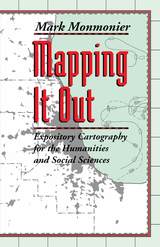 Mapping It Out: Expository Cartography for the Humanities and Social Sciences
Mark Monmonier
University of Chicago Press, 1993 Writers know only too well how long it can take—and how awkward it can be—to describe spatial relationships with words alone. And while a map might not always be worth a thousand words, a good one can help writers communicate an argument or explanation clearly, succinctly, and effectively.
In his acclaimed How to Lie with Maps, Mark Monmonier showed how maps can distort facts. In Mapping it Out: Expository Cartography for the Humanities and Social Sciences, he shows authors and scholars how they can use expository cartography—the visual, two-dimensional organization of information—to heighten the impact of their books and articles.
This concise, practical book is an introduction to the fundamental principles of graphic logic and design, from the basics of scale to the complex mapping of movement or change. Monmonier helps writers and researchers decide when maps are most useful and what formats work best in a wide range of subject areas, from literary criticism to sociology. He demonstrates, for example, various techniques for representing changes and patterns; different typefaces and how they can either clarify or confuse information; and the effectiveness of less traditional map forms, such as visibility base maps, frame-rectangle symbols, and complementary scatterplot designs for conveying complex spatial relationships.
There is also a wealth of practical information on map compilation, cartobibliographies, copyright and permissions, facsimile reproduction, and the evaluation of source materials. Appendixes discuss the benefits and limitations of electronic graphics and pen-and-ink drafting, and how to work with a cartographic illustrator.
Clearly written, and filled with real-world examples, Mapping it Out demystifies mapmaking for anyone writing in the humanities and social sciences.
"A useful guide to a subject most people probably take too much for granted. It shows how map makers translate abstract data into eye-catching cartograms, as they are called. It combats cartographic illiteracy. It fights cartophobia. It may even teach you to find your way."—Christopher Lehmann-Haupt, The New York Times
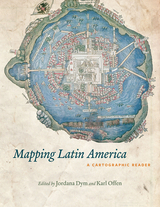 Mapping Latin America: A Cartographic Reader
Edited by Jordana Dym and Karl Offen
University of Chicago Press, 2011 For many, a map is nothing more than a tool used to determine the location or distribution of something—a country, a city, or a natural resource. But maps reveal much more: to really read a map means to examine what it shows and what it doesn’t, and to ask who made it, why, and for whom. The contributors to this new volume ask these sorts of questions about maps of Latin America, and in doing so illuminate the ways cartography has helped to shape this region from the Rio Grande to Patagonia.
In Mapping Latin America,Jordana Dym and Karl Offen bring together scholars from a wide range of disciplines to examine and interpret more than five centuries of Latin American maps.Individual chapters take on maps of every size and scale and from a wide variety of mapmakers—from the hand-drawn maps of Native Americans, to those by famed explorers such as Alexander von Humboldt, to those produced in today’s newspapers and magazines for the general public. The maps collected here, and the interpretations that accompany them, provide an excellent source to help readers better understand how Latin American countries, regions, provinces, and municipalities came to be defined, measured, organized, occupied, settled, disputed, and understood—that is, how they came to have specific meanings to specific people at specific moments in time.
The first book to deal with the broad sweep of mapping activities across Latin America, this lavishly illustrated volume will be required reading for students and scholars of geography and Latin American history, and anyone interested in understanding the significance of maps in human cultures and societies.
|
|

